
The Coming Wave: Technology, Power, and the Twenty-First Century's Greatest Dilemma
by
Mustafa Suleyman
Published 4 Sep 2023
—Stuart Russell, professor of computer science at the University of California, Berkeley “The Coming Wave is a realistic, deeply informed, and highly accessible map of the unprecedented governance and national security challenges posed by artificial intelligence and synthetic biology. Suleyman’s remarkable and in some senses frightening book shows what must be done to contain these seemingly uncontainable technologies.” —Jack Goldsmith, Learned Hand Professor of Law at Harvard University “Brilliant and inviting, complex and clear, urgent and calm, The Coming Wave guides us all to understand and confront what may be the most crucial question of our century: How can we ensure that the breathtaking, fast-paced technological revolutions ahead—AI, synthetic biology, and more—create the world we want? It’s not going to be easy, but Suleyman lays a strong foundation.
…
The coming wave of technology is built primarily on two general-purpose technologies capable of operating at the grandest and most granular levels alike: artificial intelligence and synthetic biology. For the first time core components of our technological ecosystem directly address two foundational properties of our world: intelligence and life. In other words, technology is undergoing a phase transition. No longer simply a tool, it’s going to engineer life and rival—and surpass—our own intelligence. Realms previously closed to technology are opening. AI is enabling us to replicate speech and language, vision and reasoning. Foundational breakthroughs in synthetic biology have enabled us to sequence, modify, and now print DNA.
…
What happens when a human mind has instantaneous access to computation and information on the scale of the internet and the cloud? It’s almost impossible to imagine, but researchers are already in the early days of making it happen. As the central general-purpose technologies of the coming wave, AI and synthetic biology are already entangled, a spiraling feedback loop boosting each other. While the pandemic gave biotech a massive awareness boost, the full impact—possibilities and risks alike—of synthetic biology has barely begun to sink into the popular imagination. Welcome to the age of biomachines and biocomputers, where strands of DNA perform calculations and artificial cells are put to work. Where machines come alive.
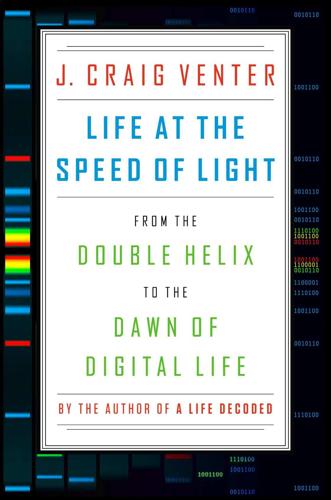
Life at the Speed of Light: From the Double Helix to the Dawn of Digital Life
by
J. Craig Venter
Published 16 Oct 2013
Some patients have been genetically altered via gene therapy, in which a software “patch” is used to treat genetic disorders such as immune deficiency, blindness, and the inherited blood condition beta-thalassemia. Genetic engineering has today evolved to be more commonly known as synthetic biology. The distinction between molecular biology and synthetic biology is blurred, and in most uses there is no actual distinction. “Synthetic biology” just sounds sexier, and in the same way, “systems biology” has replaced physiology, and some good old-fashioned chemists like to rebrand their efforts as nanotechnology. Whatever you want to call it, around the globe large numbers of scientists are pursuing genetic engineering by blending biology with engineering approaches.
…
This endeavor builds on tremendous advances over the last half-century, made by a range of extraordinarily gifted individuals in laboratories throughout the world. I will provide an overview of these developments in molecular and synthetic biology, in part to pay tribute to this epic enterprise, in part to acknowledge the contributions made by key leading scientists. My aim is not to offer a comprehensive history of synthetic biology but to shed a little light on the power of that extraordinarily cooperative venture we call science. DNA, as digitized information, is not only accumulating in computer databases but can now be transmitted as an electromagnetic wave at or near the speed of light, via a biological teleporter, to re-create proteins, viruses, and living cells at a remote location, perhaps changing forever how we view life.
…
We have made several trips to Capitol Hill to brief more than fifty members of Congress and have addressed the OSTP, the CIA, the National Science Advisory Board for Biosecurity (NSABB), the Presidential Commission for the Study of Bioethical Issues, and the Department of Homeland Security. Reports on synthetic biology have been issued by many bodies, such as the U.S. Department of Energy and the NSABB. Public consultations have been sponsored, as well, not only in America but in countries such as the United Kingdom.30 Delegates from leading institutions and associations came together at the OECD/U.S. National Academies/UK Royal Society Symposium, in July 2009, and considered the opportunities, threats, and wider questions posed by synthetic biology, such as what it means to be human. From any perspective, the discussions concerning precisely what it means to create synthetic life have been long, full, and open.
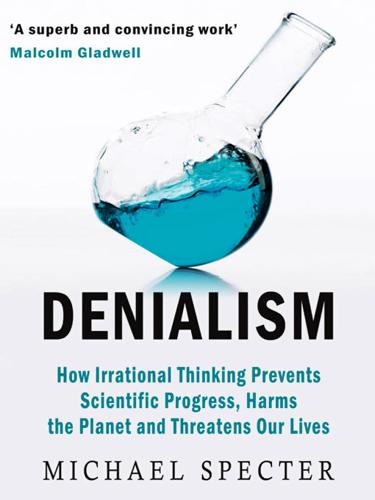
Denialism: How Irrational Thinking Hinders Scientific Progress, Harms the Planet, and Threatens Our Lives
by
Michael Specter
Published 14 Apr 2009
ETC has released many studies, all of which can be found on the group’s homepage (http://www.etcgroup.org/en/issues/synthetic_biology.html). The most important and comprehensive of them, Extreme Genetic Engineering, is here (http://www.etcgroup.org/en/issues/synthetic_biology.html). Scientists are often accused of ignoring the ethical implications of their work. It is worth nothing, then, that Craig Venter—the genomic world’s brashest brand name—embarked on a yearlong study of the ethical and scientific issues in synthetic biology before stepping into the lab. Synthetic Genomics: Options of Governance, by Michele S. Garfinkel, Drew Endy, Gerald L.
…
Although artemisinin has become the world’s most important malaria medicine, Keasling wasn’t up on infectious diseases. But he happened to be in the process of creating a new discipline, synthetic biology, which, by combining elements of engineering, chemistry, computer science, and molecular biology, seeks nothing less than to assemble the biological tools necessary to redesign the living world. No scientific achievement—not even splitting the atom—has promised so much, and none has come with greater risks or clearer possibilities for deliberate abuse. If they fulfill their promise, the tools of synthetic biology could transform microbes into tiny, self-contained factories—creating cheap drugs, clean fuels, and entirely new organisms to siphon carbon dioxide from the atmosphere we have nearly destroyed.
…
Scientific response has been largely reverential—it is, after all, the first bona fide product of synthetic biology, proof of a principle that we need not rely on the unpredictable whims of nature to address the world’s most pressing crises. But there are those who wonder what synthetic artemisinin will mean for the thousands of farmers who have begun to plant the crop. “What happens to struggling farmers when laboratory vats in California replace [wormwood] farms in Asia and East Africa?” asked Jim Thomas, an activist with ETC Group, a technology watchdog based in Canada. Thomas has argued that while the science of synthetic biology has advanced rapidly, there has been little discussion of the ethical and cultural implications involved in altering nature so fundamentally, and he is right.
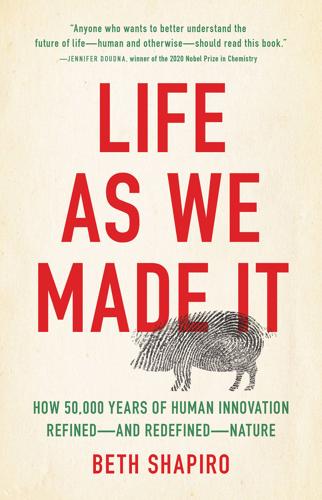
Life as We Made It: How 50,000 Years of Human Innovation Refined--And Redefined--Nature
by
Beth Shapiro
Published 15 Dec 2021
A new family of technologies loosely referred to as genetic engineering, and a new field of research—synthetic biology—that takes advantage of genetic engineering technologies, can improve our experimental precision. Using genetic engineering technologies, dog breeders could repair a disease-causing mutation without sacrificing breed-specific traits, and cattle breeders could move disease resistance between breeds without also introducing phenotypes that are locally maladaptive. Synthetic biology also expands our experimental horizons. We can move traits that evolved in one species into a different species—one with which it would never naturally mate.
…
For now, the local communities believe that the potential dangers of rodenticides are worth the rewards. The Island Conservation team agrees but is also looking toward the future, where it sees a new, safer solution in synthetic biology. It’s joined forces with an international team of scientists and nonprofit organizations to form the Genetic Biocontrol of Invasive Rodents program. The program’s goal is to engineer rats that cannot reproduce by inserting a mutation into their DNA that makes them sterile. As an approach to invasive species management, synthetic biology promises to be more efficient than manual removal and both more humane and safer for the environment than poisoning. It also, however, pushes us deeper into the role of masters of other species’ evolutionary future.
…
Then scientists will walk through this list, using the tools of synthetic biology to alter the genome one candidate gene at a time, testing the efficacy of each edit until something works. Ultimately, this process will create a genetically engineered black-footed ferret that is identical in every way to today’s captive-bred black-footed ferrets except that it will be immune to plague. This work has already begun. In 2018, Revive & Restore, a nonprofit whose goal is to support biotechnological solutions in conservation, received a permit from the US Fish and Wildlife Service to explore using synthetic biology to save black-footed ferrets from extinction.
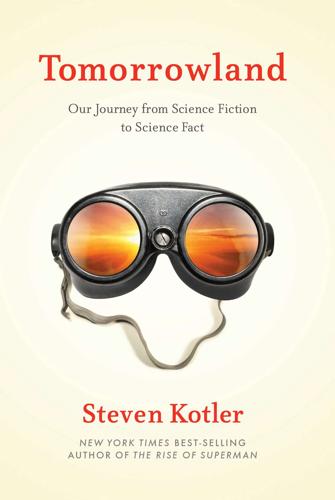
Tomorrowland: Our Journey From Science Fiction to Science Fact
by
Steven Kotler
Published 11 May 2015
In his response, Howard went off on the kind of delicious, head-spinning tangent for which he is famous. Along the way, he also managed to sum up both the ideas in this chapter and the ideas in this book as a whole. Technically, this chapter is about the upstart field of synthetic biology — a technology with both incredible and dangerous implications. But before we get to those dangers, it’s worth pausing to consider what’s really going on here. Synthetic biology unlocks one of the universe’s deepest secrets — the mystery of life, the formula for creation. It is quite a long step forward. Or, as Howard Bloom so eloquently puts it: “It’s time to abandon the Greek idea that hubris is bad and face a simple fact — hubris is what the cosmos seems to want from us.
…
In 2004, for example, Jay Keasling, a biochemical engineer at Berkeley, stitched together ten synthetic genes from three different organisms to create a novel yeast that can manufacture artemisinic acid, the precursor to the antimalarial drug artemisinin, natural supplies of which are extremely low. The work would have been next to impossible without synthetic biology. Meanwhile, Venter’s company, Synthetic Genomics, is working on a designer algae that consumes CO2 and excretes biofuel; it is also trying to develop synthetic flu-fighting vaccines made in days instead of the six to eight months now required. Solazyme, a synthetic biology company based in San Francisco, is making biodiesel with engineered microalgae. Material scientists are also getting into the act; DuPont recently designed an organism that utilizes corn syrup to create a widely used polymer base for plastics manufacturing, saving 40 percent on energy costs.
…
Imagine organisms that can thrive in battery acid or on the surface of Mars, or enzymes able to polymerize carbon into diamonds or nanotubes. The ultimate limits to synthetic biology are hard to discern, and have yet to be explored. All of this means that our interactions with biology, already complicated, are about to get a whole lot worse. Intentionally or accidentally, mixing code from multiple species together or creating entirely novel organisms could easily have unintended consequences. Even in labs with high standards for safety, accidents happen. If those accidents involve breaches in containment procedures, a harmless bacterium could become an ecological catastrophe. A 2010 synthetic biology report by the US Presidential Commission for the Study of Bioethical Issues said as much: “Unmanaged release could, in theory, lead to undesired cross-breeding with other organisms, uncontrolled proliferation, crowding out of existing species and threats to biodiversity.”

Whiplash: How to Survive Our Faster Future
by
Joi Ito
and
Jeff Howe
Published 6 Dec 2016
iGEM isn’t your traditional science fair, but then, synthetic biology—creating new genetic sequences to program living things with new properties and functions, like new forms of chocolate or a yeast that produces an antimalarial drug—isn’t your traditional scientific discipline. “There was a time when science advanced by locking small teams of researchers up in their labs until they produced some minor breakthrough,” says Randy Rettberg, the former MIT scientist who helped start iGEM. “Science won’t work that way in the future, and synthetic biology doesn’t operate that way now.15 Having emerged in the era of open-source software and Wikileaks, synthetic biology is becoming an exercise in radical collaboration between students, professors, and a legion of citizen scientists who call themselves biohackers.
…
“Science won’t work that way in the future, and synthetic biology doesn’t operate that way now.15 Having emerged in the era of open-source software and Wikileaks, synthetic biology is becoming an exercise in radical collaboration between students, professors, and a legion of citizen scientists who call themselves biohackers. Emergence has made its way into the lab. As far as disciplines go, synthetic biology is still in its infancy, but it has the potential to impact humanity in ways we can scarcely imagine. Molecular computers could pick up where the silicon chip leaves off, packing a supercomputer onto the head of a pin. The entire human race could be reprogrammed to be immune to all viruses. Reengineered E. coli could poop out enough jet fuel to power an airliner across the Atlantic.16 Imagine giant collecting ponds of the bacteria capable of satisfying the global thirst for fossil fuel.
…
Try one of the boutique, pint-sized elephants on offer at the local GeneFab, or program your own. “You can’t predict the future of a scientific field,” says George Church, a geneticist at Harvard and MIT. Church is often criticized for hyping the field of synthetic biology—he has promoted the idea of “de-extincting” the Neanderthal and the woolly mammoth17—but in person he seems less a provocateur than a realist. Asked whether some of the more outlandish ideas around synthetic biology were far-fetched, he shrugged and pointed out that no one could have predicted the emergence of an easy, high-speed technology that would allow us to map the human genome. “Gene sequencing is declining in price and increasing in speed at a rate six times that of Moore’s law,” Church says.
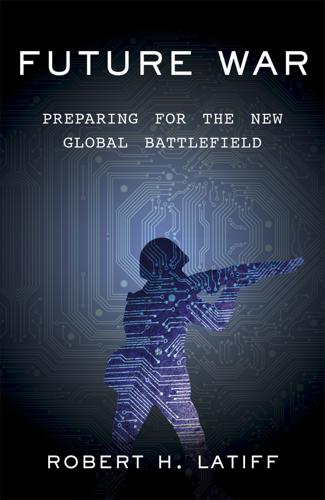
Future War: Preparing for the New Global Battlefield
by
Robert H. Latiff
Published 25 Sep 2017
History has demonstrated that in times of crisis: James Waldo, Herbert Lin, and Lynette I. Millett, Engaging Privacy and Information Technology in a Digital Age (Washington, DC: National Academies Press, 2007), 349–65. Synthetic biology is an emerging area: Royal Society, “Call for Views: Synthetic Biology,” June 2007, https://royalsociety.org/~/media/Royal_Society_Content/policy/projects/synthetic-biology/CallForViews.pdf. It holds great promise: Office of Technical Intelligence, Technical Assessment: Synthetic Biology (Washington, DC: Department of Defense, January 2015). So worrisome is the CRISPR capability: Kathryn Ziden, “The Dark Side of CRISPR,” Potomac Institute for Policy Studies Center for Revolutionary Scientific Thought, September 20, 2016.
…
Also, as we have seen with the unending reports of data theft, from Target Corporation to the Office of Personnel Management, security of information is always a primary concern. Synthetic biology is an emerging area of research that can broadly be described as the design and construction of novel artificial biological pathways, organisms, or devices, or the redesign of existing natural biological systems. It holds great promise for new drugs, materials, and fuels. It may also lead to the development of new and dangerous organisms with as yet unimagined characteristics. Synthetic biology clearly has the potential to provide new physiological functions and improved performance. I talked recently with Dr.
…
He is also a student of moral philosophy with an abiding interest in technology ethics. IARPA, too, supports research in synthetic biology directed, naturally, to the prediction of future threats to the United States. Dr. Matheny also expressed to me his serious ethical concerns about the conduct of leading-edge biology research, describing the intense oversight his agency provides. Of further concern are the increased numbers of people—of all motivations—who are able to engage in synthetic biology. In fact, the International Genetically Engineered Machine (iGEM) Foundation conducts programs and international competitions for high school students.
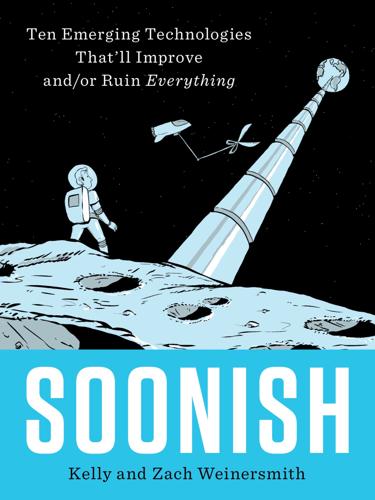
Soonish: Ten Emerging Technologies That'll Improve And/or Ruin Everything
by
Kelly Weinersmith
and
Zach Weinersmith
Published 16 Oct 2017
The DNA just has a chunk that says to make a certain chemical—can’t we change that chunk of code to something else? This is the promise of synthetic biology. If you can create new pieces of DNA and insert them where you like into an organism, you can create biology that never would have been. Molecular machines that might turn cancer cells into normal cells. Pest organisms that help kill off their own kind. Or even just general purpose organisms awaiting our instructions. It’s life, made to order. Where Are We Now? Synthetic biology as we currently know it began in the 1970s. The early methods were complex and cumbersome. Still, a lot of what we take for granted about modern life comes from this era.
…
That sounds nice, but it’s a problem if the information is how to make smallpox from scratch. Ultimately, synthetic biology should give humans the power to have organisms made to order. As that technology becomes cheap, the ability to bring back diseases for which we no longer vaccinate might become something you could do on your desktop. Consider smallpox: After 1980, we stopped vaccinating because it was mostly gone.* This disease may have killed half a billion people in the twentieth century, and most living people have no immunity to it. If synthetic biology became easy, what would stop a rogue biologist (or just an angry geek) from bringing it back?
…
Craig Venter Institute, 214–15 Jell-O, 298 Jell-O shots, 161 jet fuel, 209–10, 218 Jin, Yaochu, 122 joinery, 143–44 Joint BioEnergy Institute, 210 Joint European Torus (JET), 89 Josephson, Brian, 5–6 Josephson junction, 6 Jurassic Park (film), 222 Kazakhstan, 100 Keasling, Jay, 199 Keating, Steven, 146–48, 153, 155, 253 Kennedy, Philip, 315–17 Kevlar, 35 Khoshnevis, Behrokh, 145, 146, 147, 158 kidneys (organ), 280 Kilobot project, 115, 119 Kohler, Matthias, 152 Kurman, Melba, 159 Lake Chagan, 100 lasers, 2, 27–29, 84, 86–87 Law of the Sea, 33 leukemia, 238, 239, 242 Leuthardt, Eric, 303, 314–15 Levin, Gilbert, 334 levitation, 326–27 LiDAR, 174 life insurance, 250 LIFT (laser-induced forward transfer), 265–66 Limited Test Ban Treaty (LTBT), 99 Lipschultz, Bruce, 91–92, 93 Lipson, Hod, 159 Lipton, Jeffrey, 162 liquid hydrogen, 39 liquid oxygen, 20, 39 lithium, 77 LIT ROOM, 110–11 livers (organs), 257–59, 260–61, 280 lizards, 187 locked-in syndrome, 316 Lockheed Martin, 90 lossless power transmission, 325 Low Earth Orbit (LEO), 14, 15–16, 21, 34, 38 Lowther, William, 50 lung cancer, 238–40 lungs (organ), 261 Lyme disease, 255 lymphoma, 242 McAlpine, Michael, 271 McCracken, Garry, 77 Magee, John Gillespie, Jr., 13 “magic book,” 176 MagLIF (Magnetized Liner Inertial Fusion) project, 87–88 “magnetic confinement”-type reactors, 85 magnetic levitation (MagLev) trains, 24–25, 30, 327 magnetosphere, 59 magnets, 5 MakerBot, 162 malaria, 198–203, 207 mammoth genome, 222–24 Mankins, John, 320 marble, 144 marching bands, 119–20 Mars, 19, 40, 45n, 52, 55, 158–59 Mars One project, 45n Masiello, Carrie, 210–11 Massachusetts General Hospital, 242 Massachusetts Institute of Technology (MIT), 102, 103, 104, 106, 107n, 108, 214, 216 Mediated Matter lab at, 146 Plasma Science and Fusion Center at, 91 matching markets, 275–81 Matthews, Kirstin, 250 Maus, Marcela, 242–43 Max Planck Institute for Infection Biology, 212 µBiome, 2 M-blocks, 118 MD Anderson Cancer Center, 232, 234 Mediated Matter lab, 146 medical tourism, 272 medical trials, 254–55, 268–69 medicine, 221 augmented reality in, 179, 185–86 bioprinting and, see bioprinting origami robots in, 106–7 programmable matter in, 127–28 synthetic biology in, 198–207 see also precision medicine Meetup.com, 175, 179 MEG (magnetoencephalography), 289–90, 291 Meissner effect, 326 meltdown, 91–92 memory, 220, 304, 307–8, 311 Mendelsohn, John, 232, 234 Meng, Yan, 122 Menges, Achim, 104 Menon, Sandeep, 235 messenger RNA, 193 metabolome, 244–46 meteorites, 53, 67 Michigan Array, 296, 298 microRNA, 239–40, 246–47 Microsoft, 272 Miller, Jordan, 261, 269, 270–71, 274 miniaturization, 176 “Minibuilders,” 151–52 miRBase, 240 mirror humans, 332–35 MIT Technology Review, 6n molds, configurable, 134 molecular scissors, 212, 213–14 molecules, mirror, 334 monogenic traits, 196–97 mononucleosis, 230 moon, 55 moon landing, 19 moral hazard, 273–74 Moravec’s Paradox, 139 mosquitoes, 200, 203, 218 Mossad, 50 motion sickness, 168 movies, 183 MRI (magnetic resonance imaging), 290–91 M-type (metal) asteroids, 53, 54 mucociliary escalator, 187–88 mucus, 236 Mukhopadhyay, Aindrila, 210 multiverse, 329 Munger, Steven, 334–35 Musk, Elon, 19 mutation breeding, 191–92 mutations, 219, 236–37 Mycoplasma genitalium, 214–15 Mycoplasma laboratorium, 215 Mycoplasma mycoides, 215n Nagasaki bombing, 98 nano-bio-machines, 3 nanobots, 118 nanotechnology, 221 NASA Innovative Advanced Concepts (NIAC), 25, 31, 35 nasal cycle, 186–89 nasal venous sinusoids, 188 NASA (National Aeronautics and Space Administration), 20, 47, 60, 65, 92, 158, 159–60 National Academy of Sciences, 203 National Cancer Institute, 238 National Defence Department, Canada, 47 National Ignition Facility (NIF), 86–87 National Institutes of Health, 214, 234, 235 Native Americans, 196n natural gas, 73, 98–99 Nebraska, University of, 176 Neufert, Ernst, 135 neural dust, 299 neural implants, 310 Neurobridge, 312 neuro-cyber-connection, 312–13 neurons, 286–87, 290, 298, 306 EEGs and, 287–90 NeuroPace, 302 neuroprosthetics, 311, 315, 322, 324 neurotrophic electrodes, 297–98, 315, 316 Neutron Club, 80 neutron gun, 80–81 neutrons, 73, 91 New Jersey, 299 New Mexico, 96 nickel, 54 Nocera, Dan, 208 North Carolina State University, 63 Norway, 22n nostrils, 186–89 Nuclear Explosions for the National Economy, 100 nuclear reactors, 58 Nucleon (concept car design), 97 nucleus, 192, 193 nutrition, 245–46 Olestra, 334 Oliver, John, 326n Open Humans Foundation, 252n “optical mining,” 63 orbiting factory, 24 organ donation, 257n organ markets, 274, 275–81 Organovo, 268 organ rejections, 275 organ sales, 258, 280–81 organ transplant list, 257–58, 272 organ transplants, 206–7 origami robots, 105–8, 129 OSIRIS-REx, 65 “Our Friend the Atom” (Disney cartoon), 97 Outer Space Treaty (1967), 63–64 oxidizer, 20 Oxman, Neri, 146, 148 oxygen, 208–9 oxygen deprivation, 205 oxygen gas, 82 Pacific Ocean, 35–36 Paddon, Chris, 199 Palo Alto Research Center, 116 Panama Canal, 97 pancreas, 236 parallel universe, 329 paralysis, 312 Parkinson’s disease, 301 patenting, 124 patent law, 272 peacekeepers, 181 Pennsylvania, University of, 108 Personal Genome Project, 252–53 personal security, 124–25 PERVs, 207 pesticides, 200 Petersen, Kirstin, 149, 150–51 Pfizer, 235 phobias, 179 Phobos (moon of Mars), 55 phosphenes, 306 photosynthesis, 208 Picon, Antoine, 138 pigs, 206 Piraha (Amazonian tribe), 140n Pitt, Brad, 167 Plait, Phil, 36, 38 plants, 125 Chinese sweet wormwood, 198–99 plasma, 85, 88 Plasma Science and Fusion Center, 91 platinum, 52, 55 pluripotent stem cells, 273 plutonium, 58 pogo sticks, 27 Pokémon GO, 8n, 166, 182–83 pollution, 94 porcine endogenous retroviruses (PERVs), 207 positive transcriptional autoregulation, 205n potassium iodide pills, 60 poverty, 157 precision medicine, 229–56 benefits of, 254–56 cancer diagnosis, treatment, and monitoring in, 238–44 concerns about, 248–53 data collection in, 234–35 genetic disorders and, 235–37 metabolome and, 244–46 privacy issues in, 248, 250–53 Precision Medicine Initiative Cohort Program, 234 predictive ability, 1–2 Princeton University, 142, 271 privacy issues, 130, 182, 248 of AR, 180–81 in brain-computer interfaces, 309–10 in precision medicine, 248, 250–53 programmable matter, 101–32 benefits of, 125–29 computers as, 101 concerns about, 122–25 in everyday life, 105 hacking of, 122–23 military applications of, 123–24 origami robots as, 105–8 power for, 118 reconfigurable houses and, 109–11 see also robots programmed materials, 103–5 Project Babylon, 48–49 Project Esper, 185 Project HARP (High Altitude Research Project), 47, 48 Project Plowshare, 96–100 Project Rulison, 98 Promobot, 129 Promobot IR77, 129 propellants, 14–15, 18, 20, 23 prostate cancers, 239n, 247 prosthetics, advanced, 322–24 proteins, 193, 194, 195, 221, 234, 239, 332 protium, 73 protons, 73, 77 Pryor, Richard, 328n QR code, 169–71 quantum computing, 328–30 quantum mechanics, 329, 330 Quinn, Roger, 151n radiation, 59–60, 62, 99 radiation therapy, 241 radioactive waste, 91 railgun, electromagnetic, 24–25 ramjet, 21, 22, 26 Reaction Engines, 22 Recognizer, 180 Reconfigurable House exhibit, 111 recycled fecal matter, 160 recycling, 128 Reece, Andrew, 247 refining, 56 refrigeration, 4 “Registry of Standard Biology Parts,” 216 Reichert, Steffen, 104 Reiss, Louise and Eric, 99 RepRap, 269–70 “repugnance,” in markets, 276 reuse, 128 ribosome, 193–94, 195 Rice University, 200n, 210, 250, 261 rigid airship, 29–30 Ringeisen, Bradley, 259 RNA, 193–94, 195, 332 RNS System, 302 Robinette, Paul, 130 Robot Baby Project, 120n robotic construction, 134–63 benefits of, 156–59 concerns about, 153–56 and space travel, 158–59 swarm robots in, 149–53 3D printing for, 144–49 robots, 102, 129–32 autonomous, 113–16 as construction workers, 139–44 coordinating movement of many, 119–22 evolving of, 120–22 generalization in, 142 industrial, 136 in medicine, 127–28 modular, 112–16 neuroprosthetics and, 311 origami, 105–8, 129 termite-inspired, 150–51 see also programmable matter rocket launches, 3 rockets, 23, 39 air-breathing, 19–24 aircraft-launched, 29–30 cost of, 14 laser ignition for, 27–29 propellant for, 14–15, 18, 20, 23 reusable, 14, 15, 18–19, 39 simplicity of, 22 stages of, 18n rocket sled, 25, 26 rockoon, 29 rod from God, 38 roller coaster, 23, 42 Romanishin, John, 118 Roombots, 112–13, 121, 127 Roth, Alvin, 276, 277, 279, 280 “Ruby Red” grapefruit, 192 Rus, Daniela, 106–7, 108, 118, 128 Russia, 67, 99, 217n SABRE (Synergetic Air-Breathing Rocket Engine), 22 Saddest Generation, 166 Safe Is Not an Option: Overcoming the Futile Obsession with Getting Everyone Back Alive That Is Killing Our Expansion into Space (Simberg), 44 Sahara Desert, 321 SAM (robot), 141, 142, 153–54 Sandia Labs, 85, 87 San Francisco, Calif., 154 sanitation, 157 satellites, 20, 34, 41, 47 Schalk, Gerwin, 313 Schall, Gerhard, 177 Schrödinger’s cat, 329 Schrödinger’s Killer App (Dowling), 330n Schwenk, Kurt, 187 See No Evil, Hear No Evil (film), 328n seizures, 300, 301, 302 Select Sires, Incorporated, 197n self-driving cars, 123 Sensorama, 168 Shapiro, Beth, 222, 223–24 Shotwell, Gwynne, 19 Shtetl-Optimized (blog), 330n Siberia, 224 sickle cell amenia, 237 Silberg, Joff, 210–11, 218–19 silicon, 52, 54 Silver, Pamela, 204, 205–6, 208–10, 219 Simberg, Rand, 44 Skylon, 22 Skype, 314 Skywalker, Luke (char.), 324 Slingatron, 25–26 slums, 157 smallpox, 216, 217 Smart Helmet, 179 “smart homes,” 111 smartphones, 169 smell, sense of, 174–75, 186–89, 334 Smith, Noah, 153n, 154 snakes, 187 social media, 248, 250 privacy issues of, 180–81 software, 102, 104–5, 124 hacking of, 122 solar flares, 60 solar panels, 58 cost of, 320 solar photovoltaic cells, 92, 208 solar power, space-based, 319–21 solar wind, 37 Solid Freeform Fabrication Symposium, 162 solid rocket boosters, 39 solid tumors, 238, 240–41 Solomon, Scott, 200n sound, speed of, 21 South Africa, 48 Southern California, University of, 145, 308 Soviet Union, 38, 58, 99, 100, 135 space cannon, 23–26 space debris, 39–40 space elevators, 31–38, 39, 41, 42–43, 314, 320 spaceflight, 13–50 air-breathing rockets and spaceplanes for, 19–24 benefits of, 41–45 concerns about, 38–40 cost of, 41, 44–45 present cost of, 13–14 reusable rockets for, 18–19 space elevators and tethers for, 31–38 starting at high altitude, 29–30 spaceplanes, 19–24, 39 space settlements, 40 Space Shuttle, U.S., 18, 39 space tethers, 31–38 space tourism, 42 space travel: fusion energy in, 94 supergun for, 23–26 SpaceX, 8n, 18–19, 30 spatial resolution, 288, 289, 292–93 spearmint, 334 spinal damage, 312 Sputnik, 39 SR-71 spy plane, 21 Starbucks, 180 Star Trek franchise, 34, 86 Star Wars franchise, 78n, 82, 263 steam turbine, 76 stem cells, 263, 272–73 Stevens Institute of Technology, 92, 122 STL-file, 267 storytelling, 178 stratospheric spaceport, 29–30 straw, reconfigurable, 103–4 stress, 246 stroke, 247 strong nuclear force, 77 strontium-90 (Sr-90), 99 Stuttgart, University of, 104, 143 S-type (stony) asteroids, 53, 54 sugar molecules, 210 sugar sintering, 270–71 sun, 59, 78 Sung, Cynthia, 108, 119, 127 superconducting levitation, 326–27 superconducting quantum interference device (SQUID), 4, 6, 290 superconductors, 4–6 room-temperature, 325–28 supergun, 46–50 supersonic ramjet (“scramjet”), 21–22, 26, 126 Sure Shot Cattle Company, 197n surgery, 185–86 Surrey, University of, 122 swarm bots, 119–20, 121–22 SWARMORPH project, 113–15 swarm robots, 149–53 switchgrass, 209–10 Switzerland, 22n SYMBRION, 115 Syn 3.0, 215 synthetic biology, 190–225 benefits of, 220–21 concerns about, 216–19 environmental monitoring by, 210–12 fuel production by, 208–10 generalizing of, 212–14 grassroots approach to, 216 “Synthetic Biology for Recycling Human Waste into Food, Nutraceuticals, and Materials: Closing the Loop for Long-Term Space Travel” project, 160 synthetic materials, 101–2 syphilis, 230n Syria, 156 Systems & Materials Research Consultancy, 159 T cells, 242–43 technology, 3–4 asteroid-moving, 67 contingent nature of development of, 3–7 discontinuous leaps in, 2 Telegraph, 183 Teller, Edward, 98 temporal resolution, 288, 292–93 Terminator (film), 103 termites, 120, 149, 150–51 terrorism, 36, 38, 217 Tethers Unlimited, 63 tetracycline, 200 theft, 130 3D printers, 144–49, 151–52, 259 prosthetics and, 322 3D printing, 125, 152 of food, 159–63 of organs, see bioprinting software for, 267 3554 Amun, 53 Throw Trucks with Your Mind (game), 312 thyroid, 60 Tibbits, Skylar, 103–5, 118, 123, 126 titanium, 35 “tokamak” configuration, 88, 92 tornados, 25 touch, sense of, 175 Tourette’s syndrome, 301 transcranial magnetic stimulation, 302, 304 transfer RNA, 193–94, 195 Transformers series, 102 The Tree of Life (Web site), 234n tritium, 74, 77n, 91 tumor cells, 205 tumors, 290 “Tunable Protein Piston That Breaks Membranes to Release Encapsulated Cargo, A” (Silver, et al.), 206 “Tunguska event” (1908), 67 turbofan engine, 20–21, 22 Turner, Ron, 35, 36, 37 23andMe, 251, 252 Twitter, 20n, 187, 250 Two and a Half Men (TV show), 310 Type II superconductors, 326 Umbrellium (Haque Design + Research), 111 Underground Railroad, 178 UN-Habitat, 157 Unilateral Forced Nostril Breathing (UFNB), 189 United Nations, 96 United States, 39, 135–36 Universal Semen Sales, Inc., 197n uranium, 58 U.S.

Bold: How to Go Big, Create Wealth and Impact the World
by
Peter H. Diamandis
and
Steven Kotler
Published 3 Feb 2015
“It’s super early, but it will hit very, very quickly, and we’ll look back on 2013 . . . as a year for robotics coming into its own.” Genomics and Synthetic Biology Throughout the past few chapters, we’ve been examining exponentials poised to explode over the next three to five years and seeing how these technologies reinforce and empower one another—the rise of cloud computing enables more capable and ubiquitous AI, which in turn allows the average entrepreneur to program robots. To close this chapter, we’re going to examine synthetic biology, a technology that’s a little further out—say, five to ten years—but is still transitioning from deception to disruption.
…
With genetic engineering, we’ve been inserting a gene or two from this organism into that organism—such as taking the DNA that makes jellyfish glow and, as South Korean researchers did in 2007, inserting it into cats to create, you guessed it, glow-in-the-dark cats.57 The difference with synthetic biology is that it’s not just individual letters being swapped out—it’s whole genomes. “Synthetic biology is essentially genetic engineering gone digital,” explains synthetic biologist and Autodesk distinguished researcher and S. U. professor Andrew Hessel.58 “Used to be all this stuff was done by hand in the lab, with enormous expense and high error rates.
…
Right now your toothpaste is mostly chalk and flavoring, but with synthetic biology, it can be specifically designed to fight your breed of bad breath microbes. “That’s not all,” continues Hessel. “It can have tooth-polishing nanoparticles designed to continue cleaning long after you’ve stopped brushing. It can be designed to detect infection or cancer or diabetes, turning different colors in the presence of each, or to release custom-designed probiotics that balance your microbiome. It can do all of these things. And that’s just the first thing you do in the morning.” To many, synthetic biology still sounds like science fiction, but what is transforming it into science fact is the same force driving all the other exponential technologies—Moore’s law.
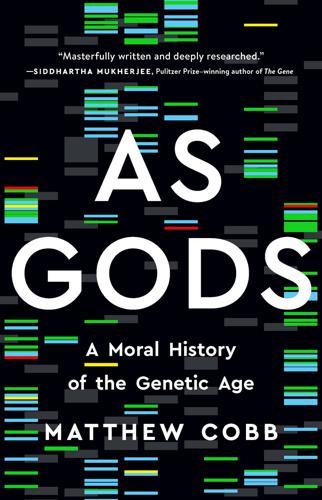
As Gods: A Moral History of the Genetic Age
by
Matthew Cobb
Published 15 Nov 2022
The study was led by Mark Buller; I could find no trace of it being published. 52 Finkel, E. (2001), Science 291:585; Ball, P. (2001), Nature 411:232–5. 53 Pontin (2006). 54 Stanford, M. and McFadden, G. (2005), Trends in Immunology 26:339–45, p. 339. 55 Lane, H., et al. (2001), Nature Medicine 7:1271–3. 56 Dance, A. (2021), Nature 598:554–7. 57 Enserink, M. (2003), Science, 8 October 2003; Tucker, J. (2006), International Security 31:116–50. 58 Beck, V. (2003), EMBO Reports 4:S53–6. 59 Ledford, H. (2012), Nature 481:9–10. 60 Pontin (2006). 61 Rosengard, A., et al. (2002), Proceedings of the National Academy of Sciences USA 99:8808–13. 62 Cello, J., et al. (2002), Science 297:1016–8. 63 Shimono, N., et al. (2003), Proceedings of the National Academy of Sciences USA 100:15918–23; Smith, H., et al. (2003), Proceedings of the National Academy of Sciences USA 100:15440–5. 64 Wang, N., et al. (2018), Virologica Sinica 33:104–7. 65 Tumpey, T., et al. (2005), Science 310:77–80. 66 van Aken, J. (2007), Heredity 98:1–2; von Bubnoff, A. (2005), Nature 437:794–5. 67 Atlas, R. (2002), Science 298:753–4. 68 Rappert, B. (2015), Frontiers in Public Health 2:74. 69 Wein, L. and Liu, Y. (2005), Proceedings of the National Academy of Sciences USA 102:9984–9. 70 Davies, J. (2018), Synthetic Biology: A Very Short Introduction (Oxford, Oxford University Press). 71 Drexler, K. (1981), Proceedings of the National Academy of Sciences USA 78:5275–8. 72 Gardner, T., et al. (2000), Nature 403:339–42; Elowitz, M. and Leibler, S. (2000), Nature 403:335–8. 73 Carlson, R. (2010), Biology is Technology: The Promise, Peril, and New Business of Engineering Life (London, Harvard University Press). 74 Davies, Synthetic Biology, p. 118. 75 Carlson, R. (2003), Biosecurity and Bioterrorism: Biodefence Strategy, Practice, and Science 1:203–14. 76 Tucker, J. (2010), Issues in Science and Technology 26(3). 77 The Guardian, 14 June 2006. 78 Wolinetz, C. (2012), Science 336:1525–7. 79 Andrianantoandrou, E., et al. (2006), Molecular Systems Biology 2006:0028. 80 Marris, C., et al. (2014), BioSocieties 9:393–420. For recent revivals of enthusiasm for synthetic biology, see for example: New York Times, 23 November 2021; New Yorker, 7 March 2022; Webb, A. and Hessel, A. (2022), The Genesis Machine: Our Quest to Rewrite Life in the Age of Synthetic Biology (New York, Public Affairs). 81 For measured explorations of synthetic biology’s promises and significance (or not), see these two excellent collections: Boldt, J. (ed.) (2016), Synthetic Biology: Metaphors, Worldviews, Ethics, and Law (Wiesbaden, Springer); Schmidt, M., et al. (eds) (2010), Synthetic Biology: The Technoscience and its Societal Consequences (London, Springer). 82 Acevedo-Rocha, C. (2016), in K.
…
The science fiction promises that synthetic biology would lead to the development of smart therapies ‘where the therapeutic agent can perform computational and logic operations and make complex decisions’ turned out to be just that – science fiction.79 Leading researchers in the field gradually became more measured in their claims about synthetic biology’s supposed revolutionary potential and ease of application, although these are still regularly repeated.80 Many scientists – me included – are not entirely convinced that synthetic biology even exists as a specific discipline, beyond a modularly minded version of genetic engineering. However, when I stated this on Twitter at the beginning of 2022, Fyodor Urnov replied that ‘in my field, genomic therapies, synthetic biology is very much a thing. It refers to design and deployment in the clinic of entirely engineered molecular circuits.
…
As these extraordinary developments demonstrate, despite suggestions that the democratisation of synthetic biology would lead to a start-up revolution, a great deal of skill, knowledge, equipment and teamwork is required to do anything really interesting. After an initial period of enthusiasm, the hacker side of synthetic biology faded and their online communities dwindled.90 Similarly, security fears about terrorists acquiring biological weapons declined as tragic events around the world demonstrated that the terrorists’ murderous purpose could be served quite simply by vehicles, kitchen knives and home-made explosives. Although synthetic biology is still often used as a catch-all term to describe dual-use research of concern, far more tangible threats to international biosecurity emerged exactly where you might expect – in fancy high-tech biology laboratories carrying out government-funded genetic engineering research into terrifying pathogens.91 ✴ In September 2011, Rotterdam virologist Ron Fouchier spoke at a European meeting on influenza, held in Malta.
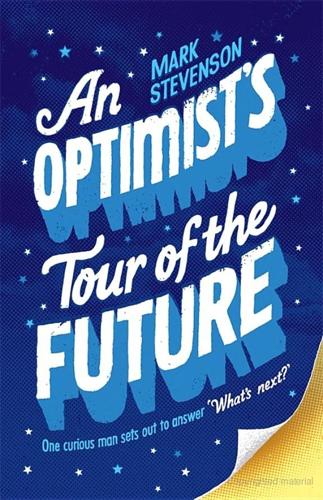
An Optimist's Tour of the Future
by
Mark Stevenson
Published 4 Dec 2010
The US National Science Advisory Board for Biosecurity is fostering international dialogue of biosafety issues, as are both the World Health Organisation and the UN (the latter considering how the existing Biological Weapons Convention can be enhanced to encompass synthetic biology). The commercial syn-bio industry too has several overlapping initiatives – the International Association Synthetic Biology, the International Gene Synthesis Consortium and the Consortium for Polynucleotide Synthesis. In particular, members of these consortia are beginning to implement the scanning of DNA orders – making sure no one is ordering anything that looks like a pathogen.
…
Sadly there is no equivalent of ‘multiplex genome engineering and accelerated evolution’ for policy makers – giving us four billion biosecurity frameworks to choose from by tomorrow. As ever, the science is moving faster than we are. So, we’ll have an accident. Synthetic biology will have its Three Mile Island, its Windscale, its Chernobyl. And somewhere, some ideology-driven buffoon will succeed in a deadly bio-attack giving us synthetic biology’s 9/11. I suspect we’ll have done most of the things we can think of to prevent it, but it’ll happen anyway. We’ll license the phosphoramidites. We’ll put chips inside DNA machines that send emails to the FBI if they’re asked to make anything dodgy.
…
Reflecting on the two other concerns – ubiquitous surveillance, or putting extreme weapon-making power into the hands of idiots – I’m transported back to Harvard with George Church talking about the power of synthetic biology and the need for a scientist-led movement for oversight and licensing. Nanotechnology is a younger science and is only just waking up to the need to work out a regulatory and ethical framework that brings us the benefits, but avoids the pitfalls. Regulation tends to get off the ground after we’ve had a few accidents and outrages; and nanotechnology, like synthetic biology, will have its fair share. The ‘good’ news is that those first accidents will be as much a reflection of the technology’s advancement as its successes.
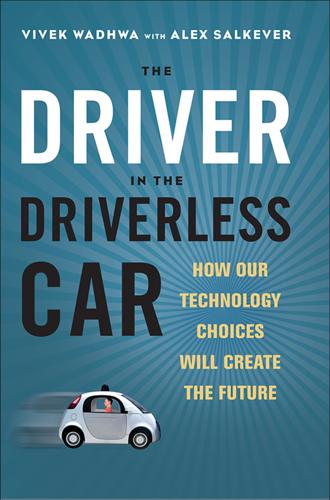
The Driver in the Driverless Car: How Our Technology Choices Will Create the Future
by
Vivek Wadhwa
and
Alex Salkever
Published 2 Apr 2017
They have embraced drones and cybercrime because they are useful, and they will exploit synthetic biology. So we will need new types of defenses against hostile synthetic bio-toxins or life forms. And we will need global agreements to stop governments themselves from “engineering” the perfect athlete or soldier. Do the Benefits Outweigh the Risks? As you have probably guessed, I am deeply concerned about the implications of editing the human genome. Synthetic biology presents grave existential risks that we must examine and consider very closely before widely permitting artificially designed life loose outside the lab. That’s because a synthetic biology experiment gone awry could unleash horrific disease or environmental damage that would be nearly impossible to stop.
…
My iPhone is cradled with electronic sensors that I can place against my chest to generate a detailed electrocardiogram to send to my doctors, from anywhere on Earth.* Many of the entrepreneurs and researchers I talk with about breakthrough technologies, such as artificial intelligence and synthetic biology, are building a better future at a breakneck pace. One team built a fully functional surgical-glove prototype to deliver tactile guidance for doctors during examinations—in three weeks. Another team’s visualization software, which can tell farmers the health of their crops using images from off-the-shelf drone-flying video cameras, took four weeks to build.
…
So a yogurt a day may keep the doctor away, and a tummy full of the right sorts of cheese may be better medicine for many metabolic syndromes than pharmaceuticals or other lifestyle changes. Genomic medicine, gene-targeted drug development, and microbiome manipulation all depend on the ability to read DNA. But a few years ago we pushed past simply reading DNA and began writing it: creating life forms that did not naturally evolve. Altering Life Itself: The Rise of Synthetic Biology A computer-designed virus that cures a fatal disease, new types of bacteria capable of synthesizing an unlimited fuel supply or of wiping out every person on Earth, customized biotoxins targeting the genome of the U.S. president, engineering an Olympic athlete for height and strength from the first days of inception: science fiction?
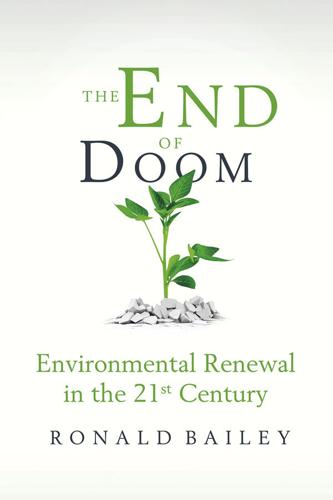
The End of Doom: Environmental Renewal in the Twenty-First Century
by
Ronald Bailey
Published 20 Jul 2015
National Cancer Institute Fact Sheet, 2013. www.cancer.gov/cancertopics/factsheet/Risk/cellphones. “full and inclusive assessments”: Eric Hoffman et al. The Principles for the Oversight of Synthetic Biology. Friends of the Earth, March 2012. “rooted in the precautionary principle”: Eric Hoffman, “Global Coalition Calls for Oversight of Synthetic Biology.” Friends of the Earth, March 13, 2012. “synthetic biology does not”: Presidential Commission for the Study of Bioethical Issues, New Directions: The Ethics of Synthetic Biology and Emerging Technologies. December 1, 2010, 124. “a more comprehensive application”: Georgia Miller, “Who’s Afraid of the Precautionary Principle.”
…
New Attacks on New Technologies The promoters of fear never rest—the modern world abounds in new threatening technologies. Consider, for example, the promising new suite of technologies that comprise synthetic biology. In 2012, a coalition of 111 environmental and social activist groups called for a moratorium on the development of synthetic biology. The activists are worried about researchers into synthetic biology who aim to create a toolbox of standardized intracellular parts that can be used to create novel organisms that do things like clean up toxic wastes, make fuels, or produce medicines. The moratorium declaration specifically cites the Wingspread Consensus Statement as its authoritative version of the precautionary principle.
…
For what it’s worth, President Obama’s Commission for the Study of Bioethical Issues issued a comprehensive report in 2010, noting that “synthetic biology does not necessarily raise radically new concerns or risks.” The commission explicitly rejected applying the precautionary principle to synthetic biology and instead recommended “an ongoing system of prudent vigilance that carefully monitors, identifies, and mitigates potential and realized harms over time.” The commission concluded that with respect to the benefits and harms of synthetic biology, the current regulatory system is robust enough to protect people and the environment. Nanotechnology is also being targeted by proponents of the precautionary principle.

Whole Earth Discipline: An Ecopragmatist Manifesto
by
Stewart Brand
Published 15 Mar 2009
One benefit of the anticipated importance of synthetic biology is a growing profusion of eclectic organizations and meetings designed to include all potential stakeholders and players right from the start—bioethicists, environmental activists, biosecurity professionals, social scientists, politicians, reporters, funders, and investors, along with the bioscientists and bioengineers. Great names the organizations have, too—SYNBIOSAFE (in Europe), SynBERC (Synthetic Biology Engineering Research Center), International Consortium for Polynucleotide Synthesis, and the Industry Association of Synthetic Biology. The extensive public discussion called for by the ETC group is in fact happening.
…
In 2008, for example, Drew Endy invited ETC’s Jim Thomas to publicly debate with him about synthetic biology, and I got to stage the event in San Francisco. “I want to develop tools that make biology easy to engineer,” said Endy. “Powerful technology in an unjust world is likely to exacerbate the injustice,” said Thomas. At about the same time, a New York Times reporter visiting the Synthetic Biology Working Group at MIT noticed on their to-do list: “Grow a house.” Now is the time to ask: What are the most environmentally useful things that synthetic biology could do for human food production? Do we make ever finer adjustments to existing agriculture, create new crop plants, start over with algal vats, reinvent aquaculture and mariculture around microbes instead of fish, or what?
…
(Moore’s law states that computer capability doubles every two years.) Thanks to its accelerating technology, the medical biotech industry is growing by 15 to 20 percent a year, and agricultural biotech by 10 percent a year. Out of nowhere has come a whole new field called synthetic biology. Wikipedia describes it in application terms:Engineers view biology as a technology. Synthetic Biology includes the broad redefinition and expansion of biotechnology, with the ultimate goals of being able to design and build engineered biological systems that process information, manipulate chemicals, fabricate materials and structures, produce energy, provide food, and maintain and enhance human health and our environment.
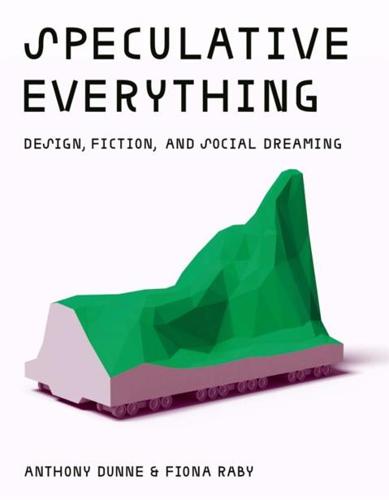
Speculative Everything: Design, Fiction, and Social Dreaming
by
Anthony Dunne
and
Fiona Raby
Published 22 Nov 2013
We have always believed in the importance of discussing and developing ideas in a broader context than academia alone, and thank in particular Wendy March at Intel and Alex Taylor at Microsoft Research Cambridge for bringing an industry perspective to our research; Paul Freemont and Kirsten Jensen at Imperial College, London, for their support and encouragement in our explorations into synthetic biology and other areas of science; and the many people who have provided opportunities to share our thinking through talks, workshops, and conferences and to benefit from the challenges, questions, and discussions they have sparked. We are also thankful for the generosity and enthusiasm of the people and organizations who have commissioned and exhibited our work making it possible to engage with a wider public audience.
…
By moving upstream and exploring ideas before they become products or even technologies, designers can look into the possible consequences of technological applications before they happen. We can use speculative designs to debate potential ethical, cultural, social, and political implications. LIVING IN EXTREME TIMES A weird and wonderful world is taking shape around us.2 Genetics, nanotechnology, synthetic biology, and neuroscience are all challenging our understanding of nature and suggesting new design possibilities at a level and scale never before possible. If we take just one area, biotechnology, and look more closely, we can see that a revolution is well underway. It is no longer about designing the things in the environment around us but designing life itself from microorganisms to humans, yet as designers we devote very little time to reflecting on what this means.
…
Of course we have always been able to design nature through selective plant and animal breeding but the difference now is the speed at which these changes will manifest themselves and the extreme nature of the changes. LAB > MARKET > EVERYDAY LIFE Many of these ideas exist as one-off genetic experiments in laboratories but as microbiologists and engineers begin to work together on the industrialization and systematization of genetic engineering, especially in synthetic biology, these ideas will move from the laboratory into everyday life through the marketplace. Procedures that are currently highly regulated and accessed only through health care may become freely available in a market shaped by consumer desire rather than therapeutic need. Are we prepared to treat society as a living laboratory as we do with digital technologies?
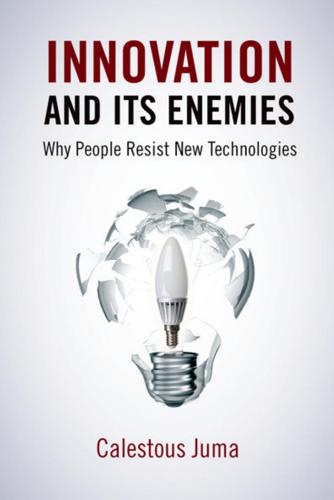
Innovation and Its Enemies
by
Calestous Juma
Published 20 Mar 2017
For example, there are efforts to advance and regulate synthetic biology as an extension of transgenic crops. This ignores the fact that synthetic biology is also based on the principles of engineering, which seek to control the kinds of uncertainties that led to the creation of the research and regulatory systems for transgenic crops. Some synthetic biology products may take on the risk profile of engineering rather than biological products. Given such regulator uncertainty, it may be necessary to at least entertain the possibility that synthetic biology might share common attributes with refrigeration, thereby requiring separate treatment.
…
One of the features of the tensions is the extension of regulatory principles from one product to another through the use of legislative analogy. One of the examples of such regime stretching can be witnessed in the field of synthetic biology, a confluence of engineering, biology, and physics. This emerging field involves the application of engineering principles to biology. The convergence of this field raises regulatory uncertainties. It is not clear whether the risk profile of the products of synthetic biology should be governed by safety measures developed for engineering or biotechnology products. The obvious approach would be to assess the risks of each application on its own merit.
…
For example, new applications with potentially large-scale ecological ramifications such as gene drives may warrant greater scrutiny and public consultation than more benign editing of genomes in crops that are already in widespread use.56 Some of the concerned groups, however, have sought to apply the principles developed for transgenic crops under the Cartagena Protocol to synthetic biology. They see the field as an extension of genetic engineering and want it to be regulated as such. This type of regime stretching is not new. Opponents of coffee in the medieval Middle East sought to restrict the beverage by drawing parallels with alcohol, whose use had already been banned. Technological advances in genetic engineering and synthetic biology are forcing governments to rethink the way they regulate new products. Responding in ways that radically differ, some governments are using emerging information to review their regulatory practices.
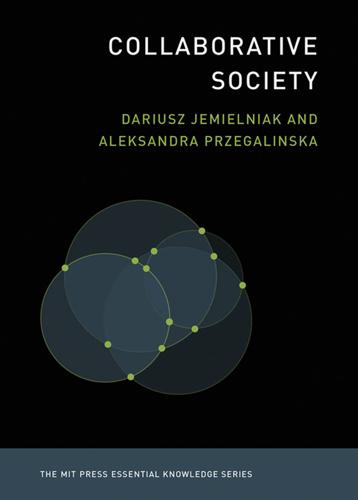
Collaborative Society
by
Dariusz Jemielniak
and
Aleksandra Przegalinska
Published 18 Feb 2020
C. Jefferson, F. Lentzos, and C. Marris, “Synthetic Biology and Biosecurity: Challenging the ‘Myths,’” Frontiers in Public Health 2 (2014): 115. 28. A. Wexler, “The Practices of Do-It-Yourself Brain Stimulation: Implications for Ethical Considerations and Regulatory Proposals,” Journal of Medical Ethics 42 (2016): 211–215. 29. P. Rabinow and G. Bennett, Designing Human Practices: An Experiment with Synthetic Biology (University of Chicago Press, 2012). 30. M. Meyer, “The Politics and Poetics of DIY Biology,” in Biotechnologies, Synthetic Biology, A Life and the Arts, ed. A. Bureaud, R. Malina, and L.
…
Vargo, The Weaponizing of Biology: Bioterrorism, Biocrime and Biohacking (McFarland, 2017). 34. E. Callaway, “Glowing Plants Spark Debate,” Nature 498 (2013): 15–16. 35. Jefferson, Lentzos, and Marris, “Synthetic Biology and Biosecurity.” 36. Rabinow and Bennett, Designing Human Practices. 37. C. Marris, C. Jefferson, and F. Lentzos, “Negotiating the Dynamics of Uncomfortable Knowledge: The Case of Dual Use and Synthetic Biology,” Biosocieties 9 (2014): 393–420. 38. H. Wolinsky, “The FBI and Biohackers: An Unusual Relationship: The FBI Has Had Some Success Reaching Out to the DIY Biology Community in the USA, but European Biohackers ...,” EMBO Reports (2016). 39.
…
In practical terms, as the subtitle of David Weinberger’s book says, “the facts aren’t the facts, experts are everywhere, and the smartest person in the room is the room.”24 Citizen Science As the emerging method of generating and distributing knowledge challenges the established model and the traditional authority of academia, the concept of hacking, in this case related to science, again becomes important.25 The transition from a top-down to a participative knowledge distribution model simultaneously occurs with a general trend to co-create and collaborate in other industries, as we also have seen in previous chapters. There are even social movements that aim at advanced do-it-yourself (DIY) science, democratizing access to research and experimentation in fields as specialized as genome editing, molecular and synthetic biology, or self-made electrode brain stimulation.26,27,28 Unlike Wikipedia and other knowledge (re)distribution initiatives, DIY movements aim also at creating knowledge itself. In the emerging form of knowledge co-creation in technoscience, commonly referred to as “citizen science,” the phenomenon of research by nonprofessional scientists has become increasingly popular: it also includes DIY biology/biohacking movements.

Future Crimes: Everything Is Connected, Everyone Is Vulnerable and What We Can Do About It
by
Marc Goodman
Published 24 Feb 2015
Because writing DNA code is the foundation of genetic engineering, today’s scientists can do much more, much faster than genetic engineers of the past, who had to physically (as opposed to digitally) manipulate the DNA molecule. This emerging field is known as synthetic biology, or synbio for short. Synbio is the engineering of biology, from individual cells to full organisms, and allows us to redesign existing biological systems or create new ones altogether. If sequencing genomes is the reading of the base pairs of DNA, converting them into ones and zeros on a computer screen, synthetic biology is essentially the reverse process—designing genetic material in binary computer code and translating it into DNA sequences that can be produced in the real world.
…
KENNEDY Our technological genie cannot be put back in its bottle. Whether in cyber, robotics, artificial intelligence, or synthetic biology, massive changes are afoot in our world. These changes have brought us to the knee of an exponential curve—one that will be explosive in its growth in the coming years. Indeed, these breakthroughs will arrive much sooner than most would have anticipated, as one domain of science leads to progress in another. Advances in information technology drive synthetic biology and artificial intelligence drives robotics. Each of these forces affects the other, driving exponentials of exponentials.
…
In my own research and investigations, first with the LAPD and later working with federal and international law enforcement organizations, I have uncovered criminals who have progressed well beyond today’s cyber crime into new and emerging fields of technology such as robotics, virtual reality, artificial intelligence, 3-D printing, and synthetic biology. In most instances, my law enforcement and government colleagues around the world are unaware of these looming technological developments, let alone their growing exploitation by both organized crime and terrorist organizations. As somebody who has dedicated his life to public safety and public service, I am deeply concerned by the trends I observe all around me.

Geek Sublime: The Beauty of Code, the Code of Beauty
by
Vikram Chandra
Published 7 Nov 2013
Knuth, Donald E. “All Questions Answered.” Notices of the AMS 49, no. 3 (2002): 318–24. ______. “Literate Programming.” The Computer Journal 27, no. 2 (January 1, 1984): 97–111. doi:10.1093/comjnl/27.2.97. Kotler, Steven. “Synthetic Biology for Dummies, Investors or Both …” Forbes.com, November 8, 2012. http://www.forbes.com/sites/stevenkotler/2012/11/08/synthetic-biology-for-dummies-investors-or-both/. Kwak, James. “The Importance of Excel.” The Baseline Scenario (blog), February 9, 2013. http://baselinescenario.com/2013/02/09/the-importance-of-excel/#. Lacy, Sarah. “And You Thought SF Cabs Were Bad?
…
Consider this: the four letters of the genetic alphabet that makes up DNA—A (adenine), C (cytosine), G (guanine), and T (thymine)—are really, quite literally, a programming language. And this language can be represented in binary code, which means that it can be manipulated on a computer. A recent article in the Atlantic lays out the process and the possibilities: The latest technology—known as synthetic biology, or “synbio”—moves the work [of biotechnology] from the molecular to the digital. Genetic code is manipulated using the equivalent of a word processor. With the press of a button, code representing DNA can be cut and pasted, effortlessly imported from one species into another. It can be reused and repurposed.
…
A dozen different DNA print shops can now turn these bits into biology.10 The DNA print shop will send back several vials of “frozen plasmid DNA,” which you will then inject into a host bacterial cell, causing this cell to “boot up” using the DNA code you’ve created. The cell will metabolize, grow, and reproduce. Congratulations—you have just created a new form of life. Synthetic biology is “currently advancing at 5 times the speed of Moore’s Law.”11 The cost of synbio is falling exponentially, and the tools are already so easy to use that schoolchildren can wield them effectively. In 2012, the high-school division of the annual International Genetically Engineered Machine competition was won by a team of teenagers from Heidelberg.12 Their winning entry was “a new biological system in E. coli that reacts quantitatively to UV radiation.”
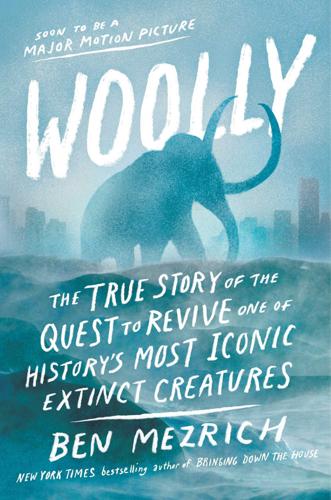
Woolly: The True Story of the Quest to Revive History's Most Iconic Extinct Creature
by
Ben Mezrich
Published 3 Jul 2017
The price, using Church’s process, was already less than a million dollars, and it would be in the tens of thousands within a handful of years. But the work could now be done in a fraction of the time. Church had also ventured into the new world of synthetic biology, in which scientists could sequence and then tailor simple life-forms such as bacteria to perform amazing, and sometimes useful, tasks. Bacteria could be programmed to glow like Christmas lights, to feed on waste, or even to act as biological fuel. Along with working in multiplex sequencing and synthetic biology, Church had launched another potentially world-changing venture in 2006: the Personal Genome Project. The PGP intended to take the Human Genome Project a step further—to make it useful to the individual.
…
He was probably at the lowest point in his life when he met George Church, mostly by accident. Needing money, and wanting to do something in genetics and biology, he’d found a job at a start-up in Cambridge called Warp Drive. Warp Drive, one of the many companies that Church had cofounded, was focused on applying synthetic biology to organisms mined from nature for medicinal uses. The company scoured isolated places like the Amazon and the island of Rapa Nui (Easter Island), then used genetic engineering to turn natural bacteria and plants into medical treatments and cures. Quinn had found a place in the genetic engineering department, learning the ins and outs of molecular modification as he went.
…
“Once we’ve figured out the genes we need,” Luhan continued, “we begin the process of synthesizing them.” They all understood that they weren’t going to clone a Woolly Mammoth. They were going to make one. They weren’t going to transfer genetic material from a frozen carcass, they were going to create the material in a dish and implant it within a living elephant cell. It was synthetic biology, which Quinn did every day at Warp Drive. Unfortunately, that real-world experience hadn’t been enough to get him into graduate school; without the right college pedigree and the right recommendations, he had been rejected wherever he’d applied. The lab did have non-Ph.D.s, but Quinn wasn’t a Harvard employee, so, technically, he wasn’t allowed to work in the Church Lab, and he had to be brought in for the Revivalist meetings as a guest of one of the postdocs.

How to Spend a Trillion Dollars
by
Rowan Hooper
Published 15 Jan 2020
In principle we can approach the creation of a living system like we would the construction of a computer or a highly complex system that is put together with inert matter, with silicon and wires and superconductors; we can use the same approach, but with living matter, and engineer a living organism. This is the goal of synthetic biology: to produce a set of engineering and design rules, and to create microscopic ‘off-the-shelf’ modules for different components of the cell, that will allow us to build a living system. Let’s manage expectations right away, however. We are a long way from complete or even detailed understanding of how all the components of a cell work together.
…
That minimal genome was made of 473 genes, almost a third of which (149) were of unknown function. The complexity shocked the team, who had expected a minimal genome to be composed of fewer genes, and to at least know the function of more of them. It is a taste of the difficulty of the whole field of synthetic biology: everything is much more complicated than you imagine. $ $ $ A BACTERIUM IS ONE THING, but what we’d prefer to create is a complex cell. Bacteria are prokaryotes, simple cells without complex internal machinery. We – and all other plants, animals, and fungi – are eukaryotes, made of bigger, more complex cells able to perform many different functions.
…
Yeast offers far more versatility, sophistication, flexibility and reliability than bacteria; if they were modes of transport, bacteria would be a wooden cart, while yeast would be ... I don’t know, a Tesla, or a Transformer robot. ‘Yeast has contributed more to human happiness than any organism on the planet, through baking, brewing and wine making,’ says Ian Paulsen, director of the ARC Centre of Excellence in Synthetic Biology in Sydney, Australia. ‘It is truly a work-horse organism. It’s safe, we eat it, no problem, it’s not a pathogen, and we can work it at massive scale.’ This last point is crucial. Yeast is one of the only organisms that doesn’t have problems with viral infections, whereas bacteria, when grown in bulk, get infected.

The Transhumanist Reader
by
Max More
and
Natasha Vita-More
Published 4 Mar 2013
Nanorobotics Nanorobotics Revolution by the 2020s Conclusions 7 Life Expansion Media Living Matter Degeneration/Regeneration Transmutation Dialectics of Desirability and Viability Cybernetics Human-machine Interfaces and the Prosthetic Body Life Expansion 8 The Hybronaut Affair Techno-Organic Environment The Umwelt Bubble Network and the Hybronaut The Appendix-tail Conclusion 9 Transavatars Avatars and Simulation Avatar Censuses Secondary and Posthumous Avatars Conclusion 10 Alternative Biologies Biology as Technology The Rise of Machines Complexity The Science of Complexity Synthetic Biology – Complex Embodied Technology Top-Down Synthetic Biology Bottom-Up Synthetic Biology Protocells Artificial Biology From Proposition to Reality Future Venice Artificial Biology and Human Enhancement Part III Human Enhancement: The Cognitive Sphere 11 Re-Inventing Ourselves I. Introduction: Where the Rubber Meets the Road II.
…
The advantage of developing complex systems is that they participate in a problem-solving process to meet ongoing challenges rather than searching for a preconceived outcome. Synthetic biology can be created using direct top-down interventions where existing systems are modified through instrumentation or using bottom-up approaches that engage with chemical self-assembly. Top-Down Synthetic Biology Synthetic biology is often equated with the genetic modification of biological systems as a top-down design practice. Genes are found in a membrane-bound region in the center of cells called the nucleus.
…
These common organizational principles allow the characterization of poorly understood complex systems, such as those that govern biological and cellular functions, from principles that are already well characterized in large and well-mapped non-biological systems such as the Internet. Synthetic Biology – Complex Embodied Technology Living systems are complex and operate according to the world of systems thinking as opposed to Cartesian reality. They possess fundamental properties that mechanical technologies cannot offer, being flexible, robust, adaptable, and able to respond to continual changes in their environment. They are also able to deal with unpredictability, the converse of this being that living technologies may also behave in unpredictable ways. Synthetic biology embodies the principles of complex systems using real-world technologies that can connect with ecology as flexible chemical networks.
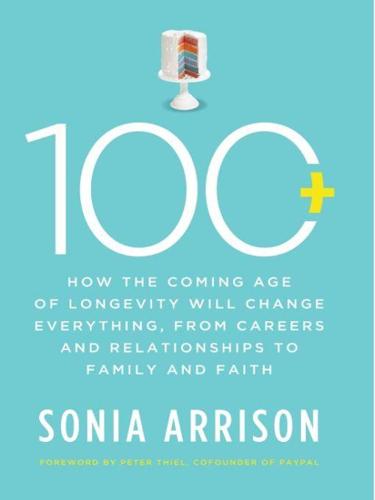
100 Plus: How the Coming Age of Longevity Will Change Everything, From Careers and Relationships to Family And
by
Sonia Arrison
Published 22 Aug 2011
Venter is not the only one to look at things this way. DARPA has disclosed that it is backing the biology-as-engineering outlook with $6 million on a project called “biodesign” and $20 million for synthetic biology. As a Wired News article puts it, “DARPA is looking to re-write the laws of evolution to the military’s advantage, creating ‘synthetic organisms’ that can live forever—or can be killed with the flick of a molecular switch.”88 Synthetic biology has many implications, but for those concerned with extending human health span, Dr. Aubrey de Grey offers what he believes is a comprehensive road map to fighting aging.
…
For instance, it looks increasingly likely that societies will be able to turn more of their waste into fertilizer or energy.49 Such processes, if they were to become common, would revolutionize the way we think about garbage, perhaps even creating new and vibrant competition to collect trash. How could waste be turned into fuel? One method involves a field known as synthetic biology, in which engineering principles are applied to biological systems. Using DNA sequencing and synthesis, scientists can re-engineer organisms like bacteria, yeast, and algae, thereby creating mini chemical factories that can turn all sorts of waste, including paper waste and carbon dioxide, into fuel.
…
In an interview on a popular television program, Keasling explained that the drug his microorganisms create “is a hydrocarbon, much like the gas you put in your automobile.”51 It doesn’t take much imagination to see why the U.S. Department of Energy picked him to lead one of its $134 million initiatives to create environmentally friendly biofuels. And Dr. Keasling is not the only one working on using synthetic biology to create cleaner fuel. Another heavy hitter in this space is Dr. J. Craig Venter, the scientist mentioned in Chapter 2 who is known for sequencing the human genome. Dr. Venter’s for-profit company, Synthetic Genomics, aims to “engineer superior strains of algae, and to define and develop the best systems for large-scale cultivation of algae and conversion of their products into useful biofuels.”52 To this end, in July 2009 the company landed a $600 million deal with ExxonMobil, the largest publicly traded international oil and gas company, an important sign that the field is looking promising.
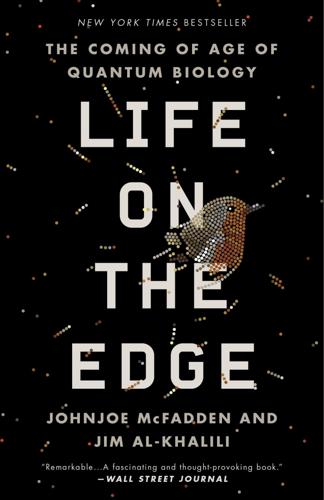
Life on the Edge: The Coming of Age of Quantum Biology
by
Johnjoe McFadden
and
Jim Al-Khalili
Published 14 Oct 2014
This was of course the puzzle that prompted our ancestors to come up with the idea of a soul. We no longer believe that a cell possesses any kind of soul; but what is it then that is irrevocably lost when a cell or a person dies? At this point you might be thinking: What about that newly heralded science of synthetic biology? Surely the practitioners of that science must possess the key to life’s mystery? Probably synthetic biology’s most famous practitioner is the genome-sequencing pioneer Craig Venter, who in 2010 conjured up a scientific storm when he claimed to have created artificial life. His work made headlines across the world and sparked fears of new races of artificially grown creatures taking over the planet.
…
Golden rice, as Beyer called it because of the yellow color of its seeds, can now provide most of the daily vitamin A requirement for children. However, although genetic engineering is a very successful technology, it is really just tinkering with life. The new science of synthetic biology aims to make a truly revolutionary living technology by engineering entirely novel forms of life. There are two complementary approaches to synthetic biology. The top-down approach is the one we have already met in the course of discussing how the genome-sequencing pioneer Craig Venter constructed so-called “synthetic life” by replacing the genome of a bacterium called mycoplasma with a chemically synthesized version of the same genome.
…
Nevertheless, it was still a mycoplasma: they did not introduce any radical changes into the bacterium’s biology. Over the coming years Venter’s team plans to engineer more radical changes; but these changes will be introduced step-by-step in this top-down synthetic biology approach. The team did not make new life: they modified existing life. The second approach is bottom-up and is far more radical: rather than modifying an existing living organism, bottom-up synthetic biology aims to engineer completely new life forms out of inert chemicals. Many would consider such an endeavor dangerous, even sacrilegious. Is it even feasible? Well, living organisms, like us, are extraordinarily elaborate machines.

Human Frontiers: The Future of Big Ideas in an Age of Small Thinking
by
Michael Bhaskar
Published 2 Nov 2021
For the first time in history, as the developing world closes the gap with advanced economies, all major civilisations are operating at the frontier of knowledge. Equally, we could be at the cusp of a revolution in tools and technology as profound as that of the late nineteenth and early twentieth centuries. AI, quantum computing, 3D printing, synthetic biology, neuralink interfaces connecting computers and human brains: these are not just buzzwords, but potentially transformatory. Those forces are then weighed in the balance, before I put forward suggestions about what would help push back the frontier and meet the challenge of our times. Overall I am cautiously and conditionally optimistic.
…
As one of the lead scientists said: ‘These are experiments we could only have dreamed of years ago. The most challenging task in my career has become an undergraduate project overnight.’ 48 But it is still only the beginning – a stage akin to computers fifty years ago, with all the general-purpose promise that implies.49 Synthetic biology is the emerging discipline of designing and building organisms. It could follow a trajectory similar to information technologies. In the 1960s semiconductor circuits were still hand-carved with a scalpel. They now exhibit a mind-boggling complexity, squeezing billions of transistors into our pockets (11 billion alone on a single iPhone CPU, performing well over a trillion operations a second).
…
Just as computeraided design enhanced airplanes and circuits, so it will genetic engineering. We'll have tools, in other words, for programming complex function into cells, for the algorithmic design of genetic parts, including human cells. What today exists only in simulations could, thanks to nanotech and synthetic biology, happen for real – and on aggressive timelines.50 The envisaged applications of this bio-engineering convergence are astounding. Viruses that create batteries and proteins that purify water.51 Cheap, personalised cancer vaccines made at scale and low cost could be another hammer to Eroom. Crops resistant to infection; microbially produced smartphone screens; livestock like pigs used for growing organ transplants, so called xenotransplantation – the pioneering Harvard scientist George Church and his lab are already overcoming hurdles here.
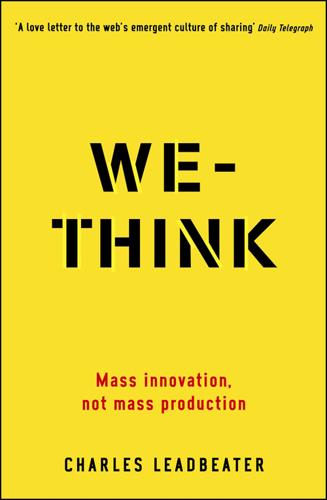
We-Think: Mass Innovation, Not Mass Production
by
Charles Leadbeater
Published 9 Dec 2010
It is not a job for amateurs: it takes staff with advanced skills, lots of practical experience, patience, many reagents and a lot of equipment. That could all change, however, with the advent of synthetic biology which allows scientists to create cells by writing ‘DNA programmes’ to make living organisms. At the moment, biotechnology recombines what is already available; in future, synthetic biology could allow cells to be artificially created. Blueprints for synthetic biology could easily be shared as software is now. Drew Endy, a professor at MIT, is already teaching his students how to build custom-made bacteria by clicking together a set of ‘bio-bricks’, which are available open-source through his BioBrick Foundation.
…
In five years’ time it might be the cost of an iPod.7 Many will be alarmed at the prospect of synthetic biology’s putting new power to create and destroy life into the hands of rogue scientists and madcap amateurs. Software programs with bugs can be recalled and rewritten; real-world viruses cannot. Yet synthetic biology also offers the prospect of huge advances: carbon-free fuels made from biomass, cheaper drugs manufactured in the cells of an organism. Open-source biology will pose issues of security, ethics and control far more troubling than those arising from the chat rooms and wikis of the Internet. Whether synthetic biology turns out to be mainly creative or destructive will depend not just on the science, but on our social organisation, on how the knowledge is owned and controlled.
…
F. 45 Small Is Beautiful 45 Schwartz, Jonathan 202 Schwarz, Michiel xi science 53–4, 60 open and collaborative approaches to 195 research 132 shared 154–7, 158, 159–65 search engines 36, 212 Second Life 5, 45, 70 self-confidence 72 self-control 236 self-governance 59, 79, 80, 97, 104, 174, 194, 232, 239 self-help 44–5, 146, 152, 200, 205, 206 self-management 89 self-organising networks 8, 168 self-regulation 49, 79, 165 Sen, Amartya: Development as Freedom 194–5 Sennett, Richard 215–16 Seoul, South Korea 203, 204 service sectors 129, 130 Shanda 106–7 Shanwei, Guandong province, China 192 shareholder ownership 121, 122, 123, 125 sharing 223 enabled by the web 6, 7, 26 shared use of common resources 27 the We-Think ethos 23, 24 see also idea-sharing Shi Tao 190–91 Shuttleworth, Mark 80, 118 Sibelius Software Ltd xi, 219 Siemens 135 Silicon Valley, California 133, 136 Silver, Jeremy xi, 219 Sims, The (computer game) 105–6, 149, 226, 228 simulation technologies 227 Situationist International 45, 46 SixDegrees.com 34 Skoll, Jeff 217 Slashdot 33, 34, 70 Smales, Andrew 33 Smith, Adam 224 The Theory of Moral Sentiments 229 The Wealth of Nations 224 SMS (Short Message Service) messaging 101–2 social justice 194 social surveillance 211 SocialText 36 Society for Sustainable Mobility 135 software 60, 61, 129 BASIC 46 blogging 36, 74 bugs 70, 72, 165 and changes on web pages 31 created by groups on the web 7, 23 distributed testing 72, 74 free 7 hacking 104 open-source 47, 56, 65, 66, 68, 69, 74, 75, 78, 108, 128, 134, 155, 200–203, 228 patents 97 social-networking 177 stealing of 47, 51 Sokol, Dan 46–7 Sony 140 Sopranos, The (television series) 182 source code 66, 197, 200, 229 SourceForge.net 45, 68 South America: access to the web 5 South Korea 203, 204, 215, 231 Ministry of Information and Communications 203 Soviet Union, former 189, 190, 210 Spallek, Heiko xi–xii Spanish elections (March 2004) 186–7 Spreadshirt 135 Squid Labs 134 stalkers 3 Stanford Research Institute, Palo Alto, California 39 Star Trek series 103 Star Wars (film) 137 Starbucks 109–10 Stony Brook University, New York State 165 Sullivan, Tim xi Sun Microsystems 202 supply and demand 100 Swarm of Angles (open-source film-making project) xi Swiki 36 synthetic biology 164–5 System/360 computer 77, 78 T Taylor, Charles 215 Technorati 33, 86 teenagers, on-line 213–16 television 2, 30, 34, 57, 129, 147, 171, 172, 173, 176, 183, 233 Teragrid 155 terror, terrorists 1, 3, 168, 169, 232, 235, 237 thinking barefoot 205–6 collaborative 20 creative 87 Descartes on 19–20 diverse 79 group-think 23, 210–11 individual 20, 21, 23 lateral 113 shared thoughts 81 Thurmond, Senator Strom 181–2 Tiananmen Square demonstrations (1989) 191 Time magazine 56 Tomcat 68 tools available to amateurs 103, 231–2 creating computer games 74 for creativity 218, 219 distribution of 84 education 148, 149 for genetic engineering 235 and groups 76–7 healthcare 151 idea-sharing 222 in science 154, 155, 161, 162–3, 197 search 227 social tagging 86 and Web 2.0 success stories 75 Torvalds, Linus 65, 66, 68, 96, 227 Toshiba 140 Toyota 135, 219 Trackback 33 trade unions 188 ‘tragedy of the commons’ argument 51, 124 transparency 184, 236, 237 Trekkies 103 Trevithick, Richard 55 Tribe, The (avant garde publication) 42 Trippi, Joe 177–8 Tropicalismo 202 Turkle, Sherry 211 Turner, Fred 38, 46 Tuxphone 136 Txtpower.org 186 U Ubuntu 80, 82, 118 Uganda 206 Ukraine: ’colour revolution’ 187 UN World Development Report (2003) 196 University of California 160, 213 University of Michigan 193 Library 144 Unix operating system 74 urbanisation 150, 188 US National Human Genome Research Institute 160 US National Institute of Health 159 US Office of the Director of National Intelligence 152 US Super Bowl (2007) 104–5 Usmanov, Alisher 30 V value chains 98 values collaborative 90, 112 community 91 diverse 79 van Neumann, John 137 Venezuela 202–3 Ventura, Jesse 180 videos 142, 216, 218 amateurism 105 by performance artists 2 and human-rights groups 206 political 182 real 57 self-expression 1 sharing online 75 social-networking sites 20 video-sharing sites 7, 34, 86 YouTube xiii, 46, 57 Vietnam 189–90, 191 virtual worlds 4–5, 7, 21 viruses computer 3, 4, 233–4 genomes of 165 visionaries 48 Vista operating system 47 Vodafone 207 voluntarism 128, 145 W Wal-Mart 218 Wales, Jimmy 13, 14–15, 18, 21 Wandsworth, Jeffrey 154 Warhol, Andy 105 Waterston, Bob 63 Watson, James D. 52, 62, 76 Watt, James 54–5 Watt engine 54–5, 56 Watts, Duncan 212 Wayprecht, Karl 156 We-Think approach to work 111–12, 114 collective self-help 44–5 combining ideas 77 common pools of resources 49 conditions necessary for 84, 86 corporate models of 97 culture 28, 59, 62, 169, 194, 230, 232–3, 238 defined 19 and democracy 170, 221, 239 design and research 166 and the developing world 204 and eBay rating system 217 in education 148, 149 entrepreneurs 91 and equality 208 examples of 19 file-sharing 58 and freedom 213, 221 Full 85, 86–7 and healthcare 150 impact on culture and economy 129–32 and innovation 89, 93, 95, 125, 126 leadership 117, 118–19 Linux community 65, 66 Low 85 making sense of web content 32, 34, 36, 59 Medium 85, 86 No 85, 86 organisational recipe 21, 87, 89 and ownership 121 potency of 59 and public services 145, 146, 149, 150 rise of 88 and service sectors 130 social justice 194 successful projects’ basis collaborate 67, 79–80, 81, 82 connect 67, 75–9 contribute 67, 70, 71, 72, 73, 74–5 core 67, 68–9 create 67, 82–3 vital ingredients of 61–2 ways it could go wrong 23–4, 84 working for free 23 worm project as a recipe for 64–5 Web 2.0 27, 30, 31–2, 40, 42, 45, 51, 70, 75, 179 web, the bloggers’ ability to act as a public watchdog 181–2 censorship 190–91 and civic organisations 189 collaborative 200 connectedness: pros and cons 3–4, 5 and creative conversations 95 creativity 1–2, 3, 5, 19, 26, 218–21, 222, 227 criminal use of 3, 168–9 decentralisation 7, 13 democracy 1, 3, 5, 6, 7, 170, 173–4, 176, 178, 184, 189, 191, 192 destroying as much as it creates 2–3 development of 5 electronic trail 210 enters mainstream politics 176 and equality 2, 192–3 fears of loss of freedom 208, 210 hypertext 35, 39 impact on the developing world 166 innovation 2, 5, 7, 225 knowledge 2, 3 MoveOn network 188–9 openness 3, 13 origins of 5, 6, 47–8 and political journalists 170–71 power of 24–5, 185, 233 and privacy 210 sharing ideas 6, 7, 26 social vs. individualistic thinking 19–20 surveillance 2 underlying culture of 7 Weber, Steven 69 weblogs 33, 142 websites author’s website ix–xiv political 176 sharing ideas 68 Wellcome Trust 160 Wheal Prosper mine, Cornwall 55 Whole Earth Catalog 40, 63 Whole Earth ’Lectronic Link 40 wiki farms 36 wiki-economy 90 Wikimedia Foundation 15 Wikipedia 1, 4, 12–21, 23, 36, 84, 85, 86, 97, 126, 127, 141, 148, 152, 161, 191, 195, 226, 228, 231, 235 wikis 31, 59, 77, 165 defined 13, 35 history of 35–6 internal 152 openness and decentralisation 13 role of 36 scientists 159 Ubuntu 80 wiki culture 14 wiki version of part of We-Think ix, xiii Wilson, E.

Exponential Organizations: Why New Organizations Are Ten Times Better, Faster, and Cheaper Than Yours (And What to Do About It)
by
Salim Ismail
and
Yuri van Geest
Published 17 Oct 2014
For that reason SU was never accredited—not because we didn’t care, but because the curriculum was changing too fast. SU would focus only on the exponentially growing (or accelerating technologies) that were riding on the back of Moore’s Law. Areas like infinite computing, sensors, networks, artificial intelligence, robotics, digital manufacturing, synthetic biology, digital medicine and nanomaterials. By design and desire, our students would be the world’s top entrepreneurs, as well as executives from Fortune 500 companies. Our mission: to help people positively impact the lives of a billion people. The idea for SU came together at a Founding Conference hosted at NASA’s Ames Research Center in Silicon Valley in September 2008.
…
If they are not your direct customers, fear not; they are likely your customer’s customers. Second, this group—the “rising billion”—is a new entrepreneurial class powered with the latest generation of Internet-delivered technologies—everything from Google and Artificial Intelligence, to 3D printing and synthetic biology. As such, we will see an explosion in the rate of innovation, as millions of new innovators begin to experiment and upload their products and services and launch new businesses. If you think the rate of innovation has been fast in recent years, let me be among the first to tell you: you haven’t seen anything yet.
…
Richard Foster of Yale University estimates that the average lifespan of an S&P 500 company has decreased from sixty-seven years in the 1920s to fifteen years today. And that lifespan is going to get even shorter in the years to come as these giant corporations aren’t just forced to compete with, but are annihilated—seemingly overnight—by a new breed of companies that harnesses the power of exponential technologies, from groupware and data mining to synthetic biology and robotics. And as the rise of Google portents, the founders of those new companies will become the leaders of the world’s economy for the foreseeable future. Doubling Down For most of recorded history, a community’s productivity was a function of its human power: men and women to hunt, gather and build, and children to assist.

You Are Not a Gadget
by
Jaron Lanier
Published 12 Jan 2010
It wasn’t official, of course, but the big idea kept popping up at a recent Sci Foo I attended: science as a whole should consider adopting the ideals of web 2.0, becoming more like the community process behind Wikipedia or the open-source operating system Linux. And that goes double for synthetic biology, the current buzzword for a super-ambitious conception of biotechnology that draws on the techniques of computer science. There were more sessions devoted to ideas along these lines than to any other topic, and the presenters of those sessions tended to be the younger people, indicating that the notion is ascendant. Wikified Biology There were plenty of calls at Sci Foo for developing synthetic biology along open-source lines. Under such a scheme, DNA sequences might float around from garage experimenter to garage experimenter via the internet, following the trajectories of pirated music downloads and being recombined in endless ways.
…
Under such a scheme, DNA sequences might float around from garage experimenter to garage experimenter via the internet, following the trajectories of pirated music downloads and being recombined in endless ways. The quintessential example of the open ideal showed up in Freeman Dyson’s otherwise wonderful piece about the future of synthetic biology in the New York Review of Books. MIT bioengineer Drew Endy, one of the enfants terribles of synthetic biology, opened his spectacular talk at Sci Foo with a slide of Dyson’s article. I can’t express the degree to which I admire Freeman, but in this case, we see things differently. Dyson equates the beginnings of life on Earth with the Eden of Linux.
…
In his article, Freeman derides the first organism that hoarded its genes behind a protective membrane as “evil,” just like the nemesis of the open-software movement, Bill Gates. Once organisms became encapsulated, they isolated themselves into distinct species, trading genes only with others of their kind. Freeman suggests that the coming era of synthetic biology will be a return to Eden. I suppose amateurs, robots, and an aggregation of amateurs and robots might someday hack genes in the global garage and tweet DNA sequences around the globe at light speed. Or there might be a slightly more sober process that takes place between institutions like high schools and start-up companies.

Green Swans: The Coming Boom in Regenerative Capitalism
by
John Elkington
Published 6 Apr 2020
It was not spotlighted in the World Economic Forum (WEF) listing mentioned in Chapter 6, at least when accessed, but it has the potential to drive more change in the world than many other technologies put together. This is synthetic biology. As someone who has followed the biotechnology industry fairly closely for decades, I have seen a fair few much-vaunted ideas make their way through the hype cycle minefield. Some were blasted to pieces, and others ended up crippled on the sidelines. But there is something about this new synthesis of biology, engineering, and data that reminds me of information technology in the early days. The focus then was on information, data, and intelligence, whereas with synthetic biology it is on the fundamental reprogramming of life itself to bend it to human needs.
…
Too many change agents, meanwhile, remain distracted by the task of driving incremental improvements in existing and incumbent technologies, ranging from gasoline-powered automobiles to energy- and chemical-intensive air-conditioning systems. All-important work, but we must now move well beyond that. We must engage and shape the thinking of those who will transform our future with such things as artificial intelligence, the internet of everything, autonomous vehicles, synthetic biology, and, some insist, geoengineering. Do not misunderstand me: This rapid evolution of technologies is exciting and has the potential to tackle many of the central challenges we face in this century, if properly used. In terms of potential upsides, I know from personal experience that a radically better future is already here, or taking shape fast.
…
Every new technology creates unexpected problems, but if I had to pick three or four personal priorities from the WEF list, I would take AI and the Fourth Industrial Revolution for the Earth—and then I would add several not on the list: among them the renewable energy and smart grids nexus, the replacement of animal farming by precision biology and fermentation, and synthetic biology. The latter was the subject of a wonderfully insightful survey by Oliver Morton, published by The Economist.12 New tools like Crispr are helping to radically accelerate genetic engineering.13 “Every now and then,” noted Wired magazine, “nature politely taps us on the shoulder and hands over a world-changing gift.
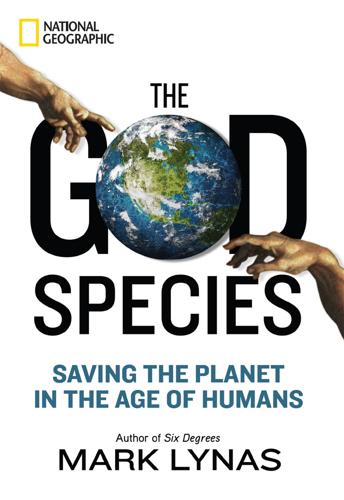
The God Species: Saving the Planet in the Age of Humans
by
Mark Lynas
Published 3 Oct 2011
As proof, the scientists wielded photographs of the microscopic “Mycoplasma mycoides JCVI-syn1.0” cells, busily obeying the original divine command to be fruitful and multiply in one of the J. Craig Venter Center’s many petri dishes. The new discipline of synthetic biology had come of age. Forget all your fears about genetic engineering (GE); synthetic biology makes GE look as quaint and old-fashioned as a horse and cart at a Formula One rally. Old-style biotech was about mixing and rearranging small numbers of existing natural genes from different species and hoping that the right thing happened. Synthetic biology is an order of magnitude more powerful, for it gives humanity the potential to design and create life from scratch. Venter and his team didn’t quite achieve that: Their synthetic genome, after being stitched together with the help of some well-trained yeast, was transplanted into the empty cell of a closely related bacterium that was arguably already “alive,” at least in form if not in function.
…
The genetic manipulation of plants is a powerful technology that can help humanity limit its environmental impact and feed itself better in the process. I personally campaigned against it in the past, and now realize that this was a well-intentioned but ignorant mistake. The potential of synthetic biology I can only begin to guess at today in early 2011. But the lesson is clear: We cannot afford to foreclose powerful technological options like nuclear, synthetic biology, and GE because of Luddite prejudice and ideological inertia. Indeed, if we apply the metric of the planetary boundaries to the campaigns being run by the big environmental groups, we find that many of them are irrelevant or even counterproductive.
…
Microbial life-forms could be designed to create biofuels or new vaccines, to bioremediate polluted sites, or to clean water. In the hands of a modern-day Bond villain, they might also be used to forge virulent new superbugs that could wipe out most of the world’s population. But the technology per se is ethically inert; it is just a tool. The purpose of a machine depends upon whose hands are wielding its power. Synthetic biology reduces the cell to a machine, whose components—once properly understood—can be assembled like blocks of Lego. Why build a robot out of perishable steel and plastic when you can build a bio-bot that feeds itself, carries out its prescribed task, heals any injuries, and creates near-identical copies of itself with no outside intervention?

The Fourth Industrial Revolution
by
Klaus Schwab
Published 11 Jan 2016
Tangible innovations that result from interdependencies among different technologies are no longer science fiction. Today, for example, digital fabrication technologies can interact with the biological world. Some designers and architects are already mixing computational design, additive manufacturing, materials engineering and synthetic biology to pioneer systems that involve the interaction among micro-organisms, our bodies, the products we consume, and even the buildings we inhabit. In doing so, they are making (and even “growing”) objects that are continuously mutable and adaptable (hallmarks of the plant and animal kingdoms).4 In The Second Machine Age, Brynjolfsson and McAfee argue that computers are so dexterous that it is virtually impossible to predict what applications they may be used for in just a few years.
…
It took more than 10 years, at a cost of $2.7 billion, to complete the Human Genome Project. Today, a genome can be sequenced in a few hours and for less than a thousand dollars.10 With advances in computing power, scientists no longer go by trial and error; rather, they test the way in which specific genetic variations generate particular traits and diseases. Synthetic biology is the next step. It will provide us with the ability to customize organisms by writing DNA. Setting aside the profound ethical issues this raises, these advances will not only have a profound and immediate impact on medicine but also on agriculture and the production of biofuels. Many of our intractable health challenges, from heart disease to cancer, have a genetic component.
…
Here, as Sam Altman stated, “the best way AI can develop is if it’s about individual empowerment and making humans better, and made freely available to everyone.”62 The human impact of some particular technologies such as the internet or smart phones is relatively well understood and widely debated among experts and academics. Other impacts are so much harder to grasp. Such is the case with AI or synthetic biology. We may see designer babies in the near future, along with a whole series of other edits to our humanity – from eradicating genetic diseases to augmenting human cognition. These will raise some of the biggest ethical and spiritual questions we face as human beings (see Box H: On the Ethical Edge)

50 Future Ideas You Really Need to Know
by
Richard Watson
Published 5 Nov 2013
Maybe this is also a way to store and transfer power on a larger scale, thereby making national electricity grids more responsive to surges in demand. And while we’re at it, why not replace national grids with micronetworks owned and operated by small energy entrepreneurs? Synthetic biology The idea that science can create artificial life is disturbing, so we give it less threatening names such as “synthetic biology” or the more edgy, “synbio.” Yet advances in this field are progressing rapidly and some of the practical uses of this technology could be exciting and life enhancing—reducing climate change or restoring an extinct species. A team led by Dr.
…
Even railways, done right, could have an enormous impact. And we could always walk a bit more, put on a sweater when it’s cold and dry our wet clothes on a washing line outside rather than inside in a tumble dryer. Finally, and most optimistically perhaps, let’s not forget about the energy potential of genetic engineering, especially the use of synthetic biology to produce new microorganisms that do things that nature historically hasn’t—for instance, secrete biodiesel. the condensed idea Don’t panic, we’re inventive timeline 1973 First oil crisis 2020 Launch of North African solar grid 2025 Oil, coal and gas still responsible for 70 percent of energy supply 2030 Global energy demand up by 50 percent over 2008 levels 2045 Clean energy islands built off the coast of China 2050 First commercial thorium reactor 08 Precision agriculture Global population growth (more precisely, global income growth) will challenge the ability of agriculture to deliver maximum productivity in the future, especially if climate change negatively affects agricultural yields.
…
Or maybe we’ve all just been watching too much tech-noir science fiction? Some people totally reject the whole hypothesis, arguing that it’s ridiculous to reduce human authenticity to a single measurement on a graph, but as robotics, virtual reality, artificial intelligence, computer animation and synthetic biology all converge, this debate will get quite complex. This fact has not escaped the attention of artists, such as Patricia Piccinini, who has created human-hybrid sculptures and other controversial artworks. And if you think Patricia’s work is a little disturbing, have a look at the reborn “dolls” created by the photographer Rebecca Martinez for a project called “pretenders” or the “lifelike” artworks of Ron Mueck.
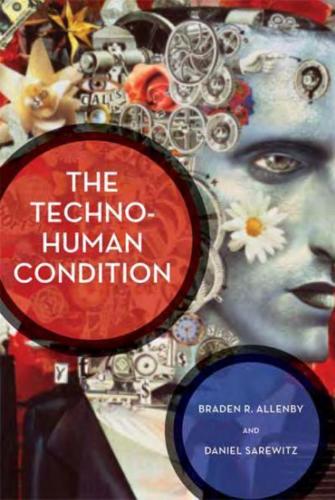
The Techno-Human Condition
by
Braden R. Allenby
and
Daniel R. Sarewitz
Published 15 Feb 2011
Commercialization of these biotechnologies continues to accelerate, led by the introduction in agriculture of genetically modified organism (GM 0) technologies-corn, soybeans, cotton, and other crops that are altered to achieve a variety of specific functions, such as increased resistance to pests or herbicides. But GMO technology extends far beyond agriculture, and biotechnology patent filings in OECD countries continue to rise sharply. Synthetic biology provides a good illustration of some of the features of technological evolution at the scale of Earth systems. First, synthetic biology does not just reconfigure the biological sciences; rather, biodiversity becomes a product of design choices, and of industrial and political imperatives (security issues, for example), rather than a product of evolutionary pressures.
…
And be careful if you wish for this under your breath, for such a catastrophe, whether from nuclear winter, terrorism and response, ecosystem collapse, or some other source, would create havoc among all systems, human, natural, and built. 68 Chapter 4 Another topical example is provided by the current "crisis in biodiversity," as human activity causes extinction to increase dramatically.4 On the one hand, ecologists may be justifiably concerned about whether key ecosystems-the depleted wetlands surrounding New Orleans, for example-are able to fulfill the functions upon which our societies depend (protecting a city from hurricane surges, in this case). Yet from another perspective, biodiversity is fast becoming the next technological design space. Scientists and engineers have begun the project of understanding and designing new forms of life. These efforts, from genetics to agricultural science, have coalesced into a new field-synthetic biology-that merges engineering with biology by, among other things, beginning to create standard biological components that can be mixed and matched in organisms to provide desired functions. This will allow researchers to treat biological pathways as if they were components or circuits, and to create organisms from scratch, and to go beyond existing biological systems by creating forms of life based on genetic codes not found in the wild.
…
More broadly, the behavior and the structure of biological systems increasingly become functions of human dynamics and systems, so that understanding biological systems increasingly requires an understanding of the relevant human systems. In short, biology, anthropology, and political science are convergmg. As the tools of synthetic biology are used to address such shop-floor problems as curing diseases, boosting agricultural production, or generating energy, the consequences at the scale of the anthropogenic Earth will be essentially unpredictable? This unpredictability arises from not only the complexity of the biosphere's evolution but also the increasing impact on biological systems of the contingency that characterizes human systems.

What to Think About Machines That Think: Today's Leading Thinkers on the Age of Machine Intelligence
by
John Brockman
Published 5 Oct 2015
The idea of a metallic contraption with wired innards having rights or disobeying human laws is not only chilling, it’s absurd. But that’s emphatically not the way DI is heading. Very soon, the distinction between artificial and natural will melt away. Designed intelligence will increasingly rely on synthetic biology and organic fabrication, in which neural circuitry will be grown from genetically modified cells and spontaneously self-assemble into networks of functional modules. Initially the designers will be humans, but soon they’ll be replaced by altogether smarter DI systems themselves, triggering a runaway process of complexification.
…
But once success is in sight, it becomes timely to consider the technology’s societal impact and study how to reap the benefits while avoiding potential pitfalls. That’s why, after learning to make fire, we developed fire extinguishers and fire safety codes. For more powerful technologies, such as nuclear energy, synthetic biology, and artificial intelligence, optimizing the societal impact becomes progressively more important. In short, the power of our technology must be matched by our wisdom in using it. Unfortunately, the necessary calls for the sober research agenda that’s sorely needed are being nearly drowned out by a cacophony of ill-informed views permeating the blogosphere.
…
By way of analogy: Since the Manhattan Project, nuclear scientists have moved on from increasing the power extracted from nuclear fusion to the issue of how to best contain it—and we don’t even call that nuclear ethics. We call it common sense. WHAT DO YOU CARE WHAT OTHER MACHINES THINK? GEORGE CHURCH Professor of genetics, Harvard Medical School; director, Harvard University’s Personal Genome Project; coauthor (with Ed Regis), Regenesis: How Synthetic Biology Will Reinvent Nature and Ourselves I am a machine that thinks, made of atoms—a perfect quantum simulation of a many-body problem—a 1029-body problem. I, robot, am dangerously capable of self-reprogramming and preventing others from cutting off my power supply. We human machines extend our abilities via symbiosis with other machines—expanding our vision to span wavelengths beyond the mere few nanometers visible to our ancestors, out to the full electromagnetic range, from picometer to megameter.

AI 2041: Ten Visions for Our Future
by
Kai-Fu Lee
and
Qiufan Chen
Published 13 Sep 2021
As dematerialization occurs at increasing speed, previously expensive products become effectively free. In chapter 4, “Contactless Love,” we discussed the power of synthetic biology in drug discovery and gene therapy (such as CRISPR), which will reduce healthcare costs, improve treatment efficacy, and increase human longevity. In addition, synthetic biology has shown promise in redesigning organisms for useful purposes by engineering into them new abilities. Synthetic biology will revolutionize the food industry. Meat can be grown in the lab using animal-sourced starter cells, with the same protein and fat profiles, and the same taste.
…
Eventually the primary cost of these farms will be electricity, water, and fertilizer. We know from the previous section that electricity and water will become almost free. Synthetic biology can engineer bacteria to supply the nitrogen that plants need to thrive, thereby ending toxic chemical fertilizers. Synthetic biology can also be used to make rubber, cosmetics, fragrances, fashion, fabrics, plastic, and “green” chemicals. It can dissolve plastics and clean pollutants from the environment. Synthetic biology will revolutionize many industries by making them more sustainable while dramatically lowering the overall cost. In June 2011, President Obama announced the Materials Genome Initiative, a nationwide effort to use open-source methods and AI to double the pace of innovation in materials science.
…
These include materials that seem straight out of science fiction, such as artificial muscles and nanomaterials that make everything much lighter. With these building blocks shifting away from limited and toxic compounds to plentiful materials from nature (photons for energy, molecules for synthetic biology, atoms for materials, bits/qubits for information, silicon for semiconductors), we will be one step closer to the dream of plenitude. THE PRODUCTION REVOLUTION: AI AND AUTOMATION As we have established in previous chapters, robots and AI will take over the manufacturing, delivery, design, and marketing of most goods.
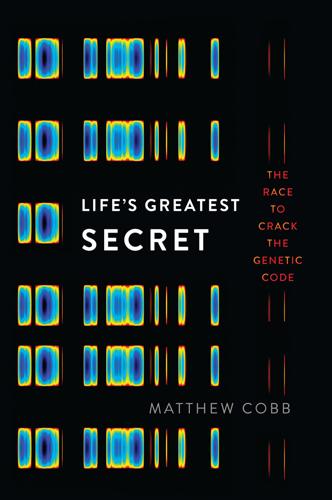
Life's Greatest Secret: The Race to Crack the Genetic Code
by
Matthew Cobb
Published 6 Jul 2015
What was initially a blind process has been utterly transformed over the past four decades, as modern biotechnology has exploited our ability to manipulate the genetic code to create organisms containing new genes, including genes from other species.4 New terms have been coined – biotechnology, genetic engineering, synthetic biology – but they all ultimately describe the use of genetic manipulation to alter living organisms.5 Many drugs, including hormones, are now produced by harnessing the power of genetic engineering, involving the insertion of the relevant gene into a microbe that then churns out the desired material.
…
Those intrigued by the remote possibility of weird life have come up with some potential indicators of its existence, such as the supposedly anomalous varnish that is found on desert rocks.29 However, something as impressive as the indirect evidence of the existence of dark matter and dark energy would be required for this hypothesis to be taken seriously. * The potential for synthetic biology is enormous. Scientists are already able to integrate unnatural amino acids into proteins, for example by manipulating enzymatic machinery associated with an ‘amber’ stop codon (UAG) that has been introduced into bacteria, yeast, the nematode worm Caenorhabditis elegans and even mammalian cells.30 A synthetic form of transfer RNA is used to allow the UAG codon to code for an unnatural amino acid, thereby producing a novel protein.
…
For the moment, this remains at the level of a technical breakthrough – as the title of the paper put it, the researchers had created ‘A semi-synthetic organism with an expanded genetic alphabet’. The two extra letters that were introduced into the DNA are currently mute; the expanded genetic alphabet does not yet form new words. But the authors made clear that their aim is to create a system in which unnatural base pairs will code for unnatural amino acids. The possibilities for synthetic biology – using living cells to produce new molecules – are almost endless. It is inevitable that these astonishing developments in our ability to manipulate the essential elements of life will soon come together. Someone will eventually create a system in which XNA carries unnatural base pairs that code for unnatural amino acids that are assembled into bizarre proteins, and an utterly novel form of life, created entirely through human ingenuity, will be only a step away.

The New Harvest: Agricultural Innovation in Africa
by
Calestous Juma
Published 27 May 2017
New techniques are currently pushing the boundaries of genetic plant breeding. As synthetic biology advances, genetic modification is also likely to continue to improve as new genes and traits are found. Second-generation technology now allows for stacked traits, transfer of one or more specific genes into an exact location in the “recipient plant genome,” and new traits that “increase photosynthetic efficiency, nitrogen use efficiency, aluminum tolerance, salinity tolerance and phosphate use efficiency in crop plants.” Improvements in synthetic biology will drastically simplify current plant-breeding methods. For example, using synthetic biology, scientists can insert multiple genes into a plant at one specific location that will “confer multiple traits (herbicide, insect, disease, stress resistance, and nutritional enhancement).”1 GM is not the only technical method for enhancing crops varieties.
…
x Foreword to the Second Edition This edition highlights the importance of leapfrogging in agricultural biotechnology. This includes the use of new genetic technologies that do not involve moving genes across species. The same leapfrogging strategies can be applied in other fields such as information and communications technologies, satellite technology, unmanned aerial vehicles, renewable energy, synthetic biology, and polymer chemistry. Judicious use of technologies from these fields can help Africa adopt more ecologically sound agricultural practices. The third purpose of this edition is to renew its optimistic message that Africa can feed itself in a generation. At its release this message appeared to some observers as wishful thinking.
…
For more on genetic editing, see “Genetically ‘Edited’ Fruit Could Soon Hit Supermarket Shelves,” Telegraph, August 13, 2014; Chidananda Nagamangala Kanchiswamy, Daniel James Sargent, Riccardo Velasco, Massimo E. Maffei, and Mickael Malnoy, “Looking Forward to Genetically Edited Fruit Crops,” Trends in Biotechnology (forthcoming); Nicholas J. Baltes and Daniel F. Voytas, “Enabling Plant Synthetic Biology Through Genome Engineering,” Trends in Biotechnology (forthcoming); and David Baulcombe, Jim Dunwell, Jonathan Jones, John Pickett, and Pere Puigdomenech, GM Science Update: A Report to Council for Science and Technology (London: UK Council for Science and Technology, n.d.). 5. For more on this, see Keun Lee, Calestous Juma, and John Mathews, “Innovation Capabilities for Sustainable Development Notes 6. 7. 8. 9. 10. 11. 12. 13. 14. 15. 279 in Africa,” WIDER Working Paper 2014/062 (Helsinki Finland: World Institute for Development Economics, March 2014).

Global Catastrophic Risks
by
Nick Bostrom
and
Milan M. Cirkovic
Published 2 Jul 2008
Software in the synthesis machines could be installed, and updated, to make it impossible for the machines to synthesize certain sequences of particular concern. This kind of D NA screening has already been adopted by a number of the DNA providers and has won endorsement within the synthetic biology 464 Global catastrophic risks community, which is a heavy user of D NA synthesis technologies (Declaration of the Second International Meeting on Synthetic Biology, 2006). Successful implementation of the protocol is in large part due to the proposal's non intrusive nature; rather than requiring formal oversight structures, which many scientists oppose for fear that progress might be hindered, the screening tool allows the laboratory to go about business as usual as the computer software engages in the invisible detective work.
…
Declaration of the Second International Meeting on Synthetic Biology (29 May 2006). Berkeley, CA. Available at https:j jdspace.mit.edujhandlej1 72 1 . 1 f18185 Endy, D . Presentation available at http:/ jopenwetware.orgjimagesjdjdefEnabling.pdf http:/ jopenwetware.orgjimagesjdjdejEnabling.pdf Accessed June 2007. Fitch, J.P., Raber, E . , and Imbro, D.R. (21 November 2003). Technology challenges in responding to biological or chemical attacks in the civilian sector. Science, 302(5649), 1 350- 1 3 54. Fu, P. (June 2006). A perspective of synthetic biology: assembling building blocks for novel functions.
…
Preserving the richness of our biosphere has value in its own right, over and above what it means to us humans. But we face another novel set of vulnerabilities. These stem not from our collective impact but from the greater empowerment of individuals or small groups by twenty-first century technology. The new techniques of synthetic biology could permit inexpensive synthesis of lethal biological weapons - on purpose, or even by mistake. Not even an organized network would be required: just a fanatic or a weirdo with the mindset of those who now design computer viruses - the mindset of an arsonist. Bio (and cyber) expertise will be accessible to millions.
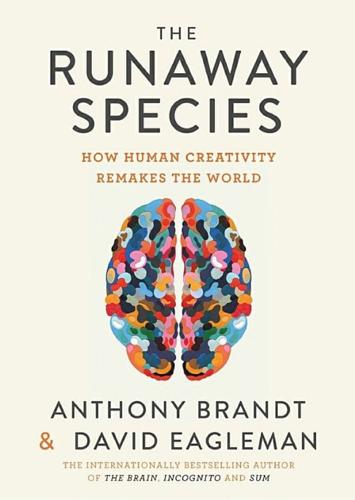
The Runaway Species: How Human Creativity Remakes the World
by
David Eagleman
and
Anthony Brandt
Published 30 Sep 2017
Grown up All Wrong: 75 Great Rock and Pop Artists from Vaudeville to Techno. Cambridge, Mass: Harvard University Press, 1998. Chukovskaia, Lydia, Peter Norman, and Anna Andreevna Akhmatova. The Akhmatova Journals 1938–41. London: Harvill, 1994. Church, George M., and Edward Regis. Regenesis: How Synthetic Biology Will Reinvent Nature and Ourselves. New York: Basic Books, 2012. Cichon, Steve. “Everything from This 1991 Radio Shack Ad You Can Now Do With Your Phone.” Huffington Post. Accessed August 19, 2015. <http://www.huffingtonpost.com/steve-cichon/radio-shack-ad_b_4612973.html> Cimons, Marlene. “New in Rescue Robots: Survivor Buddy.”
…
“Torrance Tests of Creative Thinking as Predictors of Personal and Public Achievement: A Fifty-Year Follow-Up.” Creativity Research Journal 22, no. 4 (2010): 361–68. Russell, Amy and Stephen Rice. “Sailing Seeds: An Experiment in Wind Dispersal.” Botanical Society of America. Accessed August 21, 2015. <http://botany.org/bsa/misc/mcintosh/dispersal.html> Rutherford, Adam. “Synthetic Biology and the Rise of the ‘Spider-Goats’” The Guardian. January 14, 2012. Accessed August 20, 2015. <http%3A%2F%2Fwww.theguardian.com%2Fscience%2F2012%2Fjan%2F14%2Fsynthetic-biology-spider-goat-genetics> Rydell, Robert W., Laura Burd. Schiavo, and Robert Bennett. Designing Tomorrow: America’s World’s Fairs of the 1930s.
…
Lazaris et al., “Spider Silk Fibers Spun from Soluble Recombinant Silk Produced in Mammalian Cells,” Science 295, no. 5554 (2002): pp. 472–476, <http://dx.doi.org/10.1126/science.1065780> 2 Hadley Leggett, “One Million Spiders Make Golden Silk for Rare Cloth,” Wired, September 23, 2009, accessed August 21, 2015, <http://www.wired.com/2009/09/spider-silk/> 3 Adam Rutherford, “Synthetic Biology and the Rise of the ‘Spider-Goats,’” The Guardian, January 14, 2012, accessed August 20, 2015, <http%3A%2F%2Fwww.theguardian.com%2Fscience%2F2012%2Fjan%2F14%2Fsynthetic-biology-spider-goat-genetics> 4 Mark Miodownik, Stuff Matters: Exploring the Marvelous Materials That Shape Our Man-made World (London: Penguin, 2013).

Spies, Lies, and Algorithms: The History and Future of American Intelligence
by
Amy B. Zegart
Published 6 Nov 2021
America’s cloak-and-dagger agency had finally joined the social media age. The Internet went wild. “Who knew?—they have a sense of humor,” reported CNN.1 The CIA’s Twitter debut was a light-hearted moment in a darkening landscape. New technologies such as artificial intelligence (AI), Internet connectivity, quantum computing, and synthetic biology are disrupting global economics and politics at unprecedented speed. Never before has the United States faced a more dynamic and dangerous world. For the CIA and the seventeen other agencies comprising the U.S. Intelligence Community (IC), this is a moment of reckoning.2 Artificial intelligence is transforming both commerce and defense in ways that could destabilize social orders and alter the global distribution of power.
…
In 2019, Google announced it had achieved “quantum supremacy”—a computing breakthrough so powerful that a math problem a supercomputer would need ten thousand years to solve could be cracked by its machine in just three minutes and twenty seconds. Experts likened it to the Wright Brothers’ first flight: the dawn of a technological era opening vast new possibilities. Not all of them are good. Quantum computing could eventually unlock the encryption protecting nearly all of the world’s data today.10 Synthetic biology is enabling scientists to engineer living organisms and create new ones not found in nature, with the potential for revolutionary improvements in the production of food, medicines, and data storage, as well as new weapons of war.11 Because living cells are programmable like computers, they could eventually be engineered to make just about anything.
…
In 2014, the notion that AI could create fake images so real that you couldn’t tell the difference was inconceivable. Now it’s unavoidable. The code is open, available, and so simple, even a high schooler with no background in computer science can make deepfakes. And we haven’t even talked about information warfare or synthetic biology. The point is, good intelligence oversight requires much more technical knowledge than it used to—and Congress doesn’t have it. In 2020, Congress had 210 lawyers but just 32 engineers.144 There were only three engineers in the entire U.S. Senate.145 When Facebook CEO Mark Zuckerberg testified before a joint hearing of the Senate’s Commerce and Judiciary Committees in April 2018 to discuss privacy issues and Russian disinformation, it was a jaw-dropping moment revealing just how little senators knew about the products and companies that are transforming global politics, commerce, and civil society.146 Senator Lindsey Graham (R-SC) asked whether Twitter was the same thing as Facebook.

Machine, Platform, Crowd: Harnessing Our Digital Future
by
Andrew McAfee
and
Erik Brynjolfsson
Published 26 Jun 2017
They share step-by-step instructions, recipes, blueprints, schematics for electronic circuits, files for generating 3D-printed parts, and troubleshooting tips for an astonishing range of products—everything from autonomous go-carts to homemade Geiger counters. The maker movement keeps expanding. It’s now possible to buy inexpensive kits and materials for synthetic biology, or “the design and construction of novel artificial biological pathways, organisms, or devices, or the redesign of existing ones,” as the synthetic biology project defines it. Around the world, members of the “DIY bio” movement create their own useful strings of the amino acids denoted G, C, T, and A that carry the code of life, then share their recipes over the net.
…
Shaw Composite Fund,” June 2011, http://data.treasury.ri.gov/dataset/96dcb86f-e97e-4b05-8ce2-a40289e477a6/resource/ab68154d-9a7e-4a7d-82c9-d27998d1f2bc/download/DE-Shaw-Hedge-Fund-Investment-Due-Diligence-Report-0611Redacted.pdf. 267 an annualized return of 15% over a decade: Nathan Vardi, “Rich Formula: Math and Computer Wizards Now Billionaires Thanks to Quant Trading Secrets,” Forbes, September 29, 2015, http://www.forbes.com/sites/nathanvardi/2015/09/29/rich-formula-math-and-computer-wizards-now-billionaires-thanks-to-quant-trading-secrets/4/#58ea036a3d61. 267 It averaged a greater than 70% annual return: Richard Rubin and Margaret Collins, “How an Exclusive Hedge Fund Turbocharged Its Retirement Plan,” Bloomberg, June 16, 2015, https://www.bloomberg.com/news/articles/2015-06-16/how-an-exclusive-hedge-fund-turbocharged-retirement-plan. 267 “perhaps the world’s greatest moneymaking machine”: Katherine Burton, “Inside a Moneymaking Machine like No Other,” Bloomberg, November 21, 2016, https://www.bloomberg.com/news/articles/2016-11-21/how-renaissance-s-medallion-fund-became-finance-s-blackest-box. 267 “That seemed way too low to me”: John Fawcett, interview by the authors, December 2016. 268 “The way I frame the problem for Quantopian is”: Ibid. 269 Quantopian had attracted to its platform: Quantopian, accessed March 10, 2017, https://www.quantopian.com/100000. 269 “The thing they often have in common”: Fawcett, interview, December 2016. 269 “We’re trying to get the community”: Ibid. 270 “the scarce resource in quantitative investing is talent”: Taylor Hall, “Point72’s Cohen Bets $250 Million on Crowd-Sourced Quantopian,” Bloomberg, July 27, 2016, https://www.bloomberg.com/news/articles/2016-07-27/point72-s-cohen-bets-250-million-on-crowd-sourced-quantopian. 271 “the design and construction”: Synthetic Biology Project, “What Is Synthetic Biology?” accessed February 8, 2017, http://www.synbioproject.org/topics/synbio101/definition. 272 The campaign attracted over $70,000: Indiegogo, “DIY CRISPR Kits, Learn Modern Science by Doing,” accessed February 8, 2017, https://www.indiegogo.com/projects/diy-crispr-kits-learn-modern-science-by-doing#. 272 “I played God”: Andrew Tarantola, “I Played God with The Odin’s DIY CRISPR Kit,” Engadget, June 30, 2016, https://www.engadget.com/2016/06/30/i-played-god-with-the-odins-diy-crispr-kit. 272 Harper’s Open Agriculture Initiative: Open Agriculture Initiative, “Farming for the Future,” accessed February 8, 2017, http://openag.media.mit.edu. 272 “permissionless innovation”: Adam Thierer, Permissionless Innovation: The Continuing Case for Comprehensive Technological Freedom (Arlington, VA: Mercatus Center, 2014), section 1.02. 273 He came across a video: “Large Mechanical Hand,” YouTube, April 2, 2011, 0:48, https://www.youtube.com/watch?
…
J., 305 Spotify, 146–48 stacks, 295–96, 298 Stallman, Richard, 243 standard partnership creativity and, 119, 120 defined, 37 demand for routine skills and, 321 HiPPO and, 45, 59 inversion of, 56–60 modified by data-driven decision making, 46–60 structure of, 31 Starbucks, 185 statistical pattern recognition, 69, 72–74, 81–82, 84 statistical prediction, 41 status quo bias, 21 steampunk, 273 Sterling, Bruce, 295, 298 S3 (Amazon Web Service), 143 Stites-Clayton, Evan, 263 STR, 221 “stranger-danger” bias, 210 streaming services, 146–48 Street, Sam, 184 Street Bump, 162–63 Stripe, 171–74, 205 structured interviews, 57 students, gifted, 40 Sturdivant, Jeremy, 286 subscription services, 147–48 suitcase words, 113 Suleyman, Mustafa, 78 “superforecasters,” 60–61 supervised learning, 76 supply and demand; See also demand; demand curves; supply curves O2O platforms for matching, 193 platforms and, 153–57 and revenue management, 47 supply curves, 154–56 Supreme Court, US, 40–41 surge pricing, 55 Svirsky, Dan, 209n Sweeney, Latanya, 51–52 Swift, Taylor, 148 switching costs, 216–17, 219 Sydney, Australia, hostage incident (2014), 55 symbolic artificial intelligence, 69–72 introduction of, 69–70 reasons for failure of, 70–72 synthetic biology, 271–72 systems integration, 142 System 1/System 2 reasoning, 35–46 and confirmation bias, 57 defined, 35–36 and second-machine-age companies, 325 undetected biases and, 42–45 weaknesses of, 38–41 Szabo, Nick, 292, 294–95 Tabarrok, Alex, 208–9 Tapscott, Alex, 298 Tapscott, Don, 298 Tarantino, Quentin, 136n TaskRabbit, 261, 265 taxi companies, Uber’s effect on, 201 TCE (transaction cost economics), 312–16 TechCrunch, 296 technology (generally) effect on employment and wages, 332–33 effect on workplace, 334 as tool, 330–31 Teespring, 263–64 Teh, Yee-Whye, 76 telephones, 129–30, 134–35 tenure predictions, 39 Tesla (self-driving automobile), 81–82, 97 Tetlock, Philip, 59 text messages, 140–41 Thank You for Being Late (Friedman), 135 theories, scientific, 116–17 theory of the firm, See TCE (transaction cost economics) Thierer, Adam, 272 “thin” companies, 9 Thingiverse, 274 Thinking, Fast and Slow (Kahneman), 36, 43 Thomas, Rob, 262 Thomke, Stefan, 62–63 3D printing, 105–7, 112–13, 273, 308 Thrun, Sebastian, 324–25 TNCs (transportation network companies), 208 TØ.com, 290 Tomasello, Michael, 322 Topcoder, 254, 260–61 Torvalds, Linus, 240–45 tourists, lodging needs of, 222–23 Tower Records, 131, 134 trade, international, 291 trading, investment, 266–70, 290 Transfix, 188, 197, 205 transparency, 325 transportation network companies (TNCs), 208; See also specific companies, e.g.: Uber Transportation Security Administration (TSA), 89 Tresset, Patrick, 117 trucking industry, 188 T-shirts, 264 tumors, 3D modeling of, 106 Turing, Alan, 66, 67n Tuscon Citizen, 132 TV advertising, 48–51 Tversky, Amos, 35 Twitter, 234 two-sided networks credit cards, 214–16 Postmates, 184–85 pricing in, 213–16, 220 pricing power of, 210–11 switching costs, 216–17 Uber, 200, 201, 218–19 two-sided platforms, 174, 179–80 Two Sigma, 267 Uber driver background checks, 208 future of, 319–20 information asymmetry management, 207–8 lack of assets owned by, 6–7 as means of leveraging assets, 196–97 network effects, 193, 218 as O2O platform, 186 origins, 200–202 and Paris terrorist attack, 55 pricing decisions, 212–15, 218–19 rapid growth of, 9 regulation of, 201–2 reputational systems, 209 routing problems, 194 separate apps for drivers and riders, 214 and Sydney hostage incident, 54–55 value proposition as compared to Airbnb, 222 UberPool, 9, 201, 212 UberPop, 202 UberX, 200–201, 208, 212, 213n Udacity, 324–25 unbundling, 145–48, 313–14 unit drive, 20, 23 Universal Music Group, 134 University of Louisville, 11 University of Nicosia, 289 unlimited service ClassPass Unlimited, 178–79, 184 Postmates Plus Unlimited, 185 Rent the Runway, 187–88 unsupervised learning, 76, 80–81 Upwork, 189, 261 Urmson, Chris, 82 used car market, information asymmetry and, 207 Usenet, 229, 271 user experience/interface as platforms’ best weapon, 211 and successful platforms, 169–74 users, as code developers, 242 “Uses of Knowledge in Society, The” (Hayek), 235–37 utilization rate, O2O platforms, 196–97 Van Alstyne, Marshall, 148 Van As, Richard, 272–74 Vancouver, Canada, Uber prohibition in, 202 venture capital, DAO vs., 302 verifiability, 248 verifiable/reversible contributions, 242–43 Verizon, 96, 232n Veronica Mars (movie), 262 Veronica Mars (TV show), 261–62 Viant, 171 video games, AI research and, 75 videos, crowd-generated, 231–32 Viper, 163 virtualization, 89–93; See also robotics vision, Cambrian Explosion and, 95 “Voice of America” (Wright), 229–30 von Hippel, Eric, 265 wage declines, 332 Wagner, Dan, 48–50 Waldfogel, Joel, 144 Wales, Jimmy, 234, 246–48 Walgreens, 185 Walmart, 7, 47 Wanamaker, John, 8–9 warehousing, 102–3, 188 Warner Brothers, 262 Warner Music Group, 134 Washington Post, 132 Washio, 191n waste reduction, 197 Watson (IBM supercomputer) health claim processing, 83 Jeopardy!
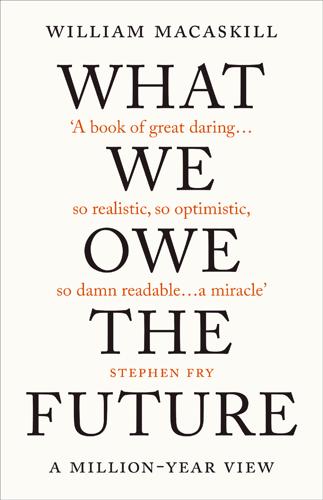
What We Owe the Future: A Million-Year View
by
William MacAskill
Published 31 Aug 2022
So the time for thinking about them is when there is still some chance of getting a handle on them.”44 He’s right. With climate change, we may have missed one moment of plasticity, and we should hope there are more to come. But perhaps we can also learn a more general lesson and respond more rapidly to new challenges—like artificial intelligence, synthetic biology, tensions between the United States and China, the rise of new ideologies, and the potential slowdown in technological progress—as soon as they arise. These are some of the issues I’ll cover in the next two parts of this book. Indeed, over the next two chapters, I’ll suggest that the dynamic of “early plasticity, later rigidity” could be true for history as a whole.
…
Biotechnology is an area of research that tries to build new biological entities or alter those already found in nature. Progress in this field has been extremely rapid. We typically think Moore’s law—halving the cost of computing power every few years—is the prime example of quick progress, but many technologies in synthetic biology actually improved faster than that.17 For example, the first time we sequenced the human genome, it cost hundreds of millions of dollars to do so. Just twenty years later, sequencing a full human genome costs around $1,000.18 A similar story is true for the cost to synthesise single-strand DNA, as well as the cost of gene editing.
…
For example, there is now some evidence, based on genetic analysis, that the 1977 Russian flu pandemic, which according to one estimate killed seven hundred thousand people, may have either leaked from a lab or resulted from a poorly implemented vaccine trial.51 I think it is difficult to rule out the possibility that synthetic biology could threaten human extinction. One could try to approach this problem by anticipating specific ways novel technology could be misused. However, in doing so one would need to carefully balance the risk mitigation benefits of improved foresight against the risks of lab accidents and inspiring bad actors.

Exponential: How Accelerating Technology Is Leaving Us Behind and What to Do About It
by
Azeem Azhar
Published 6 Sep 2021
Over the years, these chemicals have become progressively cheaper and cheaper. Meanwhile, advancements in electronics have allowed scientists to create cheaper sensors, and developments in robotics have allowed for more automation of the manual parts of the convoluted process.13 Genetic coding is but one aspect of the revolution in biotech. Another is synthetic biology, a field that melds several disciplines, including computer science, biology, electrical engineering and biophysics, to create novel biological components and systems. It too is on an exponential march – one that is churning out breakthroughs in agriculture, pharma, materials and healthcare.
…
Even in poorer countries, old gas and coal plants are being wound down. Oil companies may well have found better things to do with their time than pump oil. Abu Dhabi’s investments in solar farms across the UAE and in Africa demonstrate the scale of this shift. But solar and wind power will only be part of the transition to a sustainable future: the methods of synthetic biology will allow us to shift away from using fossil fuels in pharmaceuticals and oil-derived materials such as plastics. A decade from now, human genome sequences will be approaching a dollar apiece. There will be little reason not to sequence every person as part of their normal medical procedures.
…
Abu Dhabi, UAE, 250 Acemoglu, Daron, 139 Acorn Computers, 16, 21 Ada Lovelace Institute, 8 additive manufacturing, 43–4, 46, 48, 88, 166, 169, 175–9 Adidas, 176 advertising, 94, 112–13, 116, 117, 227–8 AdWords, 227 aeroponics, 171 Afghanistan, 38, 205 Africa, 177–8, 182–3 Aftenposten, 216 Age of Spiritual Machines, The (Kurzweil), 77 agglomeration, 181 Air Jordan sneakers, 102 Airbnb, 102, 188 aircraft, 49–50 Alexandria, Egypt, 180 AlexNet, 33 Algeciras, HMM 61 Alibaba, 48, 102, 108, 111, 122 Alipay, 111 Allen, Robert, 80 Alphabet, 65, 113–14, 131, 163 aluminium, 170 Amazon, 65, 67–8, 94, 104, 108, 112, 122, 135–6 Alexa, 25, 117 automation, 135–6, 137, 139, 154 collective bargaining and, 163 Covid-19 pandemic (2020–21), 135–6 drone sales, 206 Ecobee and, 117 Go stores, 136 Kiva Systems acquisition (2012), 136 management, 154 Mechanical Turk, 142–3, 144, 145 monopoly, 115, 117, 122 Prime, 136, 154 R&D, 67–8, 113 Ami Pro, 99 Amiga, 16 Anarkali, Lahore, 102 anchoring bias, 74 Android, 85, 94, 117, 120 Angola, 186 Ant Brain, 111 Ant Financial, 111–12 antitrust laws, 114, 119–20 Apache HTTP Server, 242 Appelbaum, Binyamin, 63 Apple, 47, 62, 65, 85, 94, 104, 108, 112, 122 App Store, 105, 112, 115 chip production, 113 Covid-19 pandemic (2019–21), 222–3 data collection, 228 iOS, 85 iPhone, 47, 62, 85, 94, 105 media subscription, 112 watches, 112 APT33 hacker group, 198 Aral, Sinan, 238 Aramco, 108, 198 Armenia, 206–7 Arthur, William Brian, 110, 123 artificial intelligence, 4, 8, 31–4, 54, 88, 113, 249 academic brain drain, 118 automation, 125–42 data and, 31–2, 142 data network effect, 106–7 drone technology and, 208, 214 education and, 88 employment and, 126–7 healthcare and, 88, 103 job interviews and, 153 regulation of, 187, 188 arXiv, 59 Asana, 151 Asian Development Bank, 193 Aslam, Yaseen, 148 Assembly Bill 5 (California, 2019), 148 asymmetric conflict, 206 AT&T, 76, 100 Atari, 16 attack surfaces, 192–3, 196, 209, 210 Aurora, 141 Australia, 102, 197 automation, 125–42 autonomous weapons, 208, 214 Azerbaijan, 173, 206–7 Ballmer, Steve, 85 Bangladesh, 175 banking, 122, 237 Barcelona, Catalonia, 188 Barlow, John Perry, 184 Barrons, Richard, 195, 211 Bartlett, Albert, 73 batteries, 40, 51, 53–4, 250, 251 Battle of the Overpass (1937), 162 Bayraktar TB2 drone, 206 Bee Gees, 72 Bekar, Clifford, 45 Bell Labs, 18 Bell Telephone Company, 100 Benioff, Marc, 108–9 Bentham, Jeremy, 152 Berlin Wall, fall of (1989), 4 Bermuda, 119 Berners-Lee, Timothy, 55, 100, 160, 239 Bessen, James, 46 Bezos, Jeffrey, 135–6 BGI, 41 Biden, Joseph, 225 Bing, 107 biological weapons, 207, 213 biology, 10, 39, 40–42, 44, 46 genome sequencing, 40–41, 90, 229, 234, 245–7, 250, 252 synthetic biology, 42, 46, 69, 174, 245, 250 biopolymers, 42 bits, 18 Black Death (1346–53), 12 BlackBerry, 120 Blair, Tony, 81 Bletchley Park, Buckinghamshire, 22 blitzscaling, 110 Blockbuster, 138 BMW, 177 Boeing, 51, 236 Bol.com, 103 Bollywood, 181 Boole, George, 18 Bork, Robert, 114–15, 117, 119 Bosworth, Andrew, 233 Boyer, Pascal, 75 Boyle, James, 234 BP, 92, 158 brain, 77 Braudel, Fernand, 75 Brave, 242 Brazil, 202 Bremmer, Ian, 187 Bretton Woods Conference (1944), 87 Brexit (2016–20), 6, 168 British Broadcasting Corporation (BBC), 87, 129, 191 Brookings Institution, 130 BT, 123 Bulgaria, 145 Bundy, Willard Legrand, 149 Busan, South Korea, 56 business, 82, 92–124 diminishing returns to scale, 93, 108 economic dynamism and, 117 economies of scale, 50, 92 growth, 110–13 increasing returns to scale, 108–10 intangible economy, 104–7, 118, 156, 175, 180 linear value chains, 101 market share, 93–6, 111 monopolies, 10, 71, 94, 95, 114–24 network effect, 96–101 platform model, 101–3, 219 re-localisation, 11, 166–79, 187, 252, 255 state-sized companies, 11, 67 superstar companies, 10, 94–6 supply chains, 61–2, 166–7, 169, 175, 187, 252, 255 taxation of, 96, 118–19 Butler, Nick, 179 ByteDance, 28 C40 initiative, 189 Cambridge University, 127, 188 cancer, 57–8, 127 Capitol building storming (2021), 225 car industry, 93 carbon emissions, 35, 90, 251 Carlaw, Kenneth, 45 Carnegie, Andrew, 112 Carnegie Mellon University, 131 Catholic Church, 83, 88 censorship, 216–17, 224–6, 236 Central Intelligence Agency (CIA), 194 Cerebras, 34 cervical smears, 57–8 chemical weapons, 207, 213 Chen, Brian, 228 chewing gum, 78 Chicago Pile-1 reactor, 64 Chile, 170 China automation in, 127, 137 brainwave reading in, 152 Covid-19 pandemic (2019–21), 245 drone technology in, 207 Great Firewall, 186, 201 Greater Bay Area, 182 horizontal expansion in, 111–12 manufacturing in, 176 misinformation campaigns, 203 raw materials, demand for, 178 Singles’ Day, 48 social credit systems, 230 superstar companies in, 95 US, relations with, 166 chips, 19–22, 28–9, 48–9, 52, 113, 251 Christchurch massacre (2019), 236 Christensen, Clayton, 24 CIPD, 153 cities, 11, 75, 169, 179–84, 188, 255 Clegg, Nick, 225–6, 235 climate change, 90, 169, 187, 189, 251, 252 cloud computing, 85, 112 Cloudflare, 200 cluster bombs, 213 CNN, 185, 190 coal, 40, 65, 172 Coase, Ronald, 92 Coca-Cola, 93 code is law, 220–22, 235 cold fusion, 113–14 Cold War (1947–91), 194, 212, 213 collective bargaining, 147, 149, 154, 156, 162–5 Colombia, 145 colonialism, 167 Columbus, Christopher, 4 combination, 53–7 Comical Ali, 201 commons, 234–5, 241–3, 256 companies, see business comparative advantage, 170 complex systems, 2 compounding, 22–3, 28 CompuServe, 100 computing, 4, 10, 15–36, 44, 46, 249 artificial intelligence, 4, 8, 31–4, 54, 88 cloud computing, 85, 112 internet, 47–8, 55, 65, 84 Law of Accelerating Returns, 30–31, 33, 35 machining, 43 Moore’s Law, see Moore’s Law quantum computing, 35 transistors, 18–22, 28–9, 48–9, 52 conflict, 87, 189, 190–215 attack surfaces, 192–3, 196, 209, 210 cyberattacks, 11, 114, 140, 181, 187, 190–200, 209–14, 256 de-escalation, 212–13 drone technology, 11, 192, 204–9, 214, 256 institutional change and, 87 misinformation, 11, 191, 192, 200–204, 209, 212, 217, 225 new wars, 194 non-proliferation, 213–14 re-localisation and, 189, 193, 194, 209 consent of the networked, 223 Costco, 67 Coursera, 58 Covid-19 pandemic (2019–21), 12–13, 59, 78–9, 131, 245–9 automation and, 127, 135, 136 cities and, 183 contact-tracing apps, 222–3 gig economy and, 146 lockdowns, 12, 152, 176, 183, 246 manufacturing and, 176 misinformation and, 202–4, 247–8 preprint servers and, 60 recession (2020–21), 178 remote working and, 146, 151, 153 supply chains and, 169, 246 vaccines, 12, 202, 211, 245–7 workplace cultures and, 151, 152 cranks, 54 credit ratings, 162, 229 critical thinking skills, 212 Croatia, 145 Crocker, David, 55 crowdsourcing, 143–4 Cuba, 203 Cuban missile crisis (1962), 99, 212 cultural lag, 85 cyberattacks, 11, 114, 140, 181, 187, 190–200, 209–14, 256 CyberPeace Institute, 214 Daniel, Simon, 173–4 Dar es Salaam, Tanzania, 183 Darktrace, 197 data, 8, 11, 71, 217–19, 226–31, 235, 237–42, 256 AI and, 8, 32, 33, 58, 106 compensation for, 239 commons, 242 cyberattacks and, 196 doppelgängers, 219, 226, 228, 239 interoperability and, 237–9 network effects, 106–7, 111 protection laws, 186, 226 rights, 240 Daugherty, Paul, 141 DDT (dichlorodiphenyltrichloroe thane), 253 death benefits, 151 Dediu, Horace, 24, 30 deep learning, 32–4, 54, 58, 127 deforestation, 251 dehumanisation, 71, 154, 158 deindustrialisation, 168 Deliveroo, 154, 163 Delphi, 100 dematerialised techniques, 166, 175 Denmark, 58, 160, 199–200, 257 Deutsche Bank, 130 Diamandis, Peter, 5 Dickens, Charles, 80 digital cameras, 83–4 Digital Geneva Convention, 211 Digital Markets Act (EU, 2020), 122 digital minilateralism, 188 Digital Nations group, 188 Digital Services Act (EU, 2020), 123 diminishing returns, 93, 108 disinformation, see misinformation DoorDash, 147, 148, 248 dot-com bubble (1995–2000), 8, 108, 150 Double Irish tax loophole, 119 DoubleClick, 117 drone technology, 11, 192, 204–9, 214, 256 Dubai, UAE, 43 Duke University, 234 dystopia, 208, 230, 253 Eagan, Nicole, 197 eBay, 98, 121 Ecobee, 120 economies of scale, 50, 92 Economist, The, 8, 65, 119, 183, 239 economists, 63 Edelman, 3 education artificial intelligence and, 88 media literacy, 211–12 Egypt, 145, 186 Elance, 144 electric cars, 51, 69, 75, 173–4, 177, 250 electricity, 26, 45, 46, 54, 157, 249–50 see also energy Electronic Frontier Foundation, 184 email, 6, 55 embodied institutions, 82 employment, 10, 71, 125–65 automation, 125–42 collective bargaining, 147, 149, 154, 156, 162–5 dehumanisation and, 71, 154, 158 flexicurity, 160–61, 257 gig economy, 10, 71, 142–9, 153, 162, 164, 239, 252, 255 income inequality, 155–8, 161, 168 lump of labour fallacy, 139 management, 149–54, 158–9 protections, 85–6, 147–9 reskilling, 159–60 universal basic income (UBI), 160, 189 Enclosure, 234–5, 241 energy, 11, 37–8, 39–40, 44, 46, 172–4, 250 cold fusion, 113–14 fossil fuels, 40, 159, 172, 250 gravitational potential, 53 solar power, 37–8, 53, 65, 77, 82, 90, 171, 172, 173, 249, 250, 251 storage, 40, 53, 114, 173–4, 250, 251 wind power, 39–40, 52 Energy Vault, 53–4, 173 Engels, Friedrich, 81 Engels’ pause, 80, 81 environmental movement, 73 Epic Games, 116 estate agents, 100 Estonia, 188, 190–91, 200, 211 Etzion Airbase, Sinai Peninsula, 195 European Commission, 116, 122, 123 European Space Agency, 56 European Union, 6, 82, 147, 186, 226 Excel, 99 exogeny, 2 exponential gap, 9, 10, 67–91, 70, 89, 253 cyber security and, 193 institutions and, 9, 10, 79–88, 90 mathematical understanding and, 71–5 predictions and, 75–9 price declines and, 68–9 superstar companies and, 10, 94–124 exponential growth bias, 73 Exponential View, 8–9 externalities, 97 extremism, 232–4 ExxonMobil, 65, 92 Facebook, 27, 28, 65, 94, 104, 108, 122, 216–17, 218, 219, 221–2, 223 advertising business, 94, 228 censorship on, 216–17, 224–6, 236 collective bargaining and, 164 data collection on, 228, 239–40 extremism and, 233–4 Instagram acquisition (2012), 117, 120 integrity teams, 234 interoperability, 237–8 Kenosha unrest shooting (2020), 224 misinformation on, 201, 225 network effect and, 98, 223 Oculus acquisition (2014), 117 pay at, 156–7 Phan photo controversy (2016), 216–17, 224, 225 platform model, 101 polarisation and, 233 relationship status on, 221–2 Rohingya ethnic cleansing (2018), 224, 225 US presidential election (2016), 217 WhatsApp acquisition (2014), 117 facial recognition, 152, 208 Factory Act (UK, 1833), 81 Fairchild Semiconductor, 19, 21 fake news, 201–4 family dinners, 86 farming, 170–72, 251 Farrar, James, 148 fax machines, 97 Federal Aviation Administration (US), 236 feedback loops, 3, 13 fertilizers, 35, 90 5G, 203 Financial Conduct Authority, 122 Financial Times, 183 Finland, 160, 211–12 Fitbit, 158 Fiverr, 144 flashing of headlights, 83 flexicurity, 160, 257 flints, 42 flywheels, 54 Ford, 54, 92, 162 Ford, Gerald, 114 Ford, Henry, 54, 162 Ford, Martin, 125 Fortnite, 116 fossil fuels, 40, 159, 172 France, 100, 138, 139, 147, 163 free-market economics, 63–4 freelance work, 10, 71, 142–9 Frey, Carl, 129, 134, 141 Friedman, Milton, 63–4, 241 Friedman, Thomas, 167 FriendFeed, 238 Friendster, 26 Fudan University, 245 fund management, 132 Galilei, Galileo, 83 gaming, 86 Gates, Bill, 17, 25, 84 gender, 6 General Agreement on Tariffs and Trade, 87 General Data Protection Regulation (GDPR), 226 General Electric, 52 General Motors, 92, 125, 130 general purpose technologies, 10, 45–8 generative adversarial networks (GANs), 58 Geneva Conventions, 193, 199, 209 Genghis Khan, 44 GEnie, 100 genome sequencing, 40–41, 90, 229, 234, 245–7, 250, 252 Germany, 75, 134, 147 Giddens, Anthony, 82 gig economy, 10, 71, 142–9, 153, 162, 164, 239, 252, 255 Gilbreth, Lillian, 150 Ginsparg, Paul, 59 GitHub, 58, 60 GlaxoSmithKline, 229–30 global financial crisis (2007–9), 168 Global Hawk drones, 206 global positioning systems (GPS), 197 globalisation, 11, 62, 64, 156, 166, 167–71, 177, 179, 187, 193 internet and, 185 conflict and, 189, 193, 194 Glocer, Thomas, 56 Go (game), 132 GOAT, 102 Gojek, 103 Golden Triangle, 170 Goldman Sachs, 151 Goodfellow, Ian, 58 Google, 5, 35, 36, 94, 98, 104, 108, 115, 122 advertising business, 94, 112–13, 116, 117, 227 Android, 85, 94, 117, 120 chip production, 113 Covid-19 pandemic (2019–21), 222–3 data network effect, 106–7 death benefits, 151 Double Irish tax loophole, 119 Maps, 113 quantum computing, 35 R&D, 114, 118 vertical integration, 112–13, 116 X, 114 YouTube acquisition (2006), 112, 117 Gopher, 59, 100 GPT-3, 33 Graeber, David, 133–4 Grand Bazaar, Istanbul, 102 Graphcore, 34, 35 graphics chips, 34 Grateful Dead, The, 184 gravitational potential energy, 53 gravity bombs, 195 Greater Bay Area, China, 182 Greenberg, Andy, 199 Gross, Bill, 53 Grove, Andrew, 17 GRU (Glavnoje Razvedyvatel’noje Upravlenije), 199 Guangzhou, Guangdong, 182 Guardian, 8, 125, 154, 226, 227 Guiyang, Guizhou, 166 H1N1 virus, 75 Habermas, Jürgen, 218 Hard Times (Dickens), 80 Hardin, Garrett, 241 Harop drones, 207–8 Harpy drones, 207–8 Harvard University, 150, 218, 220, 221, 253 healthcare artificial intelligence and, 57–8, 88, 103 data and, 230, 239, 250–51 wearable devices and, 158, 251 Helsinki, Finland, 160 Herlev Hospital, Denmark, 58 Hinton, Geoffrey, 32, 126–7 HIPA Act (US, 1996), 230 Hitachi, 152 Hobbes, Thomas, 210 Hoffman, Josh, 174 Hoffman, Reid, 110, 111 Holmes, Edward, 245 homophily, 231–4 Hong Kong, 182 horizontal expansion, 111–12, 218 Houston Islam protests (2016), 203 Houthis, 206 Howe, Jeff, 143 Hsinchu, Taiwan, 181 Hughes, Chris, 217 Hull, Charles, 43 Human + Machine (Daugherty), 141 human brain, 77 human genome, 40–41, 90, 229, 234, 250 human resources, 150 Hussein, Saddam, 195 Hyaline, 174 hydroponics, 171 hyperinflation, 75 IBM, 17, 21, 47, 98 IDC, 219 Ideal-X, 61 Ikea, 144 Illumina, 41 Ilves, Toomas Hendrik, 190 ImageNet, 32 immigration, 139, 168, 183–4 Impossible Foods, 69 Improv, 99 income inequality, 155–8, 161, 168 India, 103, 145, 181, 186, 224, 253, 254 Indonesia, 103 Industrial Revolution (1760–1840), 79–81, 157, 235 informational networks, 59–60 ING, 178 innovation, 14, 117 Innovator’s Dilemma, The (Christensen), 24 Instagram, 84, 117, 120, 121, 237 institutions, 9, 10, 79–88, 90–91 path dependence, 86–7 punctuated equilibrium, 87–8 intangible economy, 104–7, 118, 156, 175, 180 integrated circuits, 19 Intel, 16–17, 19, 163 intellectual property law, 82 Intermediate-Range Nuclear Forces Treaty (1987), 237 International Alliance of App-Based Transport Workers, 164 International Court of Justice, 224 International Criminal Court, 208 International Energy Agency, 77, 82 International Labour Organization, 131 International Monetary Fund (IMF), 87, 167, 187 international organisations, 82 International Organization for Standardization, 55, 61 International Rescue Committee, 184 International Telecommunication Union, 55 internet, 7, 47–8, 55, 65, 72, 75, 84–5, 88, 115, 184–6 code is law, 220–22, 235 data and, 11, 32, 71 informational networks, 59–60 localisation, 185–6 lockdowns and, 12 network effect, 100–101 online shopping, 48, 61, 62, 75, 94, 102, 135 platform model and, 102 public sphere and, 223 standardisation, 55 Wi-Fi, 151 interoperability, 55, 120–22, 237–9, 241, 243, 256–7 iPhone, 47, 62, 85, 94, 115, 175 Iran, 186, 196, 198, 203, 206 Iraq, 195–6, 201, 209 Ireland, 57–8, 119 Islamic State, 194, 233 Israel, 37, 188, 195–6, 198, 206, 207–8 Istanbul, Turkey, 102 Jacobs, Jane, 182 Japan, 37, 152, 171, 174 Jasanoff, Sheila, 253 JD.com, 137 Jena, Rajesh, 127 Jio, 103 job interviews, 153, 156 John Paul II, Pope, 83 Johnson, Boris, 79 Jumia, 103 just in time supply chains, 61–2 Kahneman, Daniel, 74 KakaoTalk, 27 Kaldor, Mary, 194 Kapor, Mitchell, 99 Karunaratne, Sid, 140–41, 151 Kenosha unrest shooting (2020), 224 Keynes, John Maynard, 126, 158 Khan, Lina, 119 Khartoum, Sudan, 183 Kim Jong-un, 198 King’s College London, 179 Kiva Systems, 136 Kobo360, 145 Kodak, 83–4, 88 Kranzberg, Melvin, 254 Krizhevsky, Alex, 32–3, 34 Kubursi, Atif, 178 Kurdistan Workers’ Party, 206 Kurzweil, Ray, 29–31, 33, 35, 77 Lagos, Nigeria, 182 Lahore, Pakistan, 102 landmines, 213 Law of Accelerating Returns, 30–31, 33, 35 Laws of Motion, 20 learning by doing, 48, 53 Leggatt, George, 148 Lemonade, 56 Lessig, Larry, 220–21 Leviathan (Hobbes), 210 Li Fei-Fei, 32 life expectancy, 25, 26 light bulbs, 44, 157 Lime, 27 Limits to Growth, The (Meadows et al.), 73 linear value chains, 101 LinkedIn, 26, 110, 121, 237, 238 Linkos Group, 197 Linux OS, 242 Lipsey, Richard, 45 lithium-ion batteries, 40, 51 lithium, 170 localism, 11, 166–90, 252, 255 log files, 227 logarithmic scales, 20 logic gates, 18 logistic curve, 25, 30, 51, 52, 69–70 London, England, 180, 181, 183 London Underground, 133–4 looms, 157 Lordstown Strike (1972), 125 Lotus Development Corporation, 99 Luddites, 125, 253 Lufa Farms, 171–2 Luminate, 240 lump of labour fallacy, 139 Lusaka, Zambia, 15 Lyft, 146, 148 machine learning, 31–4, 54, 58, 88, 127, 129, 143 MacKinnon, Rebecca, 223 Maersk, 197, 199, 211 malaria, 253 Malaysia Airlines Flight 17 shootdown (2014), 199 Malta, 114 Malthus, Thomas, 72–3 malware, 197 Man with the Golden Gun, The (1974 film), 37 manufacturing, 10, 39, 42–4, 46, 166–7, 175–9 additive, 43–4, 46, 48, 88, 166, 169, 175–9 automation and, 130 re-localisation, 175–9 subtractive, 42–3 market saturation, 25–8, 51, 52 market share, 93–6, 111 Marshall, Alfred, 97 Massachusetts Institute of Technology, 18, 147, 202, 238 Mastercard, 98 May, Theresa, 183 Mayors for a Guaranteed Income, 189 McCarthy, John, 31 McKinsey, 76, 94 McMaster University, 178 measles, 246 Mechanical Turk, 142–3, 144, 145 media literacy, 211–12 meningitis, 246 Mexico, 202 microorganisms, 42, 46, 69 Microsoft, 16–17, 65, 84–5, 88, 98–9, 100, 105, 108, 122, 221 Bing, 107 cloud computing, 85 data collection, 228 Excel, 99 internet and, 84–5, 100 network effect and, 99 Office software, 98–9, 110, 152 Windows, 85, 98–9 Workplace Productivity scores, 152 Mill, John Stuart, 193 miniaturisation, 34–5 minimum wage, 147, 161 misinformation, 11, 191, 192, 200–204, 209, 212, 217, 225, 247–8 mobile phones, 76, 121 see also smartphones; telecom companies Moderna, 245, 247 Moixa, 174 Mondelez, 197, 211 Mongol Empire (1206–1368), 44 monopolies, 10, 71, 94, 95, 114–24, 218, 255 Monopoly (board game), 82 Montreal, Quebec, 171 mood detection systems, 152 Moore, Gordon, 19, 48 Moore’s Law, 19–22, 26, 28–9, 31, 34, 63, 64, 74 artificial intelligence and, 32, 33–4 Kodak and, 83 price and, 41–2, 51, 68–9 as social fact, 29, 49 superstar companies and, 95 time, relationship with, 48–9 Moravec, Hans, 131 Moravec’s paradox, 131–2 Motorola, 76 Mount Mercy College, Cork, 57 Mozilla Firefox, 242 Mumbai, India, 181 mumps, 246 muskets, 54–5 MySpace, 26–7 Nadella, Satya, 85 Nagorno-Karabakh War (2020), 206–7 napalm, 216 NASA (National Aeronautics and Space Administration), 56 Natanz nuclear site, Iran, 196 National Health Service (NHS), 87 nationalism, 168, 186 NATO (North Atlantic Treaty Organization), 191, 213 Netflix, 104, 107, 109, 136, 137, 138, 139, 151, 248 Netherlands, 103 Netscape Communicator, 6 networks, 58–62 network effects, 96–101, 106, 110, 121, 223 neural networks, 32–4 neutral, technology as, 5, 220–21, 254 new wars, 194 New York City, New York, 180, 183 New York Times, 3, 125, 190, 228 New Zealand, 188, 236 Newton, Isaac, 20 Nigeria, 103, 145, 182, 254 Niinistö, Sauli, 212 Nike, 102 nitrogen fertilizers, 35 Nixon, Richard, 25, 114 Nobel Prize, 64, 74, 241 Nokia, 120 non-state actors, 194, 213 North Korea, 198 North Macedonia, 200–201 Norway, 173, 216 NotPetya malware, 197, 199–200, 211, 213 Novell, 98 Noyce, Robert, 19 NSO Group, 214 nuclear weapons, 193, 195–6, 212, 237 Nuremberg Trials (1945–6), 208 O’Reilly, Tim, 107 O’Sullivan, Laura, 57–8, 60 Obama, Barack, 205, 214, 225 Ocado, 137 Ocasio-Cortez, Alexandria, 239 Oculus, 117 oDesk, 144 Ofcom, 8 Ofoto, 84 Ogburn, William, 85 oil industry, 172, 250 Houthi drone attacks (2019), 206 OAPEC crisis (1973–4), 37, 258 Shamoon attack (2012), 198 Standard Oil breakup (1911), 93–4 Olduvai, Tanzania, 42 online shopping, 48, 61, 62, 75, 94, 102, 135 open-source software, 242 Openreach, 123 Operation Opera (1981), 195–6, 209 opium, 38 Orange, 121 Organisation for Economic Co-operation and Development (OECD), 119, 167 Osborne Computer Corporation, 16 Osborne, Michael, 129 Osirak nuclear reactor, Iraq, 195–6, 209 Ostrom, Elinor, 241 Oxford University, 129, 134, 203, 226 pace of change, 3 pagers, 87 Pakistan, 145, 205 palladium, 170 PalmPilot, 173 panopticon, 152 Paris, France, 181, 183 path dependence, 86 PayPal, 98, 110 PC clones, 17 PeerIndex, 8, 201, 237 Pegasus, 214 PeoplePerHour, 144 PepsiCo, 93 Perez, Carlota, 46–7 pernicious polarization, 232 perpetual motion, 95, 106, 107, 182 Petersen, Michael Bang, 75 Phan Thi Kim Phuc, 216–17, 224, 225 pharmaceutical industry, 6, 93, 250 phase transitions, 4 Philippines, 186, 203 Phillips Exeter Academy, 150 phishing scams, 211 Phoenix, Arizona, 134 photolithography, 19 Pigou, Arthur Cecil, 97 Piketty, Thomas, 160 Ping An Good Doctor, 103, 250 Pix Moving, 166, 169, 175 PKK (Partîya Karkerên Kurdistanê), 206 Planet Labs, 69 platforms, 101–3, 219 PlayStation, 86 plough, 157 Polanyi, Michael, 133 polarisation, 231–4 polio, 246 population, 72–3 Portify, 162 Postel, Jon, 55 Postings, Robert, 233 Predator drones, 205, 206 preprints, 59–60 price gouging, 93 price of technology, 22, 68–9 computing, 68–9, 191, 249 cyber-weapons, 191–2 drones, 192 genome sequencing, 41–2, 252 renewable energy, 39–40, 250 printing press, 45 public sphere, 218, 221, 223 Pulitzer Prize, 216 punctuated equilibrium, 87–8 al-Qaeda, 205, 210–11 Qatar, 198 quantum computing, 35 quantum physics, 29 quarantines, 12, 152, 176, 183, 246 R&D (research and development), 67–8, 113, 118 racial bias, 231 racism, 225, 231, 234 radicalisation pathways, 233 radiologists, 126 Raford, Noah, 43 Raz, Ze’ev, 195, 209 RB, 197 re-localisation, 11, 166–90, 253, 255 conflict and, 189, 193, 194, 209 Reagan, Ronald, 64, 163 religion, 6, 82, 83 resilience, 257 reskilling, 159–60 responsibility gap, 209 Restrepo, Pascual, 139 Reuters, 8, 56, 132 revolutions, 87 Ricardo, David, 169–70, 177 rights, 240–41 Rise of the Robots, The (Ford), 125 Rittenhouse, Kyle, 224 Roche, 67 Rockefeller, John, 93 Rohingyas, 224 Rome, ancient, 180 Rose, Carol, 243 Rotterdam, Netherlands, 56 Rule of Law, 82 running shoes, 102, 175–6 Russell, Stuart, 31, 118 Russian Federation, 122 disinformation campaigns, 203 Estonia cyberattacks (2007), 190–91, 200 Finland, relations with, 212 Nagorno-Karabakh War (2020), 206 nuclear weapons, 237 Ukraine cyberattacks (2017), 197, 199–200 US election interference (2016), 217 Yandex, 122 S-curve, 25, 30, 51, 52, 69–70 al-Sahhaf, Muhammad Saeed, 201 Salesforce, 108–9 Saliba, Samer, 184 salt, 114 Samsung, 93, 228 San Francisco, California, 181 Sandel, Michael, 218 Sanders, Bernard, 163 Sandworm, 197, 199–200, 211 Santander, 95 Sasson, Steve, 83 satellites, 56–7, 69 Saturday Night Fever (1977 soundtrack), 72 Saudi Arabia, 108, 178, 198, 203, 206 Schmidt, Eric, 5 Schwarz Gruppe, 67 Second Machine Age, The (Brynjolfsson and McAfee), 129 self-driving vehicles, 78, 134–5, 141 semiconductors, 18–22, 28–9, 48–9, 52, 113, 251 September 11 attacks (2001), 205, 210–11 Shamoon virus, 198 Shanghai, China, 56 Shannon, Claude, 18 Sharp, 16 Shenzhen, Guangdong, 182 shipping containers, 61–2, 63 shopping, 48, 61, 62, 75, 94, 102, 135 Siemens, 196 silicon chips, see chips Silicon Valley, 5, 7, 15, 24, 65, 110, 129, 223 Sinai Peninsula, 195 Sinclair ZX81, 15, 17, 21, 36 Singapore, 56 Singles’ Day, 48 Singularity University, 5 SixDegrees, 26 Skydio R1 drone, 208 smartphones, 22, 26, 46, 47–8, 65, 86, 88, 105, 111, 222 Smith, Adam, 169–70 sneakers, 102, 175–6 Snow, Charles Percy, 7 social credit systems, 230 social media, 26–8 censorship on, 216–17, 224–6, 236 collective bargaining and, 164 data collection on, 228 interoperability, 121, 237–8 market saturation, 25–8 misinformation on, 192, 201–4, 217, 247–8 network effect, 98, 223 polarisation and, 231–4 software as a service, 109 solar power, 37–8, 53, 65, 77, 82, 90, 171, 172, 173, 249, 250, 251 SolarWinds, 200 Solberg, Erna, 216 South Africa, 170 South Korea, 188, 198, 202 Southey, Robert, 80 sovereignty, 185, 199, 214 Soviet Union (1922–91), 185, 190, 194, 212 Spain, 170, 188 Spanish flu pandemic (1918–20), 75 Speedfactory, Ansbach, 176 Spire, 69 Spotify, 69 Sputnik 1 orbit (1957), 64, 83 stagflation, 63 Standard and Poor, 104 Standard Oil, 93–4 standardisation, 54–7, 61, 62 Stanford University, 32, 58 Star Wars franchise, 99 state-sized companies, 11, 67 see also superstar companies states, 82 stirrups, 44 Stockholm International Peace Research Institute, 208 Stockton, California, 160 strategic snowflakes, 211 stress tests, 237 Stuxnet, 196, 214 Sudan, 183 superstar companies, 10, 11, 67, 94–124, 218–26, 252, 255 blitzscaling, 110 collective bargaining and, 163 horizontal expansion, 111–12, 218 increasing returns to scale, 108–10 innovation and, 117–18 intangible economy, 104–7, 118, 156 interoperability and, 120–22, 237–9 monopolies, 114–24, 218 network effect, 96–101, 121 platform model, 101–3, 219 taxation of, 118–19 vertical expansion, 112–13 workplace cultures, 151 supply chains, 61–2, 166–7, 169, 175, 187, 252 surveillance, 152–3, 158 Surviving AI (Chace), 129 Sutskever, Ilya, 32 synthetic biology, 42, 46, 69, 174, 245, 250 Syria, 186 Taiwan, 181, 212 Talkspace, 144 Tallinn, Estonia, 190 Tang, Audrey, 212 Tanzania, 42, 183 TaskRabbit, 144 Tasmania, Australia, 197 taxation, 10, 63, 96, 118–19 gig economy and, 146 superstar companies and, 118–19 Taylor, Frederick Winslow, 150, 152, 153, 154 Tel Aviv, Israel, 181 telecom companies, 122–3 Tencent, 65, 104, 108, 122 territorial sovereignty, 185, 199, 214 Tesco, 67, 93 Tesla, 69, 78, 113 Thailand, 176, 203 Thatcher, Margaret, 64, 163 Thelen, Kathleen, 87 Thiel, Peter, 110–11 3D printing, see additive manufacturing TikTok, 28, 69, 159–60, 219 Tisné, Martin, 240 Tomahawk missiles, 207 Toyota, 95 trade networks, 61–2, 166–7, 169, 175 trade unions, see collective bargaining Trading Places (1983 film), 132 Tragedy of the Commons, The (Hardin), 241 transistors, 18–22, 28–9, 48–9, 52, 113, 251 transparency, 236 Treaty of Westphalia (1648), 199 TRS-80, 16 Trump, Donald, 79, 119, 166, 201, 225, 237 Tufekci, Zeynep, 233 Turing, Alan, 18, 22 Turkey, 102, 176, 186, 198, 202, 206, 231 Tversky, Amos, 74 23andMe, 229–30 Twilio, 151 Twitch, 225 Twitter, 65, 201, 202, 219, 223, 225, 237 two cultures, 7, 8 Uber, 69, 94, 102, 103, 106, 142, 144, 145 Assembly Bill 5 (California, 2019), 148 engineering jobs, 156 London ban (2019), 183, 188 London protest (2016), 153 pay at, 147, 156 satisfaction levels at, 146 Uber BV v Aslam (2021), 148 UiPath, 130 Ukraine, 197, 199 Unilever, 153 Union of Concerned Scientists, 56 unions, see collective bargaining United Arab Emirates, 43, 198, 250 United Autoworkers Union, 162 United Kingdom BBC, 87 Biobank, 242 Brexit (2016–20), 6, 168 collective bargaining in, 163 Covid-19 epidemic (2020–21), 79, 203 DDT in, 253 digital minilateralism, 188 drone technology in, 207 flashing of headlights in, 83 Golden Triangle, 170 Google and, 116 Industrial Revolution (1760–1840), 79–81 Luddite rebellion (1811–16), 125, 253 misinformation in, 203, 204 National Cyber Force, 200 NHS, 87 self-employment in, 148 telecom companies in, 123 Thatcher government (1979–90), 64, 163 United Nations, 87, 88, 188 United States antitrust law in, 114 automation in, 127 Battle of the Overpass (1937), 162 Capitol building storming (2021), 225 China, relations with, 166 Cold War (1947–91), 194, 212, 213 collective bargaining in, 163 Covid-19 epidemic (2020–21), 79, 202–4 Cyber Command, 200, 210 DDT in, 253 drone technology in, 205, 214 economists in, 63 HIPA Act (1996), 230 Kenosha unrest shooting (2020), 224 Lordstown Strike (1972), 125 manufacturing in, 130 misinformation in, 202–4 mobile phones in, 76 nuclear weapons, 237 Obama administration (2009–17), 205, 214 polarisation in, 232 presidential election (2016), 199, 201, 217 presidential election (2020), 202–3 Reagan administration (1981–9), 64, 163 self-employment in, 148 September 11 attacks (2001), 205, 210–11 shipping containers in, 61 shopping in, 48 solar energy research, 37 Standard Oil breakup (1911), 93–4 taxation in, 63, 119 Trump administration (2017–21), 79, 119, 166, 168, 201, 225, 237 Vietnam War (1955–75), 216 War on Terror (2001–), 205 universal basic income (UBI), 160, 189 universal service obligation, 122 University of Cambridge, 127, 188 University of Chicago, 63 University of Colorado, 73 University of Delaware, 55 University of Oxford, 129, 134, 203, 226 University of Southern California, 55 unwritten rules, 82 Uppsala Conflict Data Program, 194 UpWork, 145–6 USB (Universal Serial Bus), 51 Ut, Nick, 216 utility providers, 122–3 vaccines, 12, 202, 211, 245–7 Vail, Theodore, 100 value-free, technology as, 5, 220–21, 254 Veles, North Macedonia, 200–201 Véliz, Carissa, 226 Venezuela, 75 venture capitalists, 117 vertical expansion, 112–13, 116 vertical farms, 171–2, 251 video games, 86 Vietnam, 61, 175, 216 Virological, 245 Visa, 98 VisiCalc, 99 Vodafone, 121 Vogels, Werner, 68 Wag!
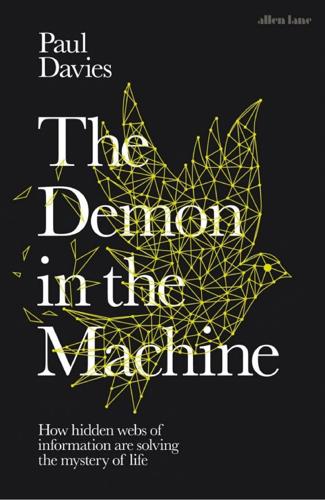
The Demon in the Machine: How Hidden Webs of Information Are Finally Solving the Mystery of Life
by
Paul Davies
Published 31 Jan 2019
As scientists unravel the circuit diagrams of cells, many practical possibilities are opening up that involve ‘rewiring’. Bio-engineers are busy designing, adapting, building and repurposing living circuitry to carry out designated biological tasks, from producing new therapeutics to novel biotech processes – even to perform arithmetic. This ‘synthetic biology’ is mostly restricted to bacteria but, recently, new technology has enabled this type of work to be extended to mammalian cells. A technique called Boolean logic and arithmetic through DNA excision, or BLADE, has been developed at Boston University and the ETH in Zurich.16 The researchers can build quite complex logic circuits to order, and foresee being able to use them to control gene expression.
…
To attain even the modest successes announced so far requires special equipment and technicians, purified and refined substances, high-fidelity control over physical conditions – and a big budget. But above all, it needs an intelligent designer (aka a clever scientist). The organic chemist must have a preconceived notion of the entity to be manufactured. I’m not denigrating the scientists involved or the glittering promise of the field of synthetic biology, only its relevance to the natural origin of life. Astrobiologists want to know how life began without fancy equipment, purification procedures, environment-stabilizing systems and – most of all – without an intelligent designer. It may turn out that life is indeed easy to make in the lab but would still be exceedingly unlikely to happen spontaneously in the grubby and uncertain conditions available to Mother Nature.
…
Cairns-Smith, Seven Clues to the Origin of Life: A Scientific Detective Story (Cambridge University Press, 1985) Matthew Cobb, Life’s Greatest Secret: The Race to Crack the Genetic Code (Basic Books, 2015) Paul Davies, The Fifth Miracle: The Search for the Origin of Life (Allen Lane, 1998) Christian de Duve, Vital Dust: The Origin and Evolution of Life on Earth (Basic Books, 1995) Freeman Dyson, Origins of Life (Cambridge University Press; 2nd edn, 1999) Pier Luigi Luisi, The Emergence of Life: From Chemical Origins to Synthetic Biology (Cambridge University Press; 2nd edn, 2016) Eric Smith and Harold Morowitz, The Origin and Nature of Life on Earth (Cambridge University Press, 2016) Woodruff T. Sullivan III and John A. Baross (eds.), Planets and Life (Cambridge University Press, 2007) Sara Walker and George Cody, ‘Re-conceptualizing the origins of life’, Philosophical Transactions of The Royal Society (theme issue), vol. 375, issue 2109 (2017) 7.
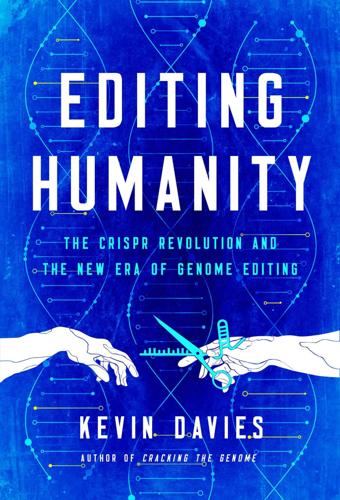
Editing Humanity: The CRISPR Revolution and the New Era of Genome Editing
by
Kevin Davies
Published 5 Oct 2020
Along with reading DNA, we are also seeing tremendous progress in synthesizing or writing DNA. Church and other scientists have digitally encoded books and films in DNA sequences18 and engineered a yeast cell by fusing the organism’s natural complement of sixteen chromosomes into a single mosaic chromosome.19 Synthetic biology has an exciting future designing DNA circuits and customizing organisms for a host of applications from bioengineered fragrances and petrochemicals to the next generation of antibiotics and antimalarial drugs. Scientists have even expanded the original four-letter genetic alphabet by synthesizing novel chemical building blocks that can substitute for the naturally occurring ones in the double helix.
…
“Church has been accused of ‘playing God,’ an accusation abetted by his beard of biblical proportions,” Colbert joked in profiling Church for Time’s 100 most influential people.4 The comedian said Church “seems less like God and more like a cross between Darwin and Santa.” Having spent three decades obsessing over the technology for reading DNA scripts, Church is increasingly fascinated by writing and editing DNA. He’s a leader in the synthetic biology movement and an organization called GP-Write (Genome Project-Write).II But it’s not just human genomes that Church is interested in customizing. Church was one of the early developers of CRISPR gene editing, briefly hosting Feng Zhang and publishing one of the first demonstrations of genome editing in human cells in January 2013.
…
“Some people will want to never allow germline genome editing because they think it’s bad for humanity,” said Robin Lovell-Badge, a vocal critic of He Jiankui’s actions. But what he says next might surprise some. “That scares me. I don’t like closing and locking doors. Take global warming—we might need to modify ourselves.”23 Gene cassettes might be normal genes or they could be custom DNA sequences. There is growing excitement around synthetic biology, in which molecular engineers design custom gene circuits that can be tested in our favorite model organisms, yeast or fruit flies or mice. Before the end of this century, we could be installing next-gen DNA circuits in the genomes of the next generation. But before we get too carried away, there’s a problem.
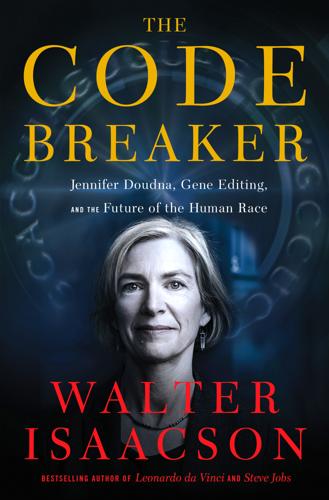
The Code Breaker: Jennifer Doudna, Gene Editing, and the Future of the Human Race
by
Walter Isaacson
Published 9 Mar 2021
He earned his bachelor’s degree in plant biology from Southern Illinois University and a doctorate in molecular biophysics at the University of Chicago, where he studied how light-activated proteins work. Instead of doing traditional postdoc studies, he wrote about using synthetic biology to help colonize Mars and found himself recruited to work for NASA. But he was not cut out for a hierarchical organization, so he quit to pursue the freedom of being a biohacker. Before getting into CRISPR, Zayner tried a variety of synthetic biology experiments, including on himself. To treat his gastrointestinal problems, he performed a fecal transplant (don’t ask) to transform his gut’s microbiome. He did the procedure in a hotel room with two filmmakers documenting the scene, and (in case you really do want to know how it works) it became a short documentary called Gut Hack that can be found online.2 Zayner now runs from his garage an online biohacking supply store, The ODIN, which creates and sells “kits and tools that allow anyone to make unique and usable organisms at home or in a lab.”
…
Many CRISPR researchers, Doudna foremost among them, would shift their focus to creating detection tools and treatments for the disease, some of them making use of the tricks they had learned from studying how bacteria developed an immune response to ward off new viruses. Josiah Zayner CHAPTER 33 Biohacking Wearing a black T-shirt and tight white jeans, Josiah Zayner stood in front of a roomful of biotechnologists at the Global Synthetic Biology Summit in San Francisco in 2017 and launched into a pitch about a do-it-yourself “frog genetic engineering kit” that he made in his garage. Available online for $299, it allowed users to cause a frog’s muscles to double in size in a month by injecting CRISPR-edited DNA that turned off the gene that produces myostatin, a protein that inhibits muscle growth once an animal has reached its mature size.
…
They were there to attend the conference, The Bio-Revolution and Its Implications for Army Combat Capabilities, sponsored by the army’s Research and Technology Program. Among the fifty or so participants were some distinguished scientists, most notably George Church, as well as one outlier: Josiah Zayner, the biohacker with multiple ear piercings who had injected himself with a CRISPR-edited gene at a San Francisco synthetic biology conference. “The building was nice, but the cafeteria was shit,” Zayner says. And the conference? “It was really boring. A bunch of people who didn’t really know what they were talking about.” At one point, he scribbled in his notes, “Speaker sounds like she has taken Xanax.” Zayner likes being irreverent, and despite what he says, I got the feeling that he actually enjoyed the conference.
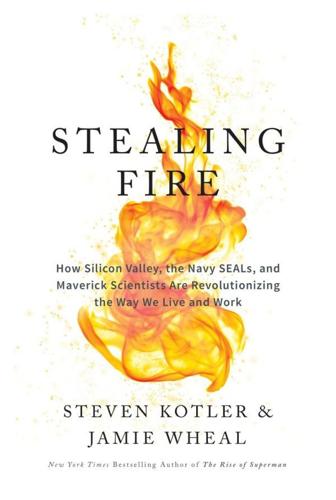
Stealing Fire: How Silicon Valley, the Navy SEALs, and Maverick Scientists Are Revolutionizing the Way We Live and Work
by
Steven Kotler
and
Jamie Wheal
Published 21 Feb 2017
So, for those interested in taking one of the formulas from Shulgin’s cookbooks and modifying it to create the next great alphabetamine? Simply hit print. And Cronin’s 3D chem printer isn’t the only development reshaping pharmacology. By treating the four letters of the genetic alphabet like the ones and zeros of computer code, synthetic biology gives us the ability to program living cells with the same ease that we program computers. And once the code looks right? Send it to a DNA synthesizer and within a few days you’ll receive a freeze-dried vial in the mail, filled with your genetic creation. Not surprisingly, synthetic biologists have already figured out how to use this process to produce psychoactive substances.
…
The Canadian company, HyaSynth Bio,33 meanwhile, is engineering a different yeast to produce THC and cannabidiol, two of the active ingredients in marijuana. “This is really just the beginning,”34 explains Autodesk distinguished researcher and synthetic biologist Andrew Hessel. “Pretty much any substance made by a plant, tree or mushroom, including all the neuroactive substances, is within reach of synthetic biology. We’re not there yet, but within a decade or so this one technology should be able to tickle all the same receptor sites in the brain that mind-altering substances impact.” Author Michael Pollan argued that the botany of desire—the idea that intoxicating plants shape us as much as we shape them—has played an unsung but important role in the evolution of culture.
…
See also specific force Spiegelhalter, David, 61 Spielberg, Steven, 103 spiritual bypassing, 216–17 spirituality Tolle’s views about, 75 See also religion Spithill, Jimmy, 219–20, 221 sports Altered States Economy and, 30 “biological passports” in, 186 and ecstatic Equation, 209–11 equipment for, 195–96 hedonic calendaring and, 214 and information technology, 186 and MaiTai Global, 171, 172 and marketing, 195–96 neurobiology and, 99, 113 psychology and, 89 and risk, 136–38 technology and, 135–39, 149 See also specific sport SSRIs. See serotonin “St. Anthony’s Fire,” 3 Stalin, Joseph, 69 Stanford University and Kesey-LSD story, 66, 188–89 perceptual vastness studies at, 144 Siegel courses at, 148 synthetic biology at, 133 Starbuck’s, 195 State Department, U.S., 183 stealing fire, Prometheus,’ 3–4, 221–22 Stealing Fire revolution, hiding of, 67–69 Stegner, Wallace, 188 STER (Selflessness, Timelessness, Efortlessness, Richness) and Burning Man, 158 and Ecstasis Equation, 211 and information technology, 186 “known issues”/downsides of, 201–9 and misuse/dangers of ecstasis, 193 and open-sourcing ecstasis, 200 sex and, 85 as signature characteristics of altered states, 36–46 and Tolle, 76 and training for nonordinary states, 201–9 See also specific characteristic Stevens, Jay, 188 Stewart, Martha, 171 Storming Heaven (Stevens), 188 Strassman, Rick, 129–30, 131 Strick, Peter, 99 Students for a Democratic Society (SDS), 192 subconscious, 16, 111, 199 “subject-object shift,” 38–39 substance abuse, 62–65 sugars, 212–14 Summit, 169–71, 172, 174, 178 “super mule” project, Sandia, 184–85 superstition, 74 surfing, 89, 171, 204, 211.

Superintelligence: Paths, Dangers, Strategies
by
Nick Bostrom
Published 3 Jun 2014
Given that non-anthropogenic existential risks (ones not arising from human activities) are small over the relevant timescales—and could be further reduced with various safe interventions—such a singleton could afford to go slow.25 It could look carefully before each step, delaying development of capabilities such as synthetic biology, human enhancement medicine, molecular nanotechnology, and machine intelligence until it had first perfected seemingly less hazardous capabilities such as its education system, its information technology, and its collective decision-making processes, and until it had used these capabilities to conduct a very thorough review of its options.
…
Furthermore, at least in scenarios where the superintelligence forms a singleton, many non-accidental anthropogenic existential risks deriving from global coordination problems would be eliminated. These include risks of wars, technology races, undesirable forms of competition and evolution, and tragedies of the commons. Since substantial peril would be associated with human beings developing synthetic biology, molecular nanotechnology, climate engineering, instruments for biomedical enhancement and neuropsychological manipulation, tools for social control that may facilitate totalitarianism or tyranny, and other technologies as-yet unimagined, eliminating these types of risk would be a great boon.
…
It could be argued that it would be better for humanity to confront some less difficult challenge first, say the development of nanotechnology, on grounds that this would force us to develop better institutions, become more internationally coordinated, and mature in our thinking about global strategy. Perhaps we would be more likely to rise to a challenge that presents a less metaphysically confusing threat than machine superintelligence. Nanotechnology (or synthetic biology, or whatever the lesser challenge we confront first) might then serve as a footstool that would help us ascend to the capability level required to deal with the higher-level challenge of superintelligence. Such an argument would have to be assessed on a case-by-case basis. For example, in the case of nanotechnology, one would have to consider various possible consequences such as the boost in hardware performance from nanofabricated computational substrates; the effects of cheap physical capital for manufacturing on economic growth; the proliferation of sophisticated surveillance technology; the possibility that a singleton might emerge though the direct or indirect effects of a nanotechnology breakthrough; and the greater feasibility of neuromorphic and whole brain emulation approaches to machine intelligence.
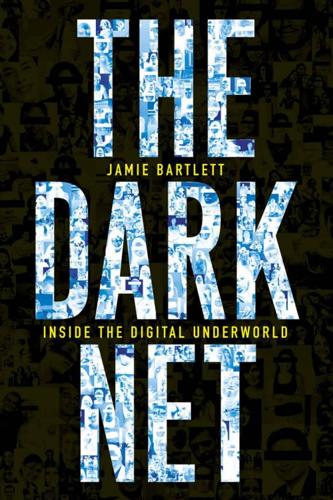
The Dark Net
by
Jamie Bartlett
Published 20 Aug 2014
But most transhumanist technology focuses on life extension, and technological upgrades to the brain and body. It’s the possibility of a tech-powered ‘great leap forward’ that excites transhumanists like Zoltan, who believes the possible benefits of near- and medium-term technology are too important to ignore. In addition to the personal goal of immortality, he believes synthetic biology could solve food shortages, genetic medicine may help cure diseases, bionic limbs already do transform the lives of disabled people. (Zoltan explains that, as a computer file, his carbon footprint would be greatly reduced.) They believe that connecting our brains to computer servers would dramatically increase human cognition and intelligence, which would help us solve the sort of problems we humans are likely to face in the future.
…
But the sort of rapid technological advances we’re living through certainly raise several difficult questions. Scientists in Sweden are already connecting robotic limbs to the human nervous system of amputees. Panasonic will be releasing an exoskeleton suit shortly. Then there is nanotechnology, synthetic biology, the Internet of Things, algorithmic-controlled financial services, general artificial intelligence. Some of the problems this raises are existential: if Zoltan became a data file, saved on multiple servers all over the world, is he even still Zoltan? Is he still a human, deserving the same rights we accord to our species?
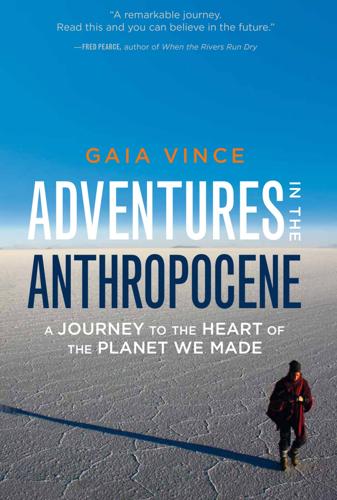
Adventures in the Anthropocene: A Journey to the Heart of the Planet We Made
by
Gaia Vince
Published 19 Oct 2014
Farmers still need access to the seeds, irrigation, fertilisers and good soil, whether they are growing GM or conventional crops. Ultimately, despite the passionate and often extremist views about whether farming should be small, GM-free and organic or industrial-scale with the efficiencies of synthetic biology tools, the truth is it will increasingly be all of these things. Farmers reap multiple benefits from planting nitrogen-fixing trees (with bacteria in their roots) and hedgerows around their fields, for example, while also planting the most effective crops for the area, climate and soil type – whether that be GM rice or conventionally bred cassava.
…
And artificial reefs can be a physical barrier against illegal trawler fishing – concrete structures are used in this way in the Mediterranean and off the Florida coast – even if they are not always successfully colonised by coral. The problem of disappearing reefs has attracted plenty of creative solutions – one idea is to erect giant canopies to shade and cool the shallow waters where reefs grow. British conceptual architect Rachel Armstrong envisages using synthetic biology to make a coral-like organism that would create an artificial reef of calcium carbonate using energy from the sun and, through this, support sinking cities like Venice. Unfortunately, whether the process is done by nature or human invention, while the oceans continue to acidify, a calcium carbonate reef is doomed to dissolve.6 And it is not just corals that are affected.
…
A Dutch team has created a self-repairing concrete, which is impregnated with bacteria that excrete limestone when exposed to water. Any cracks that appear in the concrete and allow water in will activate the bacteria, lying dormant in nutrient-rich capsules, and the limestone released fills the cracks. Other proposals include growing structural parts of buildings and street furniture around frames, using synthetic biology to prompt living cells to produce useful materials. Designers also imagine living, responsive buildings that act as an immersive interactive installation able to move and breathe alongside their occupants. Engineers will be using ideas from biology and incorporating self-repair, light and heat response, and other adaptive features into the materials and structures of future cities.

Hope Dies Last: Visionary People Across the World, Fighting to Find Us a Future
by
Alan Weisman
Published 21 Apr 2025
After four years of playing the trumpet at Hawkeye games, studying neurology and thermodynamics, and setting up WiFi internet for farmers who lived far from cable service, he earned a National Science Foundation fellowship. Within a year, he’d finished his master’s thesis on using AI to model how to preserve donated organs cryogenically. For his Ph.D., the emerging field of synthetic biology intrigued him: the premise that editing DNA code could allow microbes to be programmed like computers. He and Tamsir discovered they shared the same goal: tackle a big challenge that impacts the globe. One November day in 2011, a few months before receiving their doctorates, they crossed the street from their lab to Starbucks.
…
“Evidence That the Origin of Naked Kernels during Maize Domestication Was Caused by a Single Amino Acid Substitution in TGA1.” Genetics 200, no. 3 (July 2015): 965–974. https://doi.org/10.1534/genetics.115.175752. Wen, Amy, Keira L. Havens, Sarah E. Bloch, Neal Shah, et al. “Enabling Biological Nitrogen Fixation for Cereal Crops in Fertilized Fields.” ACS Synthetic Biology 10, no. 12 (2021): 3264–3277. https://doi.org/10.1021/acssynbio.1c00049. Wood, Jamin, and Bernardino Virdis. “Why Green Ammonia Might Not Be That Green.” Renew Economy, April 28, 2023. https://reneweconomy.com.au/why-green-ammonia-might-not-be-that-green. Xu, Yanqi. “Our Dirty Water: Nebraska’s Nitrate Problem Is Growing Worse.
…
Martin’s Island, 192 Storms of My Grandchildren (Hansen), 377–78 storm surges, 107–8, 116, 130, 131, 139, 283 Strong Angel project, 337 Suckling, Kierán, 67–68, 70 Sumerian culture, 8, 12, 14, 22–24, 320, 391–92 Summer Institute of Linguistics, 252–53 Sundarbans, 188–90, 189, 192–96, 198–201, 207 Sundlin, Daniel, 323–24, 326 superconductors, 90, 92–94, 93, 99, 101n Superstorm Sandy, 130, 281 sustainability, 57–58, 81, 150, 302–3, 313, 316, 321–22 Sustainable Prosperity, 108 Synaptics, 358 synthetic biology, 226–27 T TAE Technologies, 360 Tamsir, Alvin, 226, 229 tar sands, 167, 169, 172, 175, 377 tectonic plates, 202–3, 242–44, 243 Temme, Karsten, 226, 228, 229, 235, 238 Teshigahara, Hiroshi, 367 thermodynamics, 44, 48 Thiel, Peter, 96, 320 Thimble Islands, 277–78, 284, 299 Thomas Merton Award, 177 3D ocean farming, 328, 329 Thunberg, Greta, 356 Tiger Spots, 199, 200 Tigris River, 1, 4, 4, 6, 10–11, 14–15, 22, 26, 28, 392 timber industry, 67–68, 164 Timm, Collin, 55–56, 57 Tohono O’odham people, 73, 253 tokamak reactors, 89–94, 97, 99n, 360, 373 Tompkins County Climate Protection Initiative, 316 Topping, Debra, 170 Torres-Freyermuth, Alec, 118, 120 treaties and conventions Convention on Biological Diversity, 81 Convention on the Rights of the Child, 356 European Convention on Human Rights, 155 Montreal Protocol, 69, 80 with Ojibwe people, 163–64, 167, 168, 174, 176–78, 378–79 Ramsar Convention on Wetlands of International Importance, 125 Treaty of 1855, 164, 174 UN Framework Convention on Climate Change, 154, 220 tree-planting initiatives, 154 Treuer, Anton, 164 tritium, 89, 90, 94, 97 Trump, Donald, 77, 80, 84, 172, 180, 385 Tsangpo River/Gorge, 193 Tucson Audubon Society, 74 Turkey, 6, 22, 25–26, 27, 391 Turtle Island, 162n, 163 2030 Districts Network, 316 TwynstraGudde, 202 U United Nations and Bangladesh Delta Plan 2100, 204 Biodiversity Conference (COP15), 80–81 and Bogotá climate summit, 375 and carbon emission goals, 309 and climate activism, 385 Climate Change Conference (COP21), 151–52 Disaster Risk Summit, 137 Educational, Scientific, and Cultural Organization (UNESCO), 24, 122, 188, 254, 366 energy project panel discussions, 220 and floating cities, 321 Framework Convention on Climate Change, 154, 220 Global Compact, 273 High Commissioner for Refugees (UNHCR), 209, 211, 216, 217 and indigenous rights movement, 177 and Ithaca’s Green New Deal, 313–14, 315 and Kwajalein Atoll Sustainability Laboratory, 354 Ocean Conference, 320 and refugee crises, 338 and rural electrification projects, 215 Settlement Programme (UN-Habitat), 325 30x30 conservation goal, 388 Urban Land Institute, 302 Urban Rigger, 323 Urgenda, 151, 152–58 Uruk, 391–92 US Agency for International Development (USAID), 18–19, 338–39 US Air Force, 338 US Army, 369 US Army Corps of Engineers, 175 US Atomic Energy Commission, 334 US Bureau of Indian Affairs, 165 US Clean Water Act, 175 US Coast Guard Academy, 342, 343, 356 US Congress, 17, 50, 70, 164 US Constitution, 83 US Department of Agriculture, 72 US Department of Defense, 50, 53, 58, 69, 338, 350 US Department of Energy, 48, 92, 96, 286, 311, 335, 338 US Department of Homeland Security, 61, 78, 171 US Department of Housing and Urban Development, 132–33 US Department of State, 309, 338 US Farm Bill, 182 US Fish and Wildlife Service (USFWS), 66, 68, 73, 75, 80 US Forest Service, 67, 68, 70, 75 US Geological Survey, 346–47 US Grains Council, 236 US Military Academy (West Point), 342 US Navy, 320, 337 US Office of Naval Research (ONR), 339, 345, 353–54 US State Department, 2, 17, 377 US Supreme Court, 78, 176 V Valle de Mexicali, 244 Van den Bosch, Rem, 140–41 Van der Weegen, Eric, 139, 140–41 Venice Architecture Biennale, 367–68 venture capital, 96–97, 231, 234–35, 289–90, 294, 327 Veronica Rudge Green Award in Urban Design, 302 Vulcan, 93, 98 W Waddenzee, 266 Wadi al-Salam cemetery, 394 wakame, 276, 285, 290 Walton Family Foundation, 284 Walz, Tim, 170 Warner, Briana, 288–89 water boards (Netherlands), 131–32, 133, 138 water buffalo, 11, 15, 20, 22, 27 Water Protectors, 169–70, 175–76, 178 water resources and Bangladesh Delta Plan 2100, 207 and climate activism, 388 and floating cities, 322, 325 and industrial agriculture, 182–83 and Iraq, 6–7 and Marshall Islands, 349 and Nebraska agriculture, 238–39 Ojibwe Water Protectors, 169–70, 175–76, 178 and pipeline dangers, 166, 169, 170, 179 Watersnoodmuseum, 140, 141 West Antarctic Ice Sheet, 145 West Cell laboratory, 98–99 wetlands.
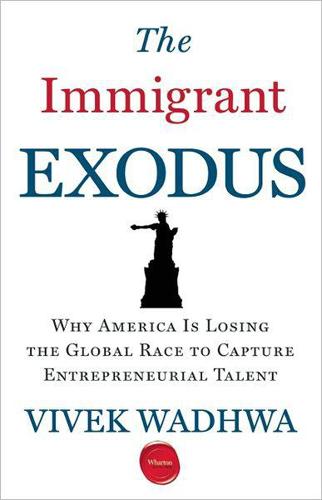
The Immigrant Exodus: Why America Is Losing the Global Race to Capture Entrepreneurial Talent
by
Vivek Wadhwa
Published 1 Oct 2012
In his roles at Duke, Stanford, and Emory Universities, Wadhwa lectures on subjects such as entrepreneurship and public policy, helps prepare students for the real world, and leads groundbreaking research projects. At Singularity University, he helps educate select groups of leaders about the exponentially growing technologies that are soon going to change our world. These advances—in fields such as robotics, artificial intelligence, computing, synthetic biology, 3-D printing, medicine, and nanomaterials—are making it possible for small teams to do what was once possible for only governments and large corporations to do: solve the grand challenges in education, water, food, shelter, health, and security. Wadhwa is an adviser to several governments; mentors entrepreneurs; and is a regular columnist for the Washington Post, Bloomberg BusinessWeek, Forbes.com, and the American Society of Engineering Education’s Prism magazine.
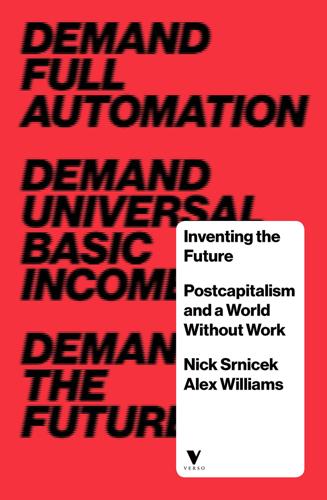
Inventing the Future: Postcapitalism and a World Without Work
by
Nick Srnicek
and
Alex Williams
Published 1 Oct 2015
The full development of synthetic freedom therefore requires a reconfiguration of the material world in accordance with the drive to expand our capacities for action. It demands experimentation with collective and technological augmentation, and a spirit that refuses to accept any barrier as natural and inevitable.67 Cyborg augmentations, artificial life, synthetic biology and technologically mediated reproduction are all examples of this elaboration.68 The overall aim must therefore be picked out as an unrelenting project to unbind the necessities of this world and transform them into materials for the further construction of freedom.69 Such an image of emancipation can never be satisfied with or condensed into a static society, but will instead continually strain beyond any limitations.
…
Under democratic control, it could respond to the biggest social problems of the day and foster large-scale thinking by, for instance, using state investment banks to shape the social value of projects through funding decisions.87 A forward-thinking government could support mission-oriented projects such as decarbonising the economy, fully automating work, expanding cheap renewable energy,88 exploring synthetic biology, developing cheap medicine, supporting space exploration and building artificial intelligence. The challenge is to develop institutional mechanisms that will enable popular control over the direction of technological creation. Public control over how government funds are spent for development was also at the heart of a series of worker-based struggles in the 1970s.
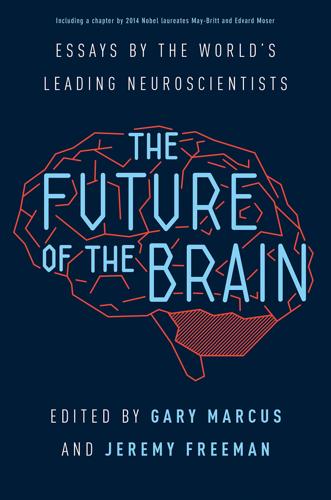
The Future of the Brain: Essays by the World's Leading Neuroscientists
by
Gary Marcus
and
Jeremy Freeman
Published 1 Nov 2014
Technical barriers have limited the ability to (1) fabricate neuron-resolution sensors capable of stably recording large assemblies of cells over long times, (2) build processors capable of processing staggeringly large amounts of information, and (3) use or create the right analytical tools able to extract meaning and mechanism from the activity of very large collections of neurons. However, advances in neurotechnology, stemming from progress in the physical sciences, engineering, and synthetic biology as well as advances in statistics, mathematics, and computer science, should finally enable an all-out attack on these problems. Capitalizing on nano- and microfabrication techniques, cheaper, smaller, and faster electronics, and huge increases in computing processor and data storage combined with analytical tools to model and simulate patterns from immense numbers of neurons, could finally create the toolbox necessary to understand the mesoscale dynamics in networks of networks in order to link cells, circuits, and behavior.
…
Thanks to advances in wireless transmission, impressively large amounts of data can be broadcast out of the body from these implanted devices using radio or light. None of these recent technological advances have succeeded yet in producing dependable electrical recordings for thousands of neurons, but this work is underway and feasible to achieve. Advances in synthetic biology, electronics, and nanofabrication are sparking all types of creative solutions. One far-reaching concept for even broader—and perhaps less intrusive—recording is to make complete packages of electrodes—with integrated electronics and transmission—as small as large specks of dust, so that even thousands might be placed in the brain (see also chapters by Maharbiz and Church for other approaches).

Future Files: A Brief History of the Next 50 Years
by
Richard Watson
Published 1 Jan 2008
Smarter but boring Future technologies will include airborne networks that allow airliners to fly without pilots (inconceivable now but acceptable in 50 years); silicon photonics (using silicon chips to emit light to speed up data processing); quantum wires (using carbon nanotube wires to carry electricity); biomechatronics (mixing robotics with nervous systems to create new artificial limbs, as has already happened with monkeys controlling robotic arms by thought in the US); bacterial factories; metabolomics (a new medical-diagnosis tool using metabolic information); synthetic biology (the merger of biology and engineering); and nanoelectronics (for example using nanostructures to store more and more data in smaller and smaller areas). We’ll also have wireless battery recharging, new quiet materials (the future is a loud place), electronic camouflage, disposable computers, smart mirrors (that show us what we might look like next year), 3D printers, customized materials (the structure and properties of which can be designed millimeter by millimeter), organic computers, space-ladders, holographic displays and storage, home-use DNA stamps (to identify what’s really ours), wearable computers in all shapes and forms, voice-based internet search (“Show me film clips of car chases”), personalization ports in all devices (so we can change them to suit our particular needs), a fully sensory internet (all five senses delivered over the web) and a high level of machine-to-machine communication.
…
A 311 Index ‘O’ Garage 170 3D printers 56 accelerated education 57 accidents 159, 161–6, 173, 246 ACNielsen 126 adaptive cruise control 165 Adeg Aktiv 50+ 208 advertising 115–16, 117, 119 Africa 70, 89, 129, 174, 221, 245, 270, 275, 290, 301 ageing 1, 10, 54, 69, 93, 139, 147–8, 164, 188, 202, 208, 221, 228–9, 237, 239, 251, 261, 292, 295, 297–8 airborne networks 56 airlines 272 allergies 196–7, 234, 236 Alliance Against Urban 4x4s 171 alternative energy 173 alternative futures viii alternative medicine 244–5 alternative technology 151 amateur production 111–12 Amazon 32, 113–14, 121 American Apparel 207 American Express 127–8 androids 55 Angola 77 anti-ageing drugs 231, 237 anti-ageing foods 188 anti-ageing surgery 2, 237 antibiotics 251 anxiety 10, 16, 30, 32, 36, 37, 128, 149, 179, 184, 197, 199, 225, 228, 243, 251, 252, 256, 263, 283–4, 295–6, 300, 301, 305 Apple 61, 115, 121, 130, 137–8, 157 Appleyard, Bryan 79 Argentina 210 Armamark Corporation 193 artificial intelliegence 22, 40, 44, 82 131, 275, 285–6, 297, 300 Asda 136, 137 Asia 11, 70, 78, 89, 129, 150, 174, 221, 280, 290, 292 Asimov, Isaac 44 Asos.com 216 asthma 235 auditory display software 29 Australia 20–21, 72–3, 76, 92, 121, 145, 196, 242, 246, 250, 270, 282 Austria 208 authenticity 32, 37, 179, 194, 203–11 authoritarianism 94 automated publishing machine (APM) 114 automation 292 automotive industry 154–77 B&Q 279 baby boomers 41, 208 bacterial factories 56 Bahney, Anna 145 Bahrain 2 baking 27, 179, 195, 199 Bangladesh 2 bank accounts, body double 132 banknotes 29, 128 banks 22, 123, 135–8, 150, 151 virtual 134 Barnes and Noble 114 bartering 151 BBC 25, 119 Become 207 Belgium 238 313 314 benriya 28 Berlusconi, Silvio 92 Best Buy 223 biofuel 64 biomechatronics 56 biometric identification 28, 35, 52, 68, 88, 132 bionic body parts 55 Biosphere Expeditions 259 biotechnology 40, 300 blended families 20 blogs 103, 107, 109, 120 Blurb 113 BMW 289 board games 225 body double bank accounts 132 body parts bionic 55 replacement 2, 188, 228 Bolivia 73 Bollywood 111 books 29, 105, 111–25 boomerang kids 145 brain transplants 231 brain-enhancing foods 188 Brazil 2, 84, 89, 173, 247, 254, 270, 290 Burger King 184 business 13, 275–92 Bust-Up 189 busyness 27, 195, 277 Calvin, Bill 45 Canada 63, 78, 240 cancer 251 car sharing 160, 169, 176 carbon credits 173 carbon footprints 255 carbon taxes 76, 172 cars classic 168–9 driverless 154–5 flying 156, 165 hydrogen-powered 12, 31, 157, 173 pay-as-you-go 167–8 self-driving 165 cascading failure 28 cash 126–7, 205 cellphone payments 129, 213 cellphones 3, 25, 35, 51, 53, 120, 121, FUTURE FILES 129, 156, 161, 251 chicken, Christian 192 childcare robots 57 childhood 27, 33–4, 82–3 children’s database 86 CHIME nations (China, India, Middle East) 2, 10, 81 China 2, 10, 11, 69–72, 75–81, 88, 92–3, 125, 137, 139–40, 142, 151, 163, 174–5, 176, 200, 222, 228, 247, 260, 270–71, 275, 279, 295, 302 choice 186–7 Christian chicken 192 Christianity, muscular 16, 73 Chrysler 176 cinema 110–11, 120 Citibank 29, 128 citizen journalism 103–4, 108 City Car Club 168 Clarke, Arthur C. 58–9 Clarke’s 187 classic cars 168–9 climate change 4, 11, 37, 43, 59, 64, 68, 74, 77–9, 93, 150, 155, 254, 257, 264, 298–9 climate-controlled buildings 254, 264 cloning 38 human 23, 249 CNN 119 coal 176 Coca-Cola 78, 222–3 co-creation 111–12, 119 coins 29, 128, 129 collective intelligence 45–6 Collins, Jim 288 comfort eating 200 Comme des Garçons 216 community 36 compassion 120 competition in financial services 124–5 low-cost 292 computers disposable 56 intelligent 23, 43 organic 56 wearable 56, 302 computing 3, 33, 43, 48, 82 connectivity 3, 10, 11, 15, 91, 120, Index 233, 261, 275–6, 281, 292, 297, 299 conscientious objection taxation 86 contactless payments 123, 150 continuous partial attention 53 control 36, 151, 225 convenience 123, 178–9, 184, 189, 212, 223, 224 Coren, Stanley 246 corporate social responsibility 276, 282, 298 cosmetic neurology 250 Costa Rica 247 Craig’s List 102 creativity 11, 286; see also innovation credit cards 141–3, 150 crime 86–9 forecasting 86–7 gene 57, 86 Croatia 200 Crowdstorm 207 Cuba 75 cultural holidays 259, 273 culture 11, 17–37 currency, global 127, 151 customization 56, 169, 221–2, 260 cyberterrorism 65, 88–9 Cyc 45 cynicism 37 DayJet 262 death 237–9 debt 123–4, 140–44, 150 defense 63, 86 deflation 139 democracy 94 democratization of media 104, 108, 113 demographics 1, 10, 21, 69, 82, 93, 202, 276, 279–81, 292, 297–8 Denmark 245 department stores 214 deregulation 11, 3 Destiny Health 149 detox 200 Detroit Project 171 diagnosis 232 remote 228 digital downloads 121 evaporation 25 315 immortality 24–5 instant gratification syndrome 202 Maoism 47 money 12, 29, 123, 126–7, 129, 132, 138, 150, 191 nomads 20, 283 plasters 241 privacy 25, 97, 108 readers 121 digitalization 37, 292 Dinner by Design 185 dirt holidays 236 discount retailers 224 Discovery Health 149 diseases 2, 228 disintegrators 57 Disney 118–19 disposable computers 56 divorce 33, 85 DNA 56–7, 182 database 86 testing, compulsory 86 do-it-yourself dinner shops 185–6 dolls 24 doorbells 32 downshifters 20 Dream Dinners 185 dream fulfillment 148 dressmaking 225 drink 178–200 driverless cars 154–5 drugs anti-ageing 231, 237 performance-improving 284–5 Dubai 264, 267, 273 dynamic pricing 260 E Ink 115 e-action 65 Earthwatch 259 Eastern Europe 290 eBay 207 e-books 29, 37, 60, 114, 115, 302 eco-luxe resorts 272 economic collapse 2, 4, 36, 72, 221, 295 economic protectionism 10, 15, 72, 298 economy travel 272 316 Ecuador 73 education 15, 18, 82–5, 297 accelerated 57 lifelong learning 290 Egypt 2 electricity shortages 301 electronic camouflage 56 electronic surveillance 35 Elephant 244 email 18–19, 25, 53–4, 108 embedded intelligence 53, 154 EMF radiation 251 emotional capacity of robots 40, 60 enclosed resorts 273 energy 72, 75, 93 alternative 173 nuclear 74 solar 74 wind 74 enhancement surgery 249 entertainment 34, 121 environment 4, 10, 11, 14, 64, 75–6, 83, 93, 155, 171, 173, 183, 199, 219–20, 252, 256–7, 271, 292, 301 epigenetics 57 escapism 16, 32–3, 121 Estonia 85, 89 e-tagging 129–30 e-therapy 242 ethical bankruptcy 35 ethical investing 281 ethical tourism 259 ethics 22, 24, 41, 53, 78, 86, 132, 152, 194, 203, 213, 232, 238, 249–50, 258, 276, 281–2, 298–9 eugenics 252 Europe 11, 70, 72, 81, 91, 141, 150, 174–5, 182, 190, 192, 209 European Union 15, 139 euthanasia 238, 251 Everquest 33 e-voting 65 experience 224 extended financial families 144 extinction timeline 9 Facebook 37, 97, 107 face-recognition doors 57 fakes 32 family 36, 37 FUTURE FILES family loans 145 fantasy-related industries 32 farmaceuticals 179, 182 fast food 178, 183–4 fat taxes 190 fear 10, 34, 36, 38, 68, 150, 151, 305 female-only spaces 210–11, 257 feminization 84 financial crisis 38, 150–51, 223, 226, 301 financial services 123–53, 252 trends 123–5 fish farming 181 fixed-price eating 200 flashpacking 273 flat-tax system 85–6 Florida, Richard 36, 286, 292 flying cars 165 food 69–70, 72, 78–9, 162, 178–201 food anti-ageing 188 brain-enhancing 188 fast 178, 183–4 functional 179 growing your own 179, 192, 195 history 190–92 passports 200 slow 178, 193 tourism 273 trends 178–80 FoodExpert ID 182 food-miles 178, 193, 220 Ford 169, 176, 213, 279–80 forecasting 49 crime 86–7 war 49 Forrester Research 132 fractional ownership 168, 175, 176, 225 France 103, 147, 170, 189, 198, 267 Friedman, Thomas 278–9, 292 FriendFinder 32 Friends Reunited 22 frugality 224 functional food 179 Furedi, Frank 68 gaming 32–3, 70, 97, 111–12, 117, 130, 166, 262 Gap 217 Index gardening 27, 148 gas 176 GE Money 138, 145 gendered medicine 244–5 gene silencing 231 gene, crime 86 General Motors 157, 165 Generation X 41, 281 Generation Y 37, 41, 97, 106, 138, 141–2, 144, 202, 208, 276, 281, 292 generational power shifts 292 Genes Reunited 35 genetic enhancement 40, 48 history 35 modification 31, 182 testing 221 genetics 3, 10, 45, 251–2 genomic medicine 231 Germany 73, 147, 160, 170, 204–5, 216–17, 261, 267, 279, 291 Gimzewski, James 232 glamping 273 global currency 127 global warming 4, 47, 77, 93, 193, 234 globalization 3, 10, 15–16, 36–7, 63–7, 72–3, 75, 81–2, 88, 100, 125, 139, 143, 146, 170, 183, 189, 193–5, 221, 224, 226, 233–4, 247–8, 263, 275, 278–80, 292, 296, 299 GM 176 Google 22, 61, 121, 137, 293 gout 235 government 14, 18, 36, 63–95, 151 GPS 3, 15, 26, 50, 88, 138, 148, 209, 237, 262, 283 Grameen Bank 135 gravity tubes 57 green taxes 76 Greenpeace 172 GRIN technologies (genetics, robotics, internet, nanotechnology) 3, 10, 11 growing your own food 178, 192, 195 Gucci 221 Gulf States 125, 260, 268 H&M 217 habitual shopping 212 Handy, Charles 278 317 Happily 210 happiness 63–4, 71–2, 146, 260 health 15, 82, 178–9, 199 health monitoring 232, 236, 241 healthcare 2, 136, 144, 147–8, 154, 178–9, 183–4, 189–91, 228–53, 298; see also medicine trends 214–1534–7 Heinberg, Richard 74 Helm, Dieter 77 Heritage Foods 195 hikikomori 18 hive mind 45 holidays 31, 119; see also tourism holidays at home 255 cultural 259 dirt 236 Hollywood 33, 111–12 holographic displays 56 Home Equity Share 145 home baking 225 home-based microgeneration 64 home brewing 225 honesty 152 Hong Kong 267 hospitals 228, 241–3, 266 at home 228, 238, 240–42 hotels 19, 267 sleep 266 human cloning 23, 249 Hungary 247 hybrid humans 22 hydrogen power 64 hydrogen-powered cars 12, 31, 157, 173 Hyperactive Technologies 184 Hyundai 170 IBM 293 identities, multiple 35, 52 identity 64, 71 identity theft 88, 132 identity verification, two-way 132 immigration 151–2, 302 India 2, 10, 11, 70–72, 76, 78–9, 81, 92, 111, 125, 135, 139, 163, 174–5, 176, 247, 249–50, 254, 260, 270, 275, 279, 302 indirect taxation 86 318 individualism 36 Indonesia 2, 174 industrial robots 42 infinite content 96–7 inflation 151 information overlead 97, 120, 159, 285; see also too much information innovation 64, 81–2, 100, 175, 222, 238, 269, 277, 286–8, 291, 297, 299 innovation timeline 8 instant gratification 213 insurance 123, 138, 147–50, 154, 167, 191, 236, 250 pay-as-you-go 167 weather 264 intelligence 11 embedded 53, 154 implants 229 intelligent computers 23, 43 intelligent night vision 162–3 interaction, physical 22, 25, 97, 110, 118, 133–4, 215, 228, 243, 276, 304 interactive media 97, 105 intergenerational mortgages 140, 144–5 intermediaries 123, 135 internet 3, 10, 11, 17–18, 25, 68, 103, 108, 115–17, 124, 156, 240–41, 261, 270, 283, 289, 305 failure 301 impact on politics 93–4 sensory 56 interruption science 53 iPills 240 Iran 2, 69 Ishiguro, Hiroshi 55 Islamic fanaticism 16 Italy 92, 170, 198–9 iTunes 115, 130; see also Apple Japan 1, 18, 26, 28–9, 54–5, 63, 80–81, 114, 121, 128–9, 132, 140, 144–5, 147, 174, 186, 189, 192, 196, 198, 200, 209–10, 223, 240, 260, 264, 271, 279, 291 jetpacks 60 job security 292 journalism 96, 118 journalism, citizen 103–4, 107 joy-makers 57 FUTURE FILES Kaboodle 207 Kapor, Mitchell 45 Kenya 128 keys 28–9 Kindle 60, 121 Kramer, Peter 284 Kuhn, Thomas 281 Kurzweil, Ray 45 Kuwait 2 labor migration 290–91 labor shortages 3, 80–81, 289–90 Lanier, Jaron 47 laser shopping 212 leisure sickness 238 Let’s Dish 185 Lexus 157 libraries 121 Libya 73 life-caching 24, 107–8 lighting 158, 160 Like.com 216 limb farms 249 limited editions 216–17 live events 98, 110, 304 localization 10, 15–16, 116, 128, 170, 178, 189, 193, 195, 215, 220, 222–3, 224, 226, 255, 270, 297 location tagging 88 location-based marketing 116 longevity 188–9, 202 Longman, Philip 71 low cost 202, 219–22 luxury 202, 221, 225, 256, 260, 262, 265–6, 272 machinamas 112 machine-to-machine communication 56 marketing 115–16 location-based 116 now 116 prediction 116 Marks & Spencer 210 Maslow, Abraham 305–6 masstigue 223 materialism 37 Mayo Clinic 243 McDonald’s 130, 168, 180, 184 McKinsey 287 Index meaning, search for 16, 259, 282, 290, 305–6 MECU 132 media 96–122 democratization of 104, 108, 115 trends 96–8 medical outsourcing 247–8 medical tourism 2, 229, 247 medicine 188, 228–53; see also healthcare alternative 243–4 gendered 244–5 genomic 231 memory 229, 232, 239–40 memory loss 47 memory pills 231, 240 memory recovery 2, 228–9, 239 memory removal 29–30, 29, 240 Menicon 240 mental health 199 Meow Mix 216 Merriman, Jon 126 metabolomics 56 meta-materials 56 Metro 204–5 Mexico 2 micromedia 101 micro-payments 130, 150 Microsoft 137, 147, 293 Middle East 10, 11, 70, 81, 89, 119, 125, 129, 139, 174–5, 268, 301 migration 3, 11, 69–70, 78, 82, 234, 275, 290–91 boomerang 20 labor 290–91 Migros 215 military recruitment 69 military vehicles 158–9 mind-control toys 38 mindwipes 57 Mitsubishi 198, 279 mobile payments 123, 150 Modafinil 232 molecular biology 231 monetization 118 money 123–52 digital 12, 29, 123, 126–7, 129, 132, 138, 150, 191 monitoring, remote 154, 168, 228, 242 monolines 135, 137 319 mood sensitivity 41, 49, 154, 158, 164, 187–8 Morgan Stanley 127 mortality bonds 148 Mozilla Corp. 289 M-PESA 129 MTV 103 multigenerational families 20 multiple identities 35, 52 Murdoch, Rupert 109 muscular Christianity 16, 73 music industry 121 My-Food-Phone 242 MySpace 22, 25, 37, 46, 97, 107, 113 N11 nations (Bangladesh, Egypt, Indonesia, Iran, South Korea, Mexico, Nigeria, Pakistan, Philippines, Turkey, Vietnam) 2 nanoelectronics 56 nanomedicine 32 nanotechnology 3, 10, 23, 40, 44–5, 50, 157, 183, 232, 243, 286, 298 napcaps 56 narrowcasting 109 NASA 25, 53 nationalism 16, 70, 72–3, 139, 183, 298, 302 natural disasters 301 natural resources 2, 4, 11, 64, 298–9 Nearbynow 223 Nestlé 195 Netherlands 238 NetIntelligence 283 networkcar.com 154 networks 28, 166, 288 airborne 56 neural nets 49 neuronic whips 57 neuroscience 33, 48 Neville, Richard 58–9 New Economics Foundation 171 New Zealand 265, 269 newspapers 29, 102–9, 117, 119, 120 Nigeria 2, 73 Nike 23 nimbyism 63 no-frills 224 Nokia 61, 105 Norelift 189 320 Northern Rock 139–40 Norwich Union 167 nostalgia 16, 31–2, 51, 169–70, 179, 183, 199, 203, 225, 303 now marketing 116 nuclear annihilation 10, 91 nuclear energy 74 nutraceuticals 179, 182 Obama, Barack 92–3 obesity 75, 190–92, 199, 250–51 oceanic thermal converters 57 oil 69, 72–3, 93, 151, 174, 176, 272, 273, 301 Oman 2, 270 online relationships 38 organic computers 56 organic food 200, 226 osteoporosis 235 outsourcing 224, 292 Pakistan 2 pandemics 4, 10, 16, 59, 72, 128, 232, 234, 272, 295–7, 301 paper 37 parasite singles 145 passwords 52 pictorial 52 pathogens 233 patient simulators 247 patina 31 patriotism 63, 67, 299 pay-as-you-go cars 167–8 pay-as-you-go insurance 167 payments cellphone 129, 213 contactless 123, 150 micro- 130, 150 mobile 123, 150 pre- 123, 150 PayPal 124, 137 Pearson, Ian 44 performance-improving drugs 284–5 personal restraint 36 personal robots 42 personalization 19, 26, 56, 96–8, 100, 102–3, 106, 108–9, 120, 138, 149, 183, 205–6, 223, 244–5, 262, 267, 269 Peru 73 FUTURE FILES Peters, Tom 280 Pharmaca 244 pharmaceuticals 2, 33, 228, 237 Philippines 2, 212, 290 Philips 114 Philips, Michael 232–3 photographs 108 physical interaction 22, 25, 97, 110, 118, 133–4, 215, 228, 243, 276, 304 physicalization 96–7, 101–2, 106, 110, 120 pictorial passwords 52 piggy banks 151 Pink, Daniel 285 plagiarism 83 polarization 15–16, 285 politics 37, 63–95, 151–2 regional 63 trends 63–5 pop-up retail 216, 224 pornography 31 portability 178, 183–4 power shift eastwards 2, 10–11, 81, 252 Prada 205–6, 216 precision agriculture 181–2 precision healthcare 234–7 prediction marketing 116 predictions 37, 301–2 premiumization 223 pre-payments 123, 150 privacy 3, 15, 41, 50, 88, 154, 165–7, 205, 236, 249, 285, 295 digital 25, 97, 108 Procter & Gamble 105, 280 product sourcing 224 Prosper 124, 135 protectionism 67, 139, 156, 220, 226, 301 economic 10, 15, 72, 299 provenance 178, 193, 226 proximity indicators 32 PruHealth 149 psychological neoteny 52 public ownership 92 public transport 171 purposeful shopping 212 Qatar 2 quality 96–7, 98, 101, 109 Index quantum mechanics 56 quantum wires 56 quiet materials 56 radiation, EMF 251 radio 117 randominoes 57 ranking 34, 83, 109, 116, 134, 207 Ranking Ranqueen 186 reality mining 51 Really Cool Foods 185 rebalancing 37 recession 139–40, 202, 222 recognition 36, 304 refrigerators 197–8 refuge 121 regeneration 233 regional food 200 regional politics 63 regionality 178, 192–3 regulation 124, 137, 143 REI 207 Reid, Morris 90 relationships, online 38 religion 16, 58 remote diagnosis 228 remote monitoring 154, 168, 228, 242 renting 225 reputation 34–5 resistance to technology 51 resorts, enclosed 273 resource shortages 11, 15, 146, 155, 178, 194, 254, 300 resources, natural 2, 4, 11, 64, 73–4, 143, 298–9 respect 36, 304 restaurants 186–8 retail 20–21, 202–27, 298 pop-up 216, 224 stealth 215 theater 214 trends 202–3 Revkin, Andy 77 RFID 3, 24, 50, 121, 126, 149, 182, 185, 192, 196, 205 rickets 232 risk 15, 124, 134, 138, 141, 149–50, 162, 167, 172, 191, 265, 299–300, 303 Ritalin 232 321 road pricing 166 Robertson, Peter 49 robogoats 55 robot department store 209 Robot Rules 44 robotic assistants 54, 206 concierges 268 financial advisers 131–2 lobsters 55 pest control 57 soldiers 41, 55, 60 surgery 35, 41, 249 robotics 3, 10, 41, 44–5, 60, 238, 275, 285–6, 292, 297 robots 41, 54–5, 131, 237, 249 childcare 57 emotional capacity of 40, 60 industrial 42 personal 42 security 209 therapeutic 41, 54 Russia 2, 69, 72, 75, 80, 89, 92–3, 125, 174, 232, 254, 270, 295, 302 safety 32, 36, 151, 158–9, 172–3, 182, 192, 196 Sainsbury’s 215 Salt 187 sanctuary tourism 273 satellite tracking 166–7 Saudi Arabia 2, 69 Schwartz, Barry 186 science 13, 16, 40–62, 300 interruption 53 trends 40–42 scramble suits 57 scrapbooking 25, 108, 225 Sears Roebuck 137 seasonality 178, 193–4 second-hand goods 224 Second Life 133, 207–8 securitization 124, 140 security 16, 31, 151 security robots 209 self-driving cars 165 self-medication 242 self-publishing 103, 113–14 self-reliance 35, 75 self-repairing roads 57 322 self-replicating machines 23, 44 Selfridges 214 sensor motes 15, 50, 196 sensory internet 56 Sharia-based investment 125 Shop24 209 shopping 202–27 habitual 212 laser 212 malls 211–5 purposeful 212 slow 213 social 207 Shopping 2.0 224 short-wave scalpels 57 silicon photonics 56 simplicity 169–70, 179, 186, 202, 218, 224, 226, 272 Singapore 241 single-person households 19–20, 202–3, 208–9, 221, 244, 298, 304 skills shortage 293, 302 sky shields 57 sleep 159–60, 188, 228, 231, 246–7, 265 sleep debt 96, 266 sleep hotels 266 sleep surrogates 57 slow food 178, 193 slow shopping 213 slow travel 273 smart devices 26–7, 28, 32, 35, 44, 50, 56, 57, 164, 206, 207 smart dust 3, 15, 50, 196 smartisans 20 Smartmart 209 snakebots 55 social networks 97, 107, 110, 120, 133, 217, 261 social shopping 207 society 13, 15–16, 17–37 trends 15–16 Sodexho 193 solar energy 74 Sony 114, 121 South Africa 84, 149, 242 South America 82, 270 South Korea 2, 103, 128–9 space ladders 56 space mirrors 47 space tourism 271, 273 FUTURE FILES space tugs 57 speed 164, 202, 209, 245, 296–7 spirituality 16, 22, 282, 298, 306 spot knowledge 47 spray-on surgical gloves 57 St James’s Ethics Centre 282 stagflation 139 starch-based plastics 64 stealth retail 215 stealth taxation 86 Sterling, Bruce 55 storytelling 203 Strayer, David 161 street signs 162–3 stress 32, 96, 235, 243, 245–6, 258–9, 265, 257–9, 275, 277, 283–5 stress-control clothing 57 stupidity 151, 302 Stylehive 207 Sudan 73 suicide tourism 236 Super Suppers 185 supermarkets 135–6, 184–6, 188, 191–2, 194, 202–3, 212, 215, 218–19, 224, 229 surgery 2, 31 anti-ageing 2, 237 enhancement 249 Surowiecki, James 45 surveillance 35, 41 sustainability 4, 37, 74, 181, 193–5, 203, 281, 288, 298–9 Sweden 84 swine flu 38, 251, 272 Switzerland 168, 210, 215 synthetic biology 56 Taco Bell 184 Tactical Numerical Deterministic Model 49 tagging, location 86, 88 Taiwan 81 talent, war for 275, 279, 293; see also labor shortages Target 216 Tasmania 267 Tata Motors 174, 176 taxation 85–6, 92, 93 carbon 76, 172 conscientious objection 86 Index fat 190 flat 85–6 green 76 indirect 86 stealth 86 Tchibo 217 technology 3, 14–16, 18, 22, 26, 28, 32, 37, 40–62, 74–5, 82–3, 96, 119, 132, 147–8, 154, 157, 160, 162, 165–7, 178, 182, 195–8, 208, 221, 229, 237, 242–3, 249, 256, 261, 265–6, 268, 275–6, 280, 283–4, 292, 296–7, 300 refuseniks 30, 51, 97 trends 40–42 telemedicine 228, 238, 242 telepathy 29 teleportation 56 television 21, 96, 108, 117, 119 terrorism 67, 91, 108, 150, 262–3, 267, 272, 295–6, 301 Tesco 105, 135–6, 185, 206, 215, 219, 223 Thailand 247, 290 therapeutic robots 41, 54 thermal imaging 232 things that won’t change 10, 303–6 third spaces 224 ThisNext 207 thrift 224 Tik Tok Easy Shop 209 time scarcity 30, 96, 102, 178, 184–6, 218, 255 time shifting 96, 110, 116 time stamps 50 timeline, extinction 9 timeline, innovation 8 timelines 7 tired all the time 246 tobacco industry 251 tolerance 120 too much choice (TMC) 29, 202, 218–19 too much information (TMI) 29, 51, 53, 202, 229; see also information overload tourism 254–74 cultural 273 ethical 259 food 273 323 local 273 medical 2, 229, 247 sanctuary 273 space 271, 273 suicide 238 tribal 262 Tourism Concern 259 tourist quotas 254, 271 Toyota 48–9, 157 toys, mind-control 38 traceability 195 trading down 224 transparency 3, 15, 143, 152, 276, 282, 299 transport 15, 154–77, 298 public 155, 161 trends 154–6 transumerism 223 travel 2, 3, 11, 148, 254–74 economy 272 luxury 272 slow 273 trends 254–6 trend maps 6–7 trends 1, 5–7, 10, 13 financial services 123–5 food 178–80 healthcare 228–9 media 96–8 politics 63–5 retail 202–3 science and technology 40–42 society 15–16 transport 154–6 travel 254–6 work 275–7 tribal tourism 262 tribalism 15–16, 63, 127–8, 183, 192, 220, 260 trust 82, 133, 137, 139, 143, 192, 203, 276, 282–3 tunnels 171 Turing test 45 Turing, Alan 44 Turkey 2, 200, 247 Twitter 60, 120 two-way identity verification 132 UAE 2 UFOs 58 324 UK 19–20, 72, 76, 84, 86, 90–91, 100, 102–3, 105, 128–9, 132, 137, 139–42, 147–9, 150, 163, 167–8, 170–71, 175, 185, 195–6, 199, 200, 206, 210, 214–16, 238, 259, 267–8, 278–9, 284, 288 uncertainty 16, 30, 34, 52, 172, 199, 246, 263, 300, 303 unemployment 151 Unilever 195 University of Chicago 245–6 urban rental companies 176 urbanization 11, 18–19, 78, 84, 155, 233 Uruguay 200 US 1, 11, 19–21, 23, 55–6, 63, 67, 69, 72, 75, 77, 80–83, 86, 88–90, 92, 104–5, 106, 121, 129–33, 135, 139–42, 144, 147, 149, 150, 151, 162, 167, 169–71, 174, 185, 190–3, 195, 205–6, 209, 211, 213, 216, 218, 220, 222–3, 237–8, 240–8, 250, 260, 262, 267–8, 275, 279–80, 282–4, 287, 291 user-generated content (UGC) 46, 97, 104, 289 utility 224 values 36, 152 vending machines 209 Venezuela 69, 73 verbal signatures 132 VeriChip 126 video on demand 96 Vietnam 2, 290 Vino 100 113 Virgin Atlantic 261 virtual adultery 33 banks 134 economy 130–31 protests 65 reality 70 sex 32 stores 206–8 vacations 32, 261 worlds 157, 213, 255, 261, 270, 305 Vocation Vacations 259–60 Vodafone 137 voice recognition 41 voice-based internet search 56 voicelifts 2, 237 FUTURE FILES Volkswagen 175 voluntourism 259 Volvo 164 voting 3, 68, 90–91 Walgreens 244 Wal-Mart 105, 136–7, 215, 219–20, 223, 244, 282 war 68–9, 72 war for talent 275, 279; see also labor shortages war forecasting 49 water 69–70, 74, 77–9, 199 wearable computers 55 weather 64 weather insurance 264 Web 2.0 93, 224 Weinberg, Peter 125 wellbeing 2, 183, 188, 199 white flight 20 Wikipedia 46, 60, 104 wild swimming 273 Wilson, Edward O. 74 wind energy 74 wine producers 200 wisdom of idiots 47 Wizard 145 work 275–94 trends 275–94 work/life balance 64, 71, 260, 277, 289, 293 worldphone 19 xenophobia 16, 63 YouTube 46, 103, 107, 112 Zara 216–17 Zipcar 167 Zopa 124, 134
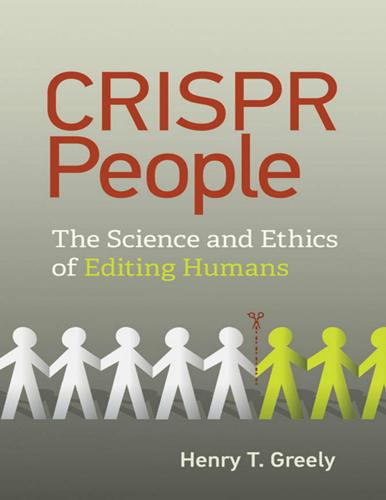
CRISPR People: The Science and Ethics of Editing Humans
by
Henry T. Greely
Published 22 Jan 2021
He also has a role in the CRISPR story as one of the first researchers (perhaps the first) to show that CRISPR could be used to edit human cells. George is a visionary thinker who genuinely wants to help humanity. He also is unafraid to say controversial or very futuristic things, in interviews and in his book, Regenesis: How Synthetic Biology Will Reinvent Nature and Ourselves, coauthored with Ed Regis.8 His efforts toward reviving the woolly mammoth as well as his speculations in Der Spiegel, a leading German magazine, about how one could “revive” Neanderthals9 are examples of his willingness to be controversial, as is his discussion of making vast changes in the human genome, eliminating the redundancy in the human genetic code, in order to reduce vulnerability to viruses.10 It may actually be relevant that he is six foot, five inches tall and imposing for his height, with white hair, a white mustache, and a very full white beard.
…
Jon Cohen, “‘I Feel an Obligation to be Balanced:’ Noted Biologist Comes to Defense of Gene Editing Babies,” Science, November 28, 2018, https://www.sciencemag.org/news/2018/11/i-feel-obligation-be-balanced-noted-biologist-comes-defense-gene-editing-babies. 7. http://arep.med.harvard.edu/gmc/tech.html. 8. George Church and Ed Regis, Regenesis: How Synthetic Biology Will Reinvent Nature and Ourselves (New York: Basic Books, 2012). 9. Philip Bethge and Johan Grolle, “Interview with George Church: Can Neanderthals Be Brought Back from the Dead?,” Spiegel Online, January 18, 2013, https://www.spiegel.de/international/zeitgeist/george-church-explains-how-dna-will-be-construction-material-of-the-future-a-877634.html.
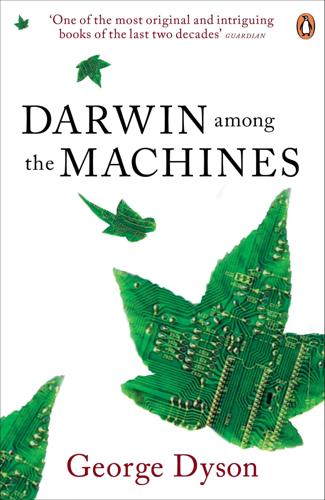
Darwin Among the Machines
by
George Dyson
Published 28 Mar 2012
Barricelli, “The Functioning of Intelligence Mechanisms Directing Biologic Evolution,” Theoretic Papers 3, no. 7 (1985): 126. 39.Maurice Wilkes, Memories of a Computer Pioneer (Cambridge: MIT Press, 1985), 145. 40.Barricelli, “Symbiogenetic Evolution Processes,” 147. 41.Thomas Ray, “Evolution, Complexity, Entropy, and Artificial Reality,” preprint submitted to Physica D (20 August 1993): 2. 42.Thomas Ray, “How I Created Life in a Virtual Universe” (unpublished preprint, School of Life and Health Sciences, University of Delaware, 29 March 1992), 5–6. 43.Ibid., 6. 44.Thomas Ray, “An Evolutionary Approach to Synthetic Biology: Zen and the Art of Creating Life,” preprint submitted to Artificial Life 1, no. 1 (21 October 1993): 5. 45.Thomas Ray, “A Proposal to Create a Network-Wide Biodiversity Reserve for Digital Organisms,” preprint, ATR Human Information Processing Research Laboratories, Kyoto, Japan (2 March 1994), 2. 46.Thomas Ray and Kurt Thearling, “Evolving Multi-cellular Artificial Life,” preprint submitted to Proceedings of Artificial Life IV (July 1994): 6. 47.Ray, “Proposal,” 6. 48.Ibid., 5–6. 49.Ray, “Synthetic Biology,” 29. 50.Thomas Ray, “Security,” unpublished memo, 1 August 1995. 51.Barricelli, “Numerical Testing of Evolution Theories,” 126. 52.Nils Barricelli, “Genetic Language, Its Origins and Evolution,” Theoretic Papers 4, no. 6 (1986): 106–107. 53.Nils A.

Age of Discovery: Navigating the Risks and Rewards of Our New Renaissance
by
Ian Goldin
and
Chris Kutarna
Published 23 May 2016
We don’t yet know the full extent to which DNA codes are compatible across species, but scientists are experimenting in labs across the planet to find out. Eventually, every plant, animal or bacterium with which we co-habit the Earth may contribute blocks of ready-made code that genetic programmers can combine to produce chimera organisms that serve human needs and fantasies. The next milestone for this field, called synthetic biology, will be to design a totally new organism from scratch. Why limit ourselves to nature’s code bases? Search online for “custom DNA synthesis,” and you’ll find dozens of private labs that will synthesize almost any DNA sequence you give them for under $0.20 a letter.*** They’ll mail you back the test tube in two to four weeks.
…
See also trade Free Trade Area of the Association of Southeast Asian Nations (ASEAN), 25 Galaxy Zoo, 148 Galileo Galilei, 107, 134, 237 Gates, Bill, 36 Gemma, Reinerus, 61 genetics gene therapy, 119–20, 158 genome sequencing costs, 117 history of, 114 Human Genome Project, 117, 238 and paradigm shifts, 114–21, 129–31 and race, 236–7 synthetic biology, 120 and technology, 116–21, 129–31, 148, 161, 165, 183 genius challenges of, 163–8 collective genius, 132–9 and contact points, 137–9 and courage, 242–3 and diversity, 238 and doubt, 150–5 and economic data, 155–6 and education, 135, 263–6 embracing, 238–45 and failure, 240–2 and fast-flowing ideas, 134–9 formula for flourishing, 132 and hope, 155–63 impacts of, 155–9 mitigating risk, 251–2 and new maps, 251–2 and patronage, 239–51 and place, 245–51 and policy, 243–5, 259–62 and risk-taking, 135–6 and technology, 136–7 and virtue, 256–66 See also paradigm shifts al-Ghazali, 69 GitHub, 35 Giving Pledge, 262 globalization, 5, 195, 219, 231, 259 Google search trends, 5 Google (Alphabet), 59, 198 cloud storage, 33 Google Translate, 146 high-altitude balloons, 96 Quantum Artificial Intelligence Lab, 126, 243 search engine, 156, 159 self-driving car, 167, 243 Gorbachev, Mikhail, 21–2 Gordon, Robert, 151 Grove, Andy, 157 Guicciardini, Francesco, 164 gunpowder, 2, 10, 19, 60, 74, 164, 168, 194 Gutenberg, Johann, 1, 7, 11, 25–6, 39, 80, 133–4, 136, 143, 150, 156, 167, 229 Gutenberg moment, 30–3, 35 Hanny’s Voorwerp, 148 Hawking, Stephen, 141, 156 health and medicine aging, 7, 113, 119, 153, 162 child mortality, 84, 119 genetics, 114–21, 129–31, 148, 153, 157, 161, 163, 165, 183, 236–7 life expectancy, 4, 7, 76, 82, 84, 88, 101, 153, 158 life expectancy at birth vs.
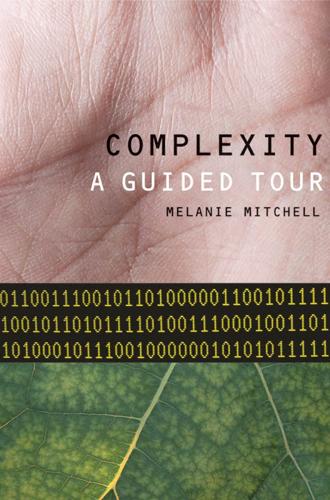
Complexity: A Guided Tour
by
Melanie Mitchell
Published 31 Mar 2009
Chapter 8 “Self-Reproducing Computer Programs”: Parts of this chapter were adapted from Mitchell, M., Life and evolution in computers. History and Philosophy of the Life Sciences, 23, 2001, pp. 361–383. “ … there has been some fascinating research”: See, for example, Luisi, P. L., The Emergence of Life: From Chemical Origins to Synthetic Biology. Cambridge: Cambridge University Press, 2006; or Fry, I., The Emergence of Life on Earth: A Historical and Scientific Overview. Piscataway, NJ: Rutgers University Press, 2000. “the field of artificial life”: For more information about the field of artificial life, see, for example, Langton, C.
…
This boring headline is written for Google. New York Times, April 9, 2006. Lorenz, E. N. Deterministic nonperiodic flow. Journal of Atmospheric Science, 357, 1963, pp. 130–141. Lovelock, J. E. The Ages of Gaia. New York: Norton, 1988. Luisi, P. L. The Emergence of Life: from Chemical Origins to Synthetic Biology. Cambridge, U.K.: Cambridge University Press, 2006. Mackenzie, D. Biophysics: New clues to why size equals destiny. Science, 284(5420), 1999, pp. 1607–1609. Macrae, N. John von Neumann. New York: Pantheon Books, 1992. Maddox, J. Slamming the door. Nature, 417, 2007, p. 903. Malone, M.

Who Owns the Future?
by
Jaron Lanier
Published 6 May 2013
I have worked on robots inspired by the “morphing” varieties of octopi that can change shape in order to allow your hands to feel arbitrary surfaces in a virtual world. Using such a robot feedback device, you would be able to feel virtual knobs instead of just see them, for instance. There is any number of other examples. Synthetic biology might someday produce “any” microorganism, and then maybe someday any macro one. The true star toward which we navigate is freedom from particularity. PART FIVE The Contest to Be Most Meta CHAPTER 12 Story Lost Not All Is Chaos A sanctioned malaise has been in effect for some decades now; it is accepted in some circles that future history will not be coherent.
…
M., 129–30, 261, 328 “Forum,” 214 Foucault, Michel, 308n 4chan, 335 4′33″ (Cage), 212 fractional reserve system, 33 Franco, Francisco, 159–60 freedom, 13–15, 32–33, 90–92, 277–78, 336 freelancing, 253–54 Free Print Shop, 228 “free rise,” 182–89, 355 free speech, 223, 225 free will, 166–68 “friction,” 179, 225, 230, 235, 354 Friendster, 180, 181 Fukuyama, Francis, 165, 189 fundamentalism, 131, 193–94 future: chaos in, 165–66, 273n, 331 economic analysis of, 1–3, 15, 22, 37, 38, 40–41, 42, 67, 122, 143, 148–52, 153, 155–56, 204, 208, 209, 236, 259, 274, 288, 298–99, 311, 362n, 363 humanistic economy for, 194, 209, 233–351 361–367 “humors” of, 124–40, 230 modern conception of, 123–40, 193–94, 255 natural basis of, 125, 127, 128–29 optimism about, 32–35, 45, 130, 138–40, 218, 230n, 295 politics of, 13–18, 22–25, 85, 122, 124–26, 128, 134–37, 199–234, 295–96, 342 technological trends in, 7–18, 21, 53–54, 60–61, 66–67, 85–86, 87, 97–98, 129–38, 157–58, 182, 188–90, 193–96, 217 utopian conception of, 13–18, 21, 30, 31, 37–38, 45–46, 96, 128, 130, 167, 205, 207, 265, 267, 270, 283, 290, 291, 308–9, 316 future-oriented money, 32–34, 35 Gadget, 186 Gallant, Jack, 111–12 games, 362, 363 Gates, Bill, 93 Gattaca, 130 Gawker, 118n Gelernter, David, 313 “general” machines, 158 General Motors, 56–57 general relativity theory, 167n Generation X, 346 genetic engineering, 130 genetics, 109–10, 130, 131, 146–47, 329, 366 genomics, 109–10, 146–47, 366 Germany, 45 Ghostery, 109 ghost suburbs, 296 Gibson, William, 137, 309 Gizmodo, 117–18 Global Business Network (GBN), 214–15 global climate change, 17, 32, 53, 132, 133, 134, 203, 266, 295, 296–97, 301–2, 331 global economy, 33n, 153–56, 173, 201, 214–15, 280 global village, 201 God, 29, 30–31, 139 Golden Goblet, 121, 121, 175, 328 golden rule, 335–36 gold standard, 34 Google, 14, 15, 19, 69, 74, 75–76, 90, 94, 106, 110, 120, 128, 153, 154, 170, 171, 174, 176, 180, 181–82, 188, 191, 192, 193, 199–200, 201, 209, 210, 217, 225, 227, 246, 249, 265, 267, 272, 278, 280, 286, 305n, 307, 309–10, 322, 325, 330, 344, 348, 352 Google Goggles, 309–10 Googleplex, 199–200 goops, 85–89, 99 Gore, Al, 80n Graeber, David, 30n granularity, 277 graph-shaped networks, 241, 242–43 Great Britain, 200 Great Depression, 69–70, 75, 135, 299 Great Recession, 31, 54, 60, 76–77, 204, 311, 336–37 Greece, 22–25, 45, 125 Grigorov, Mario, 267 guitars, 154 guns, 310–11 Gurdjieff, George, 215, 216 gurus, 211–13 hackers, 14, 82, 265, 306–7, 345–46 Hardin, Garrett, 66n Hartmann, Thom, 33n Hayek, Friedrich, 204 health care, 66–67, 95, 98–99, 100, 132–33, 153–54, 249, 253, 258, 337, 346 health insurance, 66–67, 95, 98–99, 100, 153–54 Hearts and Minds, 353n heart surgery, 11–13, 17, 18, 157–58 heat, 56 hedge funds, 69, 106, 137 Hephaestus, 22, 23 high-dimensional problems, 145 high-frequency trading, 56, 76–78, 154 highways, 79–80, 345 Hinduism, 214 Hippocrates, 124n Hiroshima bombing (1945), 127 Hollywood, 204, 206, 242 holographic radiation, 11 Homebrew Club, 228 homelessness, 151 homeopathy, 131–32 Homer, 23, 55 Honan, Mat, 82 housing market, 33, 46, 49–52, 61, 78, 95–96, 99, 193, 224, 227, 239, 245, 255, 274n, 289n, 296, 298, 300, 301 HTML, 227, 230 Huffington Post, 176, 180, 189 human agency, 8–21, 50–52, 85, 88, 91, 124–40, 144, 165–66, 175–78, 191–92, 193, 217, 253–64, 274–75, 283–85, 305–6, 328, 341–51, 358–60, 361, 362, 365–67 humanistic information economy, 194, 209, 233–351 361–367 human reproduction, 131 humors (tropes), 124–40, 157, 170, 230 hunter-gatherer societies, 131, 261–62 hyperefficient markets, 39, 42–43 hypermedia, 224–30, 245 hyper-unemployment, 7–8 hypotheses, 113, 128, 151 IBM, 191 identity, 14–15, 82, 124, 173–74, 175, 248–51, 283–90, 305, 306, 307, 315–16, 319–21 identity theft, 82, 315–16 illusions, 55, 110n, 120–21, 135, 154–56, 195, 257 immigration, 91, 97, 346 immortality, 193, 218, 253, 263–64, 325–31, 367 imports, 70 income levels, 10, 46–47, 50–54, 152, 178, 270–71, 287–88, 291–94, 338–39, 365 incrementalism, 239–40 indentured servitude, 33n, 158 India, 54, 211–13 industrialization, 49, 83, 85–89, 123, 132, 154, 343 infant mortality rates, 17, 134 infinity, 55–56 inflation, 32, 33–34 information: age of, 15–17, 42, 166, 241 ambiguity of, 41, 53–54, 155–56 asymmetry of, 54–55, 61–66, 118, 188, 203, 246–48, 285–88, 291–92, 310 behavior influenced by, 32, 121, 131, 173–74, 286–87 collection of, 61–62, 108–9 context of, 143–44, 178, 188–89, 223–24, 225, 245–46, 247, 248–51, 338, 356–57, 360 correlations in, 75–76, 114–15, 192, 274–75 for decision-making, 63–64, 184, 266, 269–75, 284n digital networks for, see digital networks duplication of, 50–52, 61, 74, 78, 88, 223–30, 239–40, 253–64, 277, 317–24, 335, 349 economic impact of, 1–3, 8–9, 15–17, 18, 19–20, 21, 35, 60–61, 92–97, 118, 185, 188, 201, 207, 209, 241–43, 245–46, 246–48, 256–58, 263, 283–87, 291–303, 331, 361–67 in education, 92–97 encrypted, 14–15, 175, 239–40, 305–8, 345 false, 119–21, 186, 275n, 287–88, 299–300 filters for, 119–20, 200, 225, 356–57 free, 7–9, 15–16, 50–52, 61, 74, 78, 88, 214, 223–30, 239–40, 246, 253–64, 277, 317–24, 335, 349 history of, 29–31 human agency in, 22–25, 69–70, 120–21, 122, 190–91 interpretation of, 29n, 114–15, 116, 120–21, 129–32, 154, 158, 178, 183, 184, 188–89 investment, 59–60, 179–85 life cycle of, 175–76 patterns in, 178, 183, 184, 188–89 privacy of, see privacy provenance of, 245–46, 247, 338 sampling of, 71–72, 191, 221, 224–26, 259 shared, 50–52, 61, 74, 78, 88, 100, 223–30, 239–40, 253–64, 277, 317–24, 335, 349 signals in, 76–78, 148, 293–94 storage of, 29, 167n, 184–85; see also cloud processors and storage; servers superior, 61–66, 114, 128, 143, 171, 246–48 technology of, 7, 32–35, 49, 66n, 71–72, 109, 110, 116, 120, 125n, 126, 135, 136, 254, 312–16, 317 transparency of, 63–66, 74–78, 118, 190–91, 306–7 two-way links in, 1–2, 227, 245, 289 value of, 1–3, 15–16, 20, 210, 235–43, 257–58, 259, 261–63, 271–75, 321–24, 358–60 see also big data; data infrastructure, 79–80, 87, 179, 201, 290, 345 initial public offerings (IPOs), 103 ink, 87, 331 Inner Directeds, 215 Instagram, 2, 53 instant prices, 272, 275, 288, 320 insurance industry, 44, 56, 60, 66–67, 95, 98–99, 100, 153–54, 203, 306 intellectual property, 44, 47, 49, 60, 61, 96, 102, 183, 204, 205–10, 223, 224–26, 236, 239–40, 246, 253–64 intelligence agencies, 56, 61, 199–200, 291, 346 intelligence tests, 39, 40 interest rates, 81 Internet: advertising on, 14, 20, 24, 42, 66, 81, 107, 109, 114, 129, 154, 169–74, 177, 182, 207, 227, 242, 266–67, 275, 286, 291, 322–24, 347–48, 354, 355 anonymity of, 172, 248–51, 283–90 culture of, 13–15, 25 development of, 69, 74, 79–80, 89, 129–30, 159, 162, 190–96, 223, 228 economic impact of, 1–2, 18, 19–20, 24, 31, 43, 60–66, 79–82, 117, 136–37, 169–74, 181, 186 employment and, 2, 7–8, 56–57, 60, 71–74, 79, 117, 123, 135, 149, 178, 201, 257–58 file sharing on, 50–52, 61, 74, 78, 88, 100, 223–30, 239–40, 253–64, 277, 317–24, 335, 349 free products and services of, 7n, 10, 60–61, 73, 81, 82, 90, 94–96, 97, 128, 154, 176, 183, 187, 201, 205–10, 234, 246–48, 253–64, 283–88, 289, 308–9, 317–24, 337–38, 348–50, 366 human contributions to, 19–21, 128, 129–30, 191–92, 253–64 identity in, 14–15, 82, 173–74, 175, 283–90, 315–16 investment in, 117–20, 181 legal issues in, 63, 79–82, 204, 206, 318–19 licensing agreements for, 79–82 as network, 2–3, 9, 11, 12, 14, 15, 16, 17, 19–21, 31, 49, 50–51, 53, 54–55, 56, 57, 75, 92, 129–30, 143–48, 228–29, 259, 286–87, 308–9 political aspect of, 13–15, 205–10 search engines for, 51, 60, 70, 81, 120, 191, 267, 289, 293; see also Google security of, 14–15, 175, 239–40, 305–8, 345 surveillance of, 1–2, 11, 14, 50–51, 64, 71–72, 99, 108–9, 114–15, 120–21, 152, 177n, 199–200, 201, 206–7, 234–35, 246, 272, 291, 305, 309–11, 315, 316, 317, 319–24 transparency of, 63–66, 176, 205–6, 278, 291, 308–9, 316, 336 websites on, 80, 170, 200, 201, 343 Internet2, 69 Internet service providers (ISPs), 171–72 Interstate Highway System, 79–80, 345 “In-valid,” 130 inventors, 117–20 investment, financial, 45, 50, 59–67, 74–80, 115, 116–20, 155, 179–85, 208, 218, 257, 258, 277–78, 298, 301, 348, 350 Invisible Hand humor, 126, 128 IP addresses, 248 iPads, 267 Iran, 199, 200 irony, 130 Islam, 184 Italy, 133 Jacquard programmable looms, 23n “jailbreaking,” 103–4 Japan, 85, 97, 98, 133 Jeopardy, 191 Jeremijenko, Natalie, 302 jingles, 267 jobs, see employment Jobs, Steve, 93, 166n, 192, 358 JOBS Act (2012), 117n journalism, 92, 94 Kapital, Das (Marx), 136 Keynesianism, 38, 151–52, 204, 209, 274, 288 Khan Academy, 94 Kickstarter, 117–20, 186–87, 343 Kindle, 352 Kinect, 89n, 265 “Kirk’s Wager,” 139 Klout, 365 Kodak, 2, 53 Kottke, Dan, 211 KPFA, 136 Kurzweil, Ray, 127, 325, 327 Kushner, Tony, 165, 189 LaBerge, Stephen, 162 labor, human, 85, 86, 87, 88, 99–100, 257–58, 292 labor unions, 44, 47–48, 49, 96, 239, 240 Laffer curve, 149–51, 150, 152 Las Vegas, Nev., 296, 298 lawyers, 98–99, 100, 136, 184, 318–19 leadership, 341–51 legacy prices, 272–75, 288 legal issues, 49, 63, 74–82, 98–99, 100, 104–5, 108, 136, 184, 204, 206, 318–19 Lehman Brothers, 188 lemonade stands, 79–82 “lemons,” 118–19 Lennon, John, 211, 213 levees, economic, 43–45, 46, 47, 48, 49–50, 52, 92, 94, 96, 98, 108, 171, 176n, 224–25, 239–43, 253–54, 263, 345 leveraged mortgages, 49–50, 61, 227, 245, 289n, 296 liberal arts, 97 liberalism, 135–36, 148, 152, 202, 204, 208, 235, 236, 251, 253, 256, 265, 293, 350 libertarianism, 14, 34, 80, 202, 208, 210, 262, 321 liberty, 13–15, 32–33, 90–92, 277–78, 336 licensing agreements, 79–82 “Lifestreams” (Gelernter), 313 Lights in the Tunnel, The (Ford), 56n Linux, 206, 253, 291, 344 litigation, 98–99, 100, 104–5, 108, 184 loans, 32–33, 42, 43, 74, 151–52, 306 local advantages, 64, 94–95, 143–44, 153–56, 173, 203, 280 Local/Global Flip, 153–56, 173, 280 locked-in software, 172–73, 182, 273–74 logical copies, 223 Long-Term Capital Management, 49, 74–75 looms, 22, 23n, 24 loopholes, tax, 77 lotteries, 338–39 lucid dreaming, 162 Luddites, 135, 136 lyres, 22, 23n, 24 machines, 19–20, 86, 92, 123, 129–30, 158, 261, 309–11, 328 see also computers “Machine Stops, The” (Forster), 129–30, 261, 328 machine translations, 19–20 machine vision, 309–11 McMillen, Keith, 117 magic, 110, 115, 151, 178, 216, 338 Malthus, Thomas, 132, 134 Malthusian humor, 125, 127, 132–33 management, 49 manufacturing sector, 49, 85–89, 99, 123, 154, 343 market economies, see economies, market marketing, 211–13, 266–67, 306, 346 “Markets for Lemons” problem, 118–19 Markoff, John, 213 marriage, 167–68, 274–75, 286 Marxism, 15, 22, 37–38, 48, 136–37, 262 as humor, 126 mash-ups, 191, 221, 224–26, 259 Maslow, Abraham, 260, 315 Massachusetts Institute of Technology (MIT), 75, 93, 94, 96–97, 157–58, 184 mass media, 7, 66, 86, 109, 120, 135, 136, 185–86, 191, 216, 267 material extinction, 125 materialism, 125n, 195 mathematics, 11, 20, 40–41, 70, 71–72, 75–78, 116, 148, 155, 161, 189n, 273n see also statistics Matrix, The, 130, 137, 155 Maxwell, James Clerk, 55 Maxwell’s Demon, 55–56 mechanicals, 49, 51n Mechanical Turk, 177–78, 185, 187, 349 Medicaid, 99 medicine, 11–13, 17, 18, 54, 66–67, 97–106, 131, 132–33, 134, 150, 157–58, 325, 346, 363, 366–67 Meetings with Remarkable Men (Gurdjieff), 215 mega-dossiers, 60 memes, 124 Memex, 221n memories, 131, 312–13, 314 meta-analysis, 112 metaphysics, 12, 127, 139, 193–95 Metcalf’s Law, 169n, 350 Mexico City, 159–62 microfilm, 221n microorganisms, 162 micropayments, 20, 226, 274–75, 286–87, 317, 337–38, 365 Microsoft, 19, 89, 265 Middle Ages, 190 middle class, 2, 3, 9, 11, 16–17, 37–38, 40, 42–45, 47, 48, 49, 50, 51, 60, 74, 79, 91, 92, 95, 98, 171, 205, 208, 210, 224–25, 239–43, 246, 253–54, 259, 262, 263, 280, 291–94, 331, 341n, 344, 345, 347, 354 milling machines, 86 mind reading, 111 Minority Report, 130, 310 Minsky, Marvin, 94, 157–58, 217, 326, 330–31 mission statements, 154–55 Mixed (Augmented) Reality, 312–13, 314, 315 mobile phones, 34n, 39, 85, 87, 162, 172, 182n, 192, 229, 269n, 273, 314, 315, 331 models, economic, 40–41, 148–52, 153, 155–56 modernity, 123–40, 193–94, 255 molds, 86 monetization, 172, 176n, 185, 186, 207, 210, 241–43, 255–56, 258, 260–61, 263, 298, 331, 338, 344–45 money, 3, 21, 29–35, 86, 108, 124, 148, 152, 154, 155, 158, 172, 185, 241–43, 278–79, 284–85, 289, 364 monocultures, 94 monopolies, 60, 65–66, 169–74, 181–82, 187–88, 190, 202, 326, 350 Moondust, 362n Moore’s Law, 9–18, 20, 153, 274–75, 288 morality, 29–34, 35, 42, 50–52, 54, 71–74, 188, 194–95, 252–64, 335–36 Morlocks, 137 morning-after pill, 104 morphing, 162 mortality, 193, 218, 253, 263–64, 325–31, 367 mortgages, 33, 46, 49–52, 61, 78, 95–96, 99, 224, 227, 239, 245, 255, 274n, 289n, 296, 300 motivation, 7–18, 85–86, 97–98, 216 motivational speakers, 216 movies, 111–12, 130, 137, 165, 192, 193, 204, 206, 256, 261–62, 277–78, 310 Mozart, Wolfgang Amadeus, 23n MRI, 111n music industry, 11, 18, 22, 23–24, 42, 47–51, 54, 61, 66, 74, 78, 86, 88, 89, 92, 94, 95–96, 97, 129, 132, 134–35, 154, 157, 159–62, 186–87, 192, 206–7, 224, 227, 239, 253, 266–67, 281, 318, 347, 353, 354, 355, 357 Myspace, 180 Nancarrow, Conlon, 159–62 Nancarrow, Yoko, 161 nanopayments, 20, 226, 274–75, 286–87, 317, 337–38, 365 nanorobots, 11, 12, 17 nanotechnology, 11, 12, 17, 87, 162 Napster, 92 narcissism, 153–56, 188, 201 narratives, 165–66, 199 National Security Agency (NSA), 199–200 natural medicine, 131 Nelson, Ted, 128, 221, 228, 245, 349–50 Nelsonian systems, 221–30, 335 Nelson’s humor, 128 Netflix, 192, 223 “net neutrality,” 172 networked cameras, 309–11, 319 networks, see digital networks neutrinos, 110n New Age, 211–17 Newmark, Craig, 177n New Mexico, 159, 203 newspapers, 109, 135, 177n, 225, 284, 285n New York, N.Y., 75, 91, 266–67 New York Times, 109 Nobel Prize, 40, 118, 143n nodes, network, 156, 227, 230, 241–43, 350 “no free lunch” principle, 55–56, 59–60 nondeterministic music, 23n nonlinear solutions, 149–50 nonprofit share sites, 59n, 94–95 nostalgia, 129–32 NRO, 199–200 nuclear power, 133 nuclear weapons, 127, 296 nursing, 97–100, 123, 296n nursing homes, 97–100, 269 Obama, Barack, 79, 100 “Obamacare,” 100n obsolescence, 89, 95 oil resources, 43, 133 online stores, 171 Ono, Yoko, 212 ontologies, 124n, 196 open-source applications, 206, 207, 272, 310–11 optical illusions, 121 optimism, 32–35, 45, 130, 138–40, 218, 230n, 295 optimization, 144–47, 148, 153, 154–55, 167, 202, 203 Oracle, 265 Orbitz, 63, 64, 65 organ donors, 190, 191 ouroboros, 154 outcomes, economic, 40–41, 144–45 outsourcing, 177–78, 185 Owens, Buck, 256 packet switching, 228–29 Palmer, Amanda, 186–87 Pandora, 192 panopticons, 308 papacy, 190 paper money, 34n parallel computers, 147–48, 149, 151 paranoia, 309 Parrish, Maxfield, 214 particle interactions, 196 party machines, 202 Pascal, Blaise, 132, 139 Pascal’s Wager, 139 passwords, 307, 309 “past-oriented money,” 29–31, 35, 284–85 patterns, information, 178, 183, 184, 188–89 Paul, Ron, 33n Pauli exclusion principle, 181, 202 PayPal, 60, 93, 326 peasants, 565 pensions, 95, 99 Perestroika (Kushner), 165 “perfect investments,” 59–67, 77–78 performances, musical, 47–48, 51, 186–87, 253 perpetual motion, 55 Persian Gulf, 86 personal computers (PCs), 158, 182n, 214, 223, 229 personal information systems, 110, 312–16, 317 Pfizer, 265 pharmaceuticals industry, 66–67, 100–106, 123, 136, 203 philanthropy, 117 photography, 53, 89n, 92, 94, 309–11, 318, 319, 321 photo-sharing services, 53 physical trades, 292 physicians, 66–67 physics, 88, 153n, 167n Picasso, Pablo, 108 Pinterest, 180–81, 183 Pirate Party, 49, 199, 206, 226, 253, 284, 318 placebos, 112 placement fees, 184 player pianos, 160–61 plutocracy, 48, 291–94, 355 police, 246, 310, 311, 319–21, 335 politics, 13–18, 21, 22–25, 47–48, 85, 122, 124–26, 128, 134–37, 149–51, 155, 167, 199–234, 295–96, 342 see also conservatism; liberalism; libertarianism Ponzi schemes, 48 Popper, Karl, 189n popular culture, 111–12, 130, 137–38, 139, 159 “populating the stack,” 273 population, 17, 34n, 86, 97–100, 123, 125, 132, 133, 269, 296n, 325–26, 346 poverty, 37–38, 42, 44, 53–54, 93–94, 137, 148, 167, 190, 194, 253, 256, 263, 290, 291–92 power, personal, 13–15, 53, 60, 62–63, 86, 114, 116, 120, 122, 158, 166, 172–73, 175, 190, 199, 204, 207, 208, 278–79, 290, 291, 302–3, 308–9, 314, 319, 326, 344, 360 Presley, Elvis, 211 Priceline, 65 pricing strategies, 1–2, 43, 60–66, 72–74, 145, 147–48, 158, 169–74, 226, 261, 272–75, 289, 317–24, 331, 337–38 printers, 90, 99, 154, 162, 212, 269, 310–11, 316, 331, 347, 348, 349 privacy, 1–2, 11, 13–15, 25, 50–51, 64, 99, 108–9, 114–15, 120–21, 152, 177n, 199–200, 201, 204, 206–7, 234–35, 246, 272, 291, 305, 309–13, 314, 315–16, 317, 319–24 privacy rights, 13–15, 25, 204, 305, 312–13, 314, 315–16, 321–22 product design and development, 85–89, 117–20, 128, 136–37, 145, 154, 236 productivity, 7, 56–57, 134–35 profit margins, 59n, 71–72, 76–78, 94–95, 116, 177n, 178, 179, 207, 258, 274–75, 321–22 progress, 9–18, 20, 21, 37, 43, 48, 57, 88, 98, 123, 124–40, 130–37, 256–57, 267, 325–31, 341–42 promotions, 62 property values, 52 proprietary hardware, 172 provenance, 245–46, 247, 338 pseudo-asceticism, 211–12 public libraries, 293 public roads, 79–80 publishers, 62n, 92, 182, 277–78, 281, 347, 352–60 punishing vs. rewarding network effects, 169–74, 182, 183 quants, 75–76 quantum field theory, 167n, 195 QuNeo, 117, 118, 119 Rabois, Keith, 185 “race to the bottom,” 178 radiant risk, 61–63, 118–19, 120, 156, 183–84 Ragnarok, 30 railroads, 43, 172 Rand, Ayn, 167, 204 randomness, 143 rationality, 144 Reagan, Ronald, 149 real estate, 33, 46, 49–52, 61, 78, 95–96, 99, 193, 224, 227, 239, 245, 255, 274n, 289n, 296, 298, 300, 301 reality, 55–56, 59–60, 124n, 127–28, 154–56, 161, 165–68, 194–95, 203–4, 216–17, 295–303, 364–65 see also Virtual Reality (VR) reason, 195–96 recessions, economic, 31, 54, 60, 76–77, 79, 151–52, 167, 204, 311, 336–37 record labels, 347 recycling, 88, 89 Reddit, 118n, 186, 254 reductionism, 184 regulation, economic, 37–38, 44, 45–46, 49–50, 54, 56, 69–70, 77–78, 266n, 274, 299–300, 311, 321–22, 350–51 relativity theory, 167n religion, 124–25, 126, 131, 139, 190, 193–95, 211–17, 293, 300n, 326 remote computers, 11–12 rents, 144 Republican Party, 79, 202 research and development, 40–45, 85–89, 117–20, 128, 136–37, 145, 154, 215, 229–30, 236 retail sector, 69, 70–74, 95–96, 169–74, 272, 349–51, 355–56 retirement, 49, 150 revenue growth plans, 173n revenues, 149, 149, 150, 151, 173n, 225, 234–35, 242, 347–48 reversible computers, 143n revolutions, 199, 291, 331 rhythm, 159–62 Rich Dad, Poor Dad (Kiyosaki), 46 risk, 54, 55, 57, 59–63, 71–72, 85, 117, 118–19, 120, 156, 170–71, 179, 183–84, 188, 242, 277–81, 284, 337, 350 externalization of, 59n, 117, 277–81 risk aversion, 188 risk pools, 277–81, 284 risk radiation, 61–63, 118–19, 120, 156, 183–84 robo call centers, 177n robotic cars, 90–92 robotics, robots, 11, 12, 17, 23, 42, 55, 85–86, 90–92, 97–100, 111, 129, 135–36, 155, 157, 162, 260, 261, 269, 296n, 342, 359–60 Roman Empire, 24–25 root nodes, 241 Rousseau, Jean-Jacques, 129 Rousseau humor, 126, 129, 130–31 routers, 171–72 royalties, 47, 240, 254, 263–64, 323, 338 Rubin, Edgar, 121 rupture, 66–67 salaries, 10, 46–47, 50–54, 152, 178, 270–71, 287–88, 291–94, 338–39, 365 sampling, 71–72, 191, 221, 224–26, 259 San Francisco, University of, 190 satellites, 110 savings, 49, 72–74 scalable solutions, 47 scams, 119–21, 186, 275n, 287–88, 299–300 scanned books, 192, 193 SceneTap, 108n Schmidt, Eric, 305n, 352 Schwartz, Peter, 214 science fiction, 18, 126–27, 136, 137–38, 139, 193, 230n, 309, 356n search engines, 51, 60, 70, 81, 120, 191, 267, 289, 293 Second Life, 270, 343 Secret, The (Byrne), 216 securitization, 76–78, 99, 289n security, 14–15, 175, 239–40, 305–8, 345 self-actualization, 211–17 self-driving vehicles, 90–92, 98, 311, 343, 367 servants, 22 servers, 12n, 15, 31, 53–57, 71–72, 95–96, 143–44, 171, 180, 183, 206, 245, 358 see also Siren Servers “Sexy Sadie,” 213 Shakur, Tupac, 329 Shelley, Mary, 327 Short History of Progress, A (Wright), 132 “shrinking markets,” 66–67 shuttles, 22, 23n, 24 signal-processing algorithms, 76–78, 148 silicon chips, 10, 86–87 Silicon Valley, 12, 13, 14, 21, 34n, 56, 59, 60, 66–67, 70, 71, 75–76, 80, 93, 96–97, 100, 102, 108n, 125n, 132, 136, 154, 157, 162, 170, 179–89, 192, 193, 200, 207, 210, 211–18, 228, 230, 233, 258, 275n, 294, 299–300, 325–31, 345, 349, 352, 354–58 singularity, 22–25, 125, 215, 217, 327–28, 366, 367 Singularity University, 193, 325, 327–28 Sirenic Age, 66n, 354 Siren Servers, 53–57, 59, 61–64, 65, 66n, 69–78, 82, 91–99, 114–19, 143–48, 154–56, 166–89, 191, 200, 201, 203, 210n, 216, 235, 246–50, 258, 259, 269, 271, 272, 280, 285, 289, 293–94, 298, 301, 302–3, 307–10, 314–23, 326, 336–51, 354, 365, 366 Siri, 95 skilled labor, 99–100 Skout, 280n Skype, 95, 129 slavery, 22, 23, 33n Sleeper, 130 small businesses, 173 smartphones, 34n, 39, 162, 172, 192, 269n, 273 Smith, Adam, 121, 126 Smolin, Lee, 148n social contract, 20, 49, 247, 284, 288, 335, 336 social engineering, 112–13, 190–91 socialism, 14, 128, 254, 257, 341n social mobility, 66, 97, 292–94 social networks, 18, 51, 56, 60, 70, 81, 89, 107–9, 113, 114, 129, 167–68, 172–73, 179, 180, 190, 199, 200–201, 202, 204, 227, 241, 242–43, 259, 267, 269n, 274–75, 280n, 286, 307–8, 317, 336, 337, 343, 349, 358, 365–66 see also Facebook social safety nets, 10, 44, 54, 202, 251, 293 Social Security, 251, 345 software, 7, 9, 11, 14, 17, 68, 86, 99, 100–101, 128, 129, 147, 154, 155, 165, 172–73, 177–78, 182, 192, 234, 236, 241–42, 258, 262, 273–74, 283, 331, 347, 357 software-mediated technology, 7, 11, 14, 86, 100–101, 165, 234, 236, 258, 347 South Korea, 133 Soviet Union, 70 “space elevator pitch,” 233, 342, 361 space travel, 233, 266 Spain, 159–60 spam, 178, 275n spending levels, 287–88 spirituality, 126, 211–17, 325–31, 364 spreadsheet programs, 230 “spy data tax,” 234–35 Square, 185 Stalin, Joseph, 125n Stanford Research Institute (SRI), 215 Stanford University, 60, 75, 90, 95, 97, 101, 102, 103, 162, 325 Starr, Ringo, 256 Star Trek, 138, 139, 230n startup companies, 39, 60, 69, 93–94, 108n, 124n, 136, 179–89, 265, 274n, 279–80, 309–10, 326, 341, 343–45, 348, 352, 355 starvation, 123 Star Wars, 137 star (winner-take-all) system, 38–43, 50, 54–55, 204, 243, 256–57, 263, 329–30 statistics, 11, 20, 71–72, 75–78, 90–91, 93, 110n, 114–15, 186, 192 “stickiness,” 170, 171 stimulus, economic, 151–52 stoplights, 90 Strangelove humor, 127 student debt, 92, 95 “Study 27,” 160 “Study 36,” 160 Sumer, 29 supergoop, 85–89 supernatural phenomena, 55, 124–25, 127, 132, 192, 194–95, 300 supply chain, 70–72, 174, 187 Supreme Court, U.S., 104–5 surgery, 11–13, 17, 18, 98, 157–58, 363 surveillance, 1–2, 11, 14, 50–51, 64, 71–72, 99, 108–9, 114–15, 120–21, 152, 177n, 199–200, 201, 206–7, 234–35, 246, 272, 291, 305, 309–11, 315, 316, 317, 319–24 Surviving Progress, 132 sustainable economies, 235–37, 285–87 Sutherland, Ivan, 221 swarms, 99, 109 synthesizers, 160 synthetic biology, 162 tablets, 85, 86, 87, 88, 113, 162, 229 Tahrir Square, 95 Tamagotchis, 98 target ads, 170 taxation, 44, 45, 49, 52, 60, 74–75, 77, 82, 149, 149, 150, 151, 202, 210, 234–35, 263, 273, 289–90 taxis, 44, 91–92, 239, 240, 266–67, 269, 273, 311 Teamsters, 91 TechCrunch, 189 tech fixes, 295–96 technical schools, 96–97 technologists (“techies”), 9–10, 15–16, 45, 47–48, 66–67, 88, 122, 124, 131–32, 134, 139–40, 157–62, 165–66, 178, 193–94, 295–98, 307, 309, 325–31, 341, 342, 356n technology: author’s experience in, 47–48, 62n, 69–72, 93–94, 114, 130, 131–32, 153, 158–62, 178, 206–7, 228, 265, 266–67, 309–10, 325, 328, 343, 352–53, 362n, 364, 365n, 366 bio-, 11–13, 17, 18, 109–10, 162, 330–31 chaos and, 165–66, 273n, 331 collusion in, 65–66, 72, 169–74, 255, 350–51 complexity of, 53–54 costs of, 8, 18, 72–74, 87n, 136–37, 170–71, 176–77, 184–85 creepiness of, 305–24 cultural impact of, 8–9, 21, 23–25, 53, 130, 135–40 development and emergence of, 7–18, 21, 53–54, 60–61, 66–67, 85–86, 87, 97–98, 129–38, 157–58, 182, 188–90, 193–96, 217 digital, 2–3, 7–8, 15–16, 18, 31, 40, 43, 50–51, 132, 208 economic impact of, 1–3, 15–18, 29–30, 37, 40, 53–54, 60–66, 71–74, 79–110, 124, 134–37, 161, 162, 169–77, 181–82, 183, 184–85, 218, 254, 277–78, 298, 335–39, 341–51, 357–58 educational, 92–97 efficiency of, 90, 118, 191 employment in, 56–57, 60, 71–74, 79, 123, 135, 178 engineering for, 113–14, 123–24, 192, 194, 217, 218, 326 essential vs. worthless, 11–12 failure of, 188–89 fear of (technophobia), 129–32, 134–38 freedom as issue in, 32–33, 90–92, 277–78, 336 government influence in, 158, 199, 205–6, 234–35, 240, 246, 248–51, 307, 317, 341, 345–46, 350–51 human agency and, 8–21, 50–52, 85, 88, 91, 124–40, 144, 165–66, 175–78, 191–92, 193, 217, 253–64, 274–75, 283–85, 305–6, 328, 341–51, 358–60, 361, 362, 365–67 ideas for, 123, 124, 158, 188–89, 225, 245–46, 286–87, 299, 358–60 industrial, 49, 83, 85–89, 123, 132, 154, 343 information, 7, 32–35, 49, 66n, 71–72, 109, 110, 116, 120, 125n, 126, 135, 136, 254, 312–16, 317 investment in, 66, 181, 183, 184, 218, 277–78, 298, 348 limitations of, 157–62, 196, 222 monopolies for, 60, 65–66, 169–74, 181–82, 187–88, 190, 202, 326, 350 morality and, 50–51, 72, 73–74, 188, 194–95, 262, 335–36 motivation and, 7–18, 85–86, 97–98, 216 nano-, 11, 12, 17, 162 new vs. old, 20–21 obsolescence of, 89, 97 political impact of, 13–18, 22–25, 85, 122, 124–26, 128, 134–37, 199–234, 295–96, 342 progress in, 9–18, 20, 21, 37, 43, 48, 57, 88, 98, 123, 124–40, 130–37, 256–57, 267, 325–31, 341–42 resources for, 55–56, 157–58 rupture as concept in, 66–67 scams in, 119–21, 186, 275n, 287–88, 299–300 singularity of, 22–25, 125, 215, 217, 327–28, 366, 367 social impact of, 9–21, 124–40, 167n, 187, 280–81, 310–11 software-mediated, 7, 11, 14, 86, 100–101, 165, 234, 236, 258, 347 startup companies in, 39, 60, 69, 93–94, 108n, 124n, 136, 179–89, 265, 274n, 279–80, 309–10, 326, 341, 343–45, 348, 352, 355 utopian, 13–18, 21, 31, 37–38, 45–46, 96, 128, 130, 167, 205, 207, 265, 267, 270, 283, 290, 291, 308–9, 316 see also specific technologies technophobia, 129–32, 134–38 television, 86, 185–86, 191, 216, 267 temperature, 56, 145 Ten Commandments, 300n Terminator, The, 137 terrorism, 133, 200 Tesla, Nikola, 327 Texas, 203 text, 162, 352–60 textile industry, 22, 23n, 24, 135 theocracy, 194–95 Theocracy humor, 124–25 thermodynamics, 88, 143n Thiel, Peter, 60, 93, 326 thought experiments, 55, 139 thought schemas, 13 3D printers, 7, 85–89, 90, 99, 154, 162, 212, 269, 310–11, 316, 331, 347, 348, 349 Thrun, Sebastian, 94 Tibet, 214 Time Machine, The (Wells), 127, 137, 261, 331 topology, network, 241–43, 246 touchscreens, 86 tourism, 79 Toyota Prius, 302 tracking services, 109, 120–21, 122 trade, 29 traffic, 90–92, 314 “tragedy of the commons,” 66n Transformers, 98 translation services, 19–20, 182, 191, 195, 261, 262, 284, 338 transparency, 63–66, 74–78, 118, 176, 190–91, 205–6, 278, 291, 306–9, 316, 336 transportation, 79–80, 87, 90–92, 123, 258 travel agents, 64 Travelocity, 65 travel sites, 63, 64, 65, 181, 279–80 tree-shaped networks, 241–42, 243, 246 tribal dramas, 126 trickle-down effect, 148–49, 204 triumphalism, 128, 157–62 tropes (humors), 124–40, 157, 170, 230 trust, 32–34, 35, 42, 51–52 Turing, Alan, 127–28, 134 Turing’s humor, 127–28, 191–94 Turing Test, 330 Twitter, 128, 173n, 180, 182, 188, 199, 200n, 201, 204, 245, 258, 259, 349, 365n 2001: A Space Odyssey, 137 two-way links, 1–2, 227, 245, 289 underemployment, 257–58 unemployment, 7–8, 22, 79, 85–106, 117, 151–52, 234, 257–58, 321–22, 331, 343 “unintentional manipulation,” 144 United States, 25, 45, 54, 79–80, 86, 138, 199–204 universities, 92–97 upper class, 45, 48 used car market, 118–19 user interface, 362–63, 364 utopianism, 13–18, 21, 30, 31, 37–38, 45–46, 96, 128, 130, 167, 205, 207, 265, 267, 270, 283, 290, 291, 308–9, 316 value, economic, 21, 33–35, 52, 61, 64–67, 73n, 108, 283–90, 299–300, 321–22, 364 value, information, 1–3, 15–16, 20, 210, 235–43, 257–58, 259, 261–63, 271–75, 321–24, 358–60 Values, Attitudes, and Lifestyles (VALS), 215 variables, 149–50 vendors, 71–74 venture capital, 66, 181, 218, 277–78, 298, 348 videos, 60, 100, 162, 185–86, 204, 223, 225, 226, 239, 240, 242, 245, 277, 287, 329, 335–36, 349, 354, 356 Vietnam War, 353n vinyl records, 89 viral videos, 185–86 Virtual Reality (VR), 12, 47–48, 127, 129, 132, 158, 162, 214, 283–85, 312–13, 314, 315, 325, 343, 356, 362n viruses, 132–33 visibility, 184, 185–86, 234, 355 visual cognition, 111–12 VitaBop, 100–106, 284n vitamins, 100–106 Voice, The, 185–86 “voodoo economics,” 149 voting, 122, 202–4, 249 Wachowski, Lana, 165 Wall Street, 49, 70, 76–77, 181, 184, 234, 317, 331, 350 Wal-Mart, 69, 70–74, 89, 174, 187, 201 Warhol, Andy, 108 War of the Worlds, The (Wells), 137 water supplies, 17, 18 Watts, Alan, 211–12 Wave, 189 wealth: aggregate or concentration of, 9, 42–43, 53, 60, 61, 74–75, 96, 97, 108, 115, 148, 157–58, 166, 175, 201, 202, 208, 234, 278–79, 298, 305, 335, 355, 360 creation of, 32, 33–34, 46–47, 50–51, 57, 62–63, 79, 92, 96, 120, 148–49, 210, 241–43, 270–75, 291–94, 338–39, 349 inequalities and redistribution of, 20, 37–45, 65–66, 92, 97, 144, 254, 256–57, 274–75, 286–87, 290–94, 298, 299–300 see also income levels weather forecasting, 110, 120, 150 weaving, 22, 23n, 24 webcams, 99, 245 websites, 80, 170, 200, 201, 343 Wells, H.
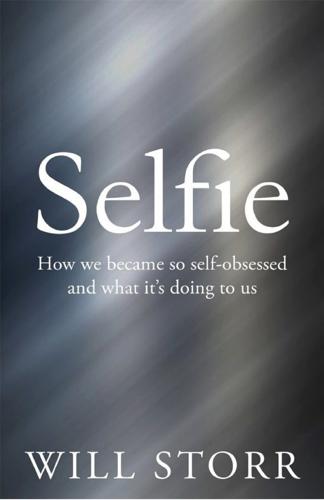
Selfie: How We Became So Self-Obsessed and What It's Doing to Us
by
Will Storr
Published 14 Jun 2017
If Doug Engelbart was the visionary of the Information Age, then perhaps history will one day crown Austen one of his heirs: a restless, optimistic, socially-maladjusted prophet of the oncoming Synthetic Age in which the project isn’t to augment human intelligence, but humans themselves. It was at Duke University, whilst working on a synthetic biology research project, that Austen came up with a new and efficient way of producing usable DNA that reduced the cost from tens of thousands of dollars to just a few. ‘Everyone else that makes DNA, makes DNA incorrectly and then tries to fix it,’ he said. ‘We don’t fix it. We just see what’s good, what’s bad and then we use the correct pieces.’
…
Keith ref1, ref2, ref3, ref4 Carlyle, Abbot Aelred ref1, ref2 Carnegie, Dale ref1 How to Win Friends and Influence People ref1 Carter, Drummond ref1 celebrity culture ref1, ref2, ref3 chimpanzees ref1, ref2 China biographies in ref1 Confucian self ref1 and group harmony ref1 suicides in ref1 Christian Science movement ref1 Christianity ref1, ref2 Ancient Greek influence ref1, ref2 and belief in God ref1 dourly introspective ref1 future-orientated ref1 orthodox not orthoprax ref1 and perfection ref1 and reason ref1 ritual and mimicry ref1 and the unconscious ref1 and the university system ref1 Cialdini, Dr Robert, The Psychology of Influence and Persuasion ref1 CJ becomes anorexic ref1 childhood and family life ref1 description and life ambition ref1 devotion to The Hunger Games ref1, ref2, ref3 drops out of drama college ref1 need for validation ref1 personality ref1, ref2 relationship with boys ref1 takes selfies as validation of self ref1, ref2 Claybury psychiatric hospital ref1 Clinton, Bill ref1, ref2 Clinton, Hilary ref1 Coan, James ref1 Cole, Steve ref1 the Collective ref1 computers see digital technology Confucianism ref1 and Aristotelianism ref1 and suicide ref1 Confucius ref1 Connop, Phoebe ref1 Cook, Tim ref1 Cooley, Charles Horton ref1 Cornish, Jackie ref1 corporate self ref1 Corporation Man and Woman, idea of ref1 Coulson, William ref1, ref2 Council of Economic Advisers ref1 Cowen, Graeme ref1, ref2 Cramer, Katherine ref1 cultural self and Ancient Greece ref1 and Asian self ref1, ref2 childhood and adolescence ref1 and Confucianism ref1 and the environment ref1 Freudian beliefs ref1 and ideal body ref1, ref2 and storytelling ref1 and youth ref1 Curtis, Adam ref1 Cynics, in Ancient Greece ref1 Deep Space Industries ref1, ref2 Demo: New Tech Solving Big Problems conference (San Jose, 2014) ref1 Deukmejian, George ‘The Duke’ ref1, ref2, ref3 digital technology and age of perfectionism ref1 development of ref1, ref2 dot.com crash ref1 humanist-neoliberal ideology ref1, ref2, ref3 and the ideal self ref1 online community ref1 personal computers ref1, ref2 as portal to information ref1 and the selfie drone ref1 vision of the future ref1 Web 2.0 ref1, ref2, ref3, ref4 DNA ref1 Doyle, Jacqueline ref1 Dunbar, Robin ref1 Eagleman, David ref1 East Asians ref1, ref2, ref3, ref4, ref5 eating disorders ref1, ref2 Eddy, Mary Baker ref1, ref2 Eells, Gregory ref1 effectance motive ref1 Ehrenreich, Barbara ref1 El Rancho Inn, Millbrae ref1, ref2, ref3 empathy ref1, ref2, ref3, ref4, ref5, ref6, ref7 encounter groups danger of ref1 Doug Engelbart’s ref1 online ref1 participation in ref1, ref2, ref3, ref4 Fritz Perls’ ref1 Carl Rogers as pioneer of ref1 Will Schutz’s ref1 Engelbart, Doug ref1 interest in EST ref1 introduces encounter groups ref1 joins Global Business Network ref1 presents personal computer concept ref1, ref2 vision of information age ref1, ref2 ‘Augmenting Human Intellect’ ref1 environment and development of the brain ref1, ref2 Easterners’ vs Westerners’ awareness of ref1 effect of changes to ref1 importance of ref1 and individual experience ref1 and social perfectionism ref1, ref2, ref3 Epley, Nicholas ref1, ref2 Erhard, Werner ref1 Erhard Seminars Training (EST) workshops ref1 Esalen Institute ref1, ref2, ref3, ref4, ref5, ref6, ref7, ref8, ref9, ref10 Big Yurt ref1 criticisms of ref1 final assignment ref1 hosts conference on Spiritual and Therapeutic Tyranny ref1, ref2, ref3 influence at Stanford ref1, ref2 The Max ref1, ref2 Pandora’s Box ref1 Fritz Perls’ Gestalt encounter groups ref1 role-play tasks ref1 Will Schutz’s encounter groups ref1 stated mission ref1 suicides connected to ref1 unaffiliated ‘Little Esalens’ ref1 and wired technology ref1 EST see Erhard Seminars Training (EST) workshops Euclid, Cleveland ref1 Euripides, The Suppliants ref1 extraverts ref1, ref2, ref3, ref4 Faber, Daniel ref1, ref2 Facebook ref1, ref2, ref3, ref4 Fall Joint Computer Conference (San Francisco, 1968) ref1, ref2 financial crises ref1, ref2, ref3, ref4 Flett, Gordon ref1, ref2 Fonda, Jane ref1, ref2 Fortune magazine ref1, ref2 ‘The Founder’ concept ref1, ref2 Fox, Jesse ref1 free speech ref1 free will ref1, ref2, ref3, ref4 Freud, Sigmund ref1, ref2, ref3, ref4 Totem and Taboo ref1 Frith, Chris ref1 Gagarin, Nick ref1 gamified self ref1, ref2, ref3 Garcia, Rigo ref1 Gazzaniga, Michael ref1, ref2 GBN see Global Business Network Generation X ref1, ref2 George, Carol ref1 gig economy ref1, ref2 Global Business Network (GBN) ref1, ref2 globalization ref1, ref2, ref3 Gold, Judith ref1 Goldman, Marion ref1 Gome, Gilad ref1, ref2, ref3 Gordon, Robert ref1 gossip ref1, ref2, ref3, ref4, ref5, ref6, ref7 Great Compression (c. 1945–c. 1975) ref1, ref2, ref3, ref4, ref5, ref6, ref7, ref8, ref9, ref10, ref11, ref12 Great Depression ref1 Greenspan, Alan appointed Chairman of the Federal Reserve ref1 considers himself a libertarian ref1 effect of decisions on financial crisis ref1 influenced by Rand ref1, ref2, ref3, ref4 relationship with Clinton ref1 rise to power ref1 Hacker Hostels, San Francisco ref1, ref2 Haidt, Jonathan ref1, ref2, ref3 Hampton, Debbie ref1, ref2, ref3, ref4 Hayek, Friedrich ref1, ref2, ref3 Heinz, Adrienne ref1, ref2, ref3 Heinz, Austen considered sexist and misogynistic ref1 description of ref1 DNA vision ref1 personality ref1 suicide of ref1 Henrich, Joseph ref1, ref2, ref3 heroes ref1, ref2, ref3, ref4, ref5, ref6, ref7, ref8 Hewitt, John ref1, ref2, ref3, ref4 Hierarchy of Needs (Maslow) ref1 Himba people ref1 Hogan, Robert ref1 Hollesley Bay Young Offenders Institution, Suffolk ref1 Hood, Bruce ref1, ref2, ref3 The Self Illusion ref1 Horowitz, Mitch ref1, ref2 Human Potential Movement ref1, ref2, ref3, ref4, ref5 Humanistic Psychology ref1, ref2 The Hunger Games ref1, ref2, ref3 hunter-gatherers ref1, ref2, ref3, ref4, ref5 Hutchinson, Audrey ref1, ref2 Huxley, Aldous ref1 ideal self ref1, ref2, ref3, ref4, ref5, ref6, ref7, ref8, ref9, ref10 see also perfect self Immaculate Heart Community, California ref1 Inc.com ref1, ref2 individualism and the 2016 political shocks ref1 in America ref1 Ancient Greek notion of ref1, ref2, ref3 and blame ref1 Christian view ref1, ref2 competitive ref1, ref2 cooperation and teamwork ref1, ref2 and culture ref1 development of ref1, ref2 East Asian concept of ref1 East–West clash ref1 and freedom ref1, ref2, ref3, ref4 getting along and getting ahead ref1, ref2 and the Great Compression ref1 hard form of ref1 as heightened ref1 hyper-individual model ref1 libertarian-neoliberal ref1 and passion ref1 and personality traits ref1, ref2 and Ayn Rand ref1, ref2, ref3, ref4 rise of ref1, ref2 and self-esteem ref1, ref2, ref3, ref4 and social pain ref1 and the state ref1 Stewart Brand’s concept of ref1 and wired technology ref1 internet ref1, ref2, ref3, ref4, ref5 and Doug Engelbart ref1 and Web 2.0 ref1, ref2, ref3 introverts ref1, ref2, ref3 Jaeger, Werner ref1, ref2, ref3 James, William ref1 Japan, suicide in ref1 Jeremy (mechanical engineer) ref1, ref2, ref3, ref4 Jobs, Steve ref1, ref2, ref3, ref4 Kalanick, Travis ref1 kalokagathia ref1, ref2, ref3, ref4, ref5 Kelly, Jodi ref1 Kidlington Detention Centre, Oxfordshire ref1 Kim, Uichol ref1, ref2, ref3, ref4, ref5 Konrath, Sara ref1 Lakewood Church, Houston ref1 leadership ref1, ref2 Leary, Mark ref1 Levey, Cate ref1, ref2 libertarianism ref1, ref2, ref3, ref4, ref5 Lincoln Elementary School, Long Beach ref1 Little, Brian ref1, ref2, ref3, ref4 Loewenstein, George ref1 ‘The Long Boom: A History of the Future’ (Schwartz et al.) ref1, ref2 The Looking-Glass Self (Bruce) ref1, ref2 Lord, Frances ref1 Luit (chimpanzee) ref1 Lyons, Dan ref1 McAdams, Dan ref1 McKee, Robert ref1 McManus, Chris ref1 Marin, Peter ref1 market rhetoric ref1 Markoff, John ref1 Martin, Father ref1, ref2, ref3, ref4 Marwick, Alice ref1, ref2, ref3 Maslow, Abraham ref1, ref2 Matteo Ricci College, Seattle ref1 Mayfield, Janet ref1 Mecca, Andrew ref1, ref2, ref3, ref4, ref5, ref6 Menlo Park ref1, ref2, ref3, ref4, ref5 Michie, Colin ref1 millennials ref1, ref2, ref3, ref4 Mind Cure ref1, ref2, ref3 Mitropoulos, Con ref1, ref2 monastic life ref1, ref2, ref3, ref4, ref5 Monitoring the Future Project ref1 Mont Pelerin Society ref1 Morales, Helen ref1 Mumford, Lewis, The Myth of the Machine ref1 Murphy, Michael ref1, ref2, ref3, ref4, ref5, ref6, ref7 Musk, Elon ref1, ref2, ref3 narcissism ref1 at Esalen ref1, ref2 and over-praise ref1, ref2 research into ref1 rise in ref1, ref2, ref3, ref4 and self-esteem ref1, ref2, ref3 and Trump ref1 and Vasco ref1 in younger people ref1, ref2 The Narcissism Epidemic (Twenge and Campbell) ref1 narcissistic perfectionism ref1 Narcissistic Personality Disorder ref1 Narcissistic Personality Inventory (NPI) ref1, ref2 National Academy of Sciences Proceedings (2015) ref1 National Council for Self Esteem ref1 nature vs nurture in development ref1, ref2 neoliberalism becomes mainstream ref1 and being self-sufficient and successful ref1 and ‘bespoke hero’ ref1 corporate view ref1 and creation of new form of human ref1 and the digital future ref1 disdain for regulation and government oversight ref1 emergence ref1 and financial inequalities ref1, ref2 and gay rights/gay marriage ref1 and global financial crisis (2008) ref1 as global phenomenon ref1 governments run like businesses ref1 Hayek’s vision of ref1, ref2 individualism, status and self-esteem ref1 negative effects ref1 and new style of government ref1 and power of multinationals ref1 rebellion against ref1 and structural inequalities ref1 and working conditions ref1 Netflix: code for employees ref1 Nettle, Daniel ref1, ref2, ref3, ref4 Personality ref1 neurotics and neuroticism ref1, ref2 neurotic perfectionism ref1, ref2, ref3, ref4 as personality trait ref1, ref2, ref3, ref4, ref5, ref6, ref7 Nietzsche Society, UCL ref1 Nisbett, Richard ref1, ref2, ref3, ref4, ref5, ref6, ref7 NPI see Narcissism Personality Index; Narcissistic Personality Inventory O’Connor, Rory ref1, ref2, ref3, ref4, ref5 Oedipus complex ref1, ref2 O’Reilly, Tim ref1 ostracism ref1 Ozawa-de Silva, Chikako ref1 Pakrul, Stephanie (aka StephTheGeek) ref1 ‘Paris Hilton effect’ ref1 Peale, Dr Norman Vincent, The Power of Positive Thinking ref1 perfect self as an illusion ref1 Heinz Austen as example of ref1 and being anything we want to be ref1, ref2 Christian ref1 CJ as example of ref1 cultural conception of ref1 and culture ref1 and digital self ref1 and gamified individualist economy ref1 and ideal self ref1 judging others and ourselves ref1 narcissistic ref1 and neoliberalism ref1 neurotic ref1, ref2, ref3, ref4 perfectionist presentation ref1 and personal responsibility ref1 pressures of ref1 and the self ref1, ref2 selfishness or selflessness ref1, ref2 social ref1 and suicide ref1 see also ideal self Perls, Fritz ref1, ref2 as a ‘dirty old man’ ref1, ref2, ref3 feud with Schutz ref1 fractious relationship with Esalen ref1 Gestalt encounter groups ref1, ref2, ref3 near obsessional attacks and insults ref1 reaction to suicides ref1 Tom Wolfe’s comments on ref1 tough upbringing ref1 visits Freud ref1, ref2 personal computers see digital technology personality and acting out of character ref1 assumptions concerning ref1 basic traits ref1, ref2, ref3 and being or doing whatever we want ref1 and the brain ref1, ref2, ref3 different people in different contexts ref1 individualism and self-esteem ref1 and parental influence ref1 predictable shifts in ref1 prison metaphor ref1 and realising you’re not the person you wanted to be ref1 social responses ref1 tests and research ref1 as virtually unchanging ref1 physical self Ancient Greek ideals ref1, ref2 and body consciousness ref1, ref2, ref3, ref4 cultural influences ref1 and diet ref1 linked to moral worth ref1 Pluscarden Abbey ref1, ref2, ref3, ref4, ref5, ref6, ref7, ref8 polyamory ref1, ref2 Price, Marcia ref1 Price, Richard ref1, ref2, ref3 Pridmore, John ref1 childhood trauma ref1 effect of culture on ref1, ref2, ref3 sent to prison ref1 undergoes religious conversion ref1, ref2, ref3 violent behaviour ref1, ref2, ref3, ref4, ref5, ref6, ref7 weeps when watching TV ref1, ref2 psychoanalysis ref1 Qi Wang ref1 Quimby, Phineas ref1, ref2 Rainbow Mansion, Silicon Valley ref1, ref2 Rand, Ayn ref1, ref2, ref3 beliefs and influence ref1, ref2, ref3, ref4, ref5, ref6 changes her name/identity ref1 early life ref1 reaction to Nathaniel Branden’s infidelity ref1, ref2 sets up the Collective ref1 Atlas Shrugged ref1, ref2, ref3 The Fountainhead ref1 The Virtue of Selfishness ref1 reputation ref1, ref2 in Ancient Greece ref1 ‘getting along and getting ahead’ (Hogan) ref1, ref2, ref3, ref4, ref5, ref6 and guilt ref1 ‘honour culture’ ref1 and tribal brains ref1 Rogers, Art ref1, ref2 Rogers, Carl ref1, ref2, ref3, ref4, ref5, ref6, ref7 Roh Moo-hyun ref1 Rosenbaum, Alyssa see Rand, Ayn Rosetto, Louis ref1 Ross, Ben ref1, ref2 Rudnytsky, Peter ref1 Rule of St Benedict, The ref1, ref2 San Francisco ref1, ref2, ref3, ref4, ref5, ref6, ref7, ref8, ref9 Sapolsky, Robert ref1, ref2 Sartre, Jean-Paul ref1, ref2 Satir, Virginia ref1 Schuman, Michael ref1 Schutz, Will ref1, ref2, ref3, ref4, ref5, ref6 Joy ref1 Schwartz, Peter ref1 Scott, Sophie ref1, ref2 Seager, Martin ref1 self cultivation of ref1 East Asian, and reality ref1, ref2 and engagement in personal projects ref1 and local best-practice ref1 and need for a mission ref1 as open and free ref1 perfectible ref1, ref2 as a story ref1 see also authentic self Self-Determination Think Tank ref1 self-esteem Baumeister’s research into ref1 belief in ref1 and changes in values ref1 in education ref1, ref2, ref3 high ref1, ref2, ref3, ref4 and lack of tolerance and empathy ref1 legislation embodying ref1 legitimization of ref1 and life-affirming message ref1 lingering effects of movement ref1 low ref1, ref2, ref3, ref4, ref5, ref6, ref7, ref8, ref9, ref10 media questioning of ref1 myths and lies concerning ref1, ref2, ref3 and narcissism ref1, ref2, ref3 negative effects ref1 negative report on ref1 and overpraise ref1 and perfectionism ref1 popularity of ref1 raising ref1 research into ref1 and selfie generation ref1 Self-Esteem Task Force project ref1 social importance of ref1 Vasco’s ideology of ref1, ref2, ref3, ref4, ref5, ref6, ref7 Western emphasis on ref1 self-harm ref1, ref2, ref3, ref4, ref5, ref6, ref7, ref8 self-interest ref1, ref2, ref3 self-just-about-everything ref1, ref2 self-loathing ref1 self-love movement ref1, ref2, ref3, ref4 selfie generation ref1 awareness of structural inequalities ref1 CJ as example of ref1, ref2 effect of social media on ref1 maintaining continual state of perfection ref1 and narcissism ref1 need for social feedback ref1 and parenting practices ref1 selfishness/selflessness ref1, ref2, ref3, ref4, ref5 Shannahoff-Khalsa, David ref1, ref2, ref3, ref4 Shannin (entrepreneur) ref1 Shaw, Paula ref1, ref2, ref3, ref4 Silani, Dr Giorgia ref1 Silicon Valley, California ref1, ref2 attitude to conspicuous wealth ref1 as capital of the neoliberal self ref1 cold-blooded rationalism in ref1 demonstration of personal computing in ref1 hyper-individualist model of corporate self in ref1, ref2 involvement in transformation of economy ref1 lack of compassion in ref1 links with Esalen ref1 living in fear in ref1 as military-industrial complex ref1 model of ideal self in ref1 Simon, Meredith ref1, ref2, ref3 Singularity ref1 Smelser, Neil ref1, ref2, ref3, ref4, ref5 Smiles, Samuel ref1 Self Help ref1 Snyder, Mark ref1 Social Importance of Self-Esteem, The (Smelser et al.) ref1, ref2 social media ref1, ref2 social pain ref1, ref2 South Korea, suicide in ref1 Sparks, Randy ref1 Oh Yes, I’m A Wonderful Person and other Musical Adventures for those of us in search of Greater Self-Esteem ref1 Spiritual and Therapeutic Tyranny: The Willingness to Submit (conference, 1973) ref1, ref2, ref3 Squire, Michael ref1 Stanford Research Institute, Menlo Park ref1, ref2 Augmentation Research Center (ARC) ref1, ref2 Stanford University ref1, ref2, ref3 Center for Advanced Study in the Behavioral Sciences Unit ref1 Stark, Rodney ref1 start-ups ref1, ref2, ref3, ref4, ref5, ref6 Startup Castle, Silicon Valley ref1 stimulus-action hunger ref1 storytelling Brexit/Trump narrative ref1 development of personal narratives ref1 East–West differences/similarities ref1 and feelings of control ref1 as form of tribal propaganda ref1 happiness and sense of purpose ref1 and the inner voice ref1, ref2, ref3, ref4, ref5 self and culture ref1 and self-esteem ref1 and self-loathing ref1 selfishness or selflessness ref1, ref2, ref3 split-brain participants ref1 success and failure ref1 as universal ref1 suicide ref1 attempts at ref1, ref2, ref3 Confucian cultures ref1 connected to Esalen ref1, ref2 as failed hero stories ref1 gender and culture ref1, ref2 increase due to financial crisis (2008) ref1 in Japan ref1 and loss of hero status ref1 as a mystery ref1 patterns in ref1 and perfectionism ref1, ref2, ref3 rates of ref1 research into ref1 in South Korea ref1 Sunshine (attendee at Esalen) ref1 Sweet Peach ref1 synthetic biology ref1, ref2 Talhelm, Thomas ref1 Tanzania ref1, ref2 teamwork/cooperation ref1 Thiel, Peter ref1 Zero to One ref1 Tice, Dianne ref1 Tomkins, Detective Sergeant Katherine ref1 Tomlinson, Rachel ref1 Toward a State of Esteem (1990) ref1 tribal self Brexit/Trump narrative ref1 hierarchy, territory, status ref1 and ideal/perfect self ref1 monks as ref1 prejudice and bias ref1 and punishing of transgressors ref1 reputation and gossip ref1, ref2 selflessness or selflessness ref1, ref2, ref3, ref4 and storytelling/left-brain interpretation ref1 Trudeau, Garry ref1, ref2, ref3, ref4 Trump, Donald as anti-establishment ref1 appeal to voters ref1, ref2 declares he will put ‘America first’ ref1 false stories concerning ref1 narcissistic tendencies ref1 and social media ref1 as straightforward no-nonsense businessman ref1 Trzesniewski, Kali ref1 Turner, Fred ref1, ref2 Twenge, Jean ref1, ref2, ref3, ref4 20Mission (Hacker Hostel, San Francisco) ref1 Twitter ref1, ref2, ref3, ref4 University of Glasgow Suicide Behaviour Research Laboratory ref1, ref2, ref3 Vanessa (employee at Rainbow Mansion) ref1, ref2 Vasconcellos, John ‘Vasco’ ref1, ref2 death of ref1 description and beliefs ref1 early life and education ref1 as ‘furious’ ref1, ref2, ref3 as homosexual ref1 ideology of self-esteem ref1, ref2, ref3, ref4, ref5 nutty notions of ref1, ref2 ridiculed by the media ref1 and Smelser’s conclusions on the task force ref1 suffers massive heart attack ref1, ref2 Task Force project ref1 Vittitow, Dick ref1 Waal, Frans de ref1 Wallace, Donald ‘Smokey’ ref1 Warren, Laura ref1 Whole Earth Catalog ref1 Whole Earth ’Lectronic Link ref1, ref2, ref3 Wigglesworth, Smith ref1, ref2 Williams, Kip ref1, ref2 Wilson, Timothy D. ref1 Wolfe, Tom ref1 Wolin, Sheldon ref1 Wood, Natalie ref1, ref2 Wrangham, Richard ref1 Xerox ref1, ref2, ref3 zero-hours contracts ref1, ref2, ref3 Also by Will Storr FICTION The Hunger and the Howling of Killian Lone NON-FICTION Will Storr versus The Supernatural The Heretics: Adventures with the Enemies of Science (published in the US as The Unpersuadables) First published 2017 by Picador This electronic edition published 2017 by Picador an imprint of Pan Macmillan 20 New Wharf Road, London N1 9RR Associated companies throughout the world www.panmacmillan.com ISBN 978-1-4472-8367-6 Copyright © Will Storr 2017 Cover Design: Neil Lang, Picador Art Department The right of Will Storr to be identified as the author of this work has been asserted by him in accordance with the Copyright, Designs and Patents Act 1988.
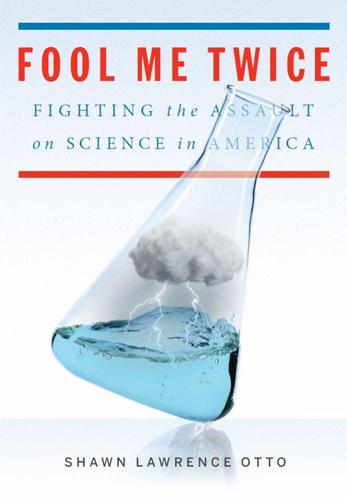
Fool Me Twice: Fighting the Assault on Science in America
by
Shawn Lawrence Otto
Published 10 Oct 2011
The telegram contained what has become one of the most famous quotes in science: The unleashed power of the atom has changed everything save our modes of thinking and we thus drift toward unparalleled catastrophe.11 Everything has changed “save our modes of thinking” can speak not only of the bomb, but also of climate change, biodiversity loss and habitat fragmentation, ocean trawling, geoengineering, synthetic biology, genetic modification, chemical pollution, and a host of other science challenges we now face. Science and technology have delivered awesome power to governments and industry, but they have not granted us complete awareness of the potential consequences of this power or mechanisms for its sustained use without causing destruction.
…
These scientists are trying to find effective ways to reach out, to help people think through the implications of this expanding knowledge, to understand the truth about climate change, ocean health, the biosciences, the economy and the environment. To anticipate the questions that will be raised by emerging advances in genetics, nano-technology, synthetic biology, technology, neuroscience, and stem cell research. Religious leaders who love their flocks and care about God’s Earth and the stewardship of creation have a moral duty to seize scientists’ open hands with open hands of their own, to reach out to scientists in renewed partnership to minister to the whole person’s full intelligence, not just to his or her anger, fear, resentment, and memories of the rose-tinted days of yore.

The Future Is Asian
by
Parag Khanna
Published 5 Feb 2019
Western narratives have long derided Asian cultures as being merely copycats. But innovation is not just about scientific invention but about societal adaptation. Whether Asia is just catching up (as in life expectancy and nutrition) or racing ahead (as in mobile finance), it is adopting the latest technologies such as robotics, sensor networks, and synthetic biology. From blockchain to gene editing, success and advantage won’t be determined by who is rich or poor, democratic or nondemocratic, but rather who best scales new technologies and business models. As every society in the world faces varying degrees of technological disruption, one crucial factor Asians have in their favor is psychological: they are not afraid of new technology.
…
China has used the same technology that Scottish scientists used to clone the sheep named Dolly in the 1990s to clone monkeys; CRISPR gene-editing technology was pioneered in the United States, but human trials are under way in Chinese hospitals while none has yet been launched in the United States. In 2016, scientists at Singapore’s A*STAR developed a new protein that speeds up DNA editing, and the country’s Temasek Life Sciences Laboratory has launched a large-scale synthetic biology incubator. It is likely that prenatal genetic interventions will become the norm in Asia. More immediately, Asians are also benefiting from a global awareness about the importance of healthy lifestyles and the latest biomedical technologies and health care practices. Japan and Singapore have the world’s highest life expectancies, which only some counties in California and Colorado can match.
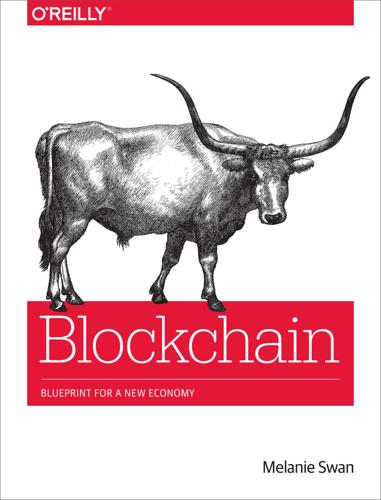
Blockchain: Blueprint for a New Economy
by
Melanie Swan
Published 22 Jan 2014
“Distilling Free-Form Natural Laws from Experimental Data.” Science 324, no. 5923 (2009): 81–5. http://creativemachines.cornell.edu/sites/default/files/Science09_Schmidt.pdf; Keim, B. “Computer Program Self-Discovers Laws of Physics.” Wired, April 2, 2009. http://www.wired.com/2009/04/newtonai/. 158 Muggleton, S. “Developing Robust Synthetic Biology Designs Using a Microfluidic Robot Scientist. Advances in Artificial Intelligence—SBIA 2008.” Lecture notes in Computer Science 5249 (2008):4. http://link.springer.com/chapter/10.1007/978-3-540-88190-2_3. 159 Waltz, D. and BG Buchanan. “Automating Science.” Science 324, no. 5923 (2009): 43–4. http://www.sciencemag.org/content/324/5923/43. 160 Higgins, S.
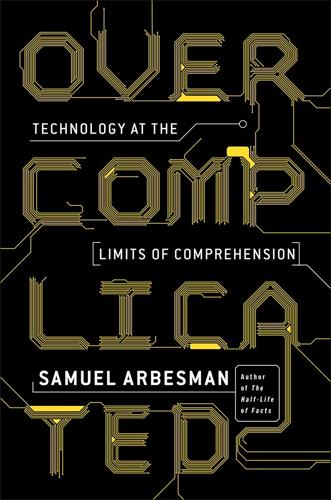
Overcomplicated: Technology at the Limits of Comprehension
by
Samuel Arbesman
Published 18 Jul 2016
“first, you assume a spherical cow”: Biologists are very much against the idea of the spherical cow: “If biologists are much like physicists in stretching the limits of experimental reductionism, they are also like engineers in revelling in the enormity, variety and sheer complexity of the systems they study. No interest in spherical cows here.” John Doyle, “Computational Biology: Beyond the Spherical Cow,” Nature 411 (2001): 151–52, http://www.nature.com/nature/journal/v411/n6834/full/411151a0.html. the biologist Steven Benner notes: Steven A. Benner, “Aesthetics in Synthesis and Synthetic Biology,” Current Opinion in Chemical Biology 16, no. 5–6 (2012): 581–85. obsolete legacy code, just as technology: Obsolete legacy genetic code is similar to the “cruft” found in software: extra material that is no longer necessary for the current version’s function, yet can last far longer than we might wish.

Spin
by
Robert Charles Wilson
Published 2 Jan 2005
It was true that they weren't especially warlike—the Five Republics had settled their political differences almost a millennium ago—and they were "pastoral" in the sense that they devoted most of their resources to agriculture. But nor were they "simple" in any sense of the word. They were, as Jase had pointed out, past masters of the art of synthetic biology. Their civilization had been founded on it. We had built them a habitable planet with biotech tools, and there had never been a Martian generation that didn't understand the function and potential uses of DNA. If their large-scale technology was sometimes crude— Wun's spacecraft, for instance, had been almost primitive, a Newtonian cannonball—it was because of their radically constrained natural resources.
…
"He confided in me, yes, though most of what he said was already implicit in the archives." Rust-colored light from the window reflected from Jason's blind, altered eyes. "But he could have been lying." "I don't know that he ever lied, Tyler. He was just a little stingy with the truth." The microscopic replicators Wun had carried to Earth were cutting-edge synthetic biology. They were fully capable of doing everything Wun promised they would do. In fact they were more sophisticated than Wun had been willing to admit. Among the replicators' unacknowledged functions was a hidden second subchannel for communicating among themselves and with their point of origin.

The Precipice: Existential Risk and the Future of Humanity
by
Toby Ord
Published 24 Mar 2020
Science, 327(5970), 1,214–8. Seneca, L. A. (1972). Natural Questions, vol. II (trans. T. H. Corcoran). Harvard University Press. Serber, R. (1992). The Los Alamos Primer: The First Lectures on How to Build an Atomic Bomb. University of California Press. Shapira, P., and Kwon, S. (2018). “Synthetic Biology Research and Innovation Profile 2018: Publications and Patents.” BioRxiv, 485805. Shelley, M. W. (1826). The Last Man (1st ed.). Henry Colburn. —(2009). “Introduction,” in S. Curran (ed.), Frankenstein (vol. 1). University of Colorado, Boulder (original work published in 1831). Sherwood, S.
…
This is an incredibly powerful tool, allowing researchers to pursue genetic modification on a population level. 23 Cost per genome was $9 million in early 2007 (Wetterstrand, 2019). At the time of writing, Dante Labs offers whole genome sequencing for €599 (∼$670) (Dante Labs, 2019). One study finds publications in synthetic biology increasing by 660% when comparing 2012–2017 to 2000–2006 (Shapira & Kwon, 2018). VC funding for biotechnology increased from ∼$3 billion in 2012 to ∼$7 billion in 2016 (Lightbown, 2017). 24 Herfst et al. (2012). 25 Taubenberger & Morens (2006) estimate the mortality rate for the 1918 flu at upward of 2.5%. 26 The experiment by Yoshihiro Kawaoka also involved producing a mammal-to-mammal transmissible strain of H5N1 using ferrets, though Kawaoka’s experiment started with a hybrid of H5N1 and H1N1 viruses.

MacroWikinomics: Rebooting Business and the World
by
Don Tapscott
and
Anthony D. Williams
Published 28 Sep 2010
Synthetic Humans and the New Building Blocks of Life From our conversations to date, we are convinced that we have only seen the tip of the iceberg when it comes to exploiting the new sciences of life. It turns out that scientific openness is expanding way beyond papers and even data to the very building blocks of life itself, all thanks to a burgeoning field called synthetic biology that applies engineering principles to building new biological systems ranging from food to fuel to medicine. That’s a pretty big idea, so here are the basics. Imagine that all of life’s complexity could be boiled down to a library of interoperating components. The basic fundamentals of life, all indexed, open to the public, and waiting to be reassembled into new creations in the same fashion as one might twist and scramble a Rubik’s cube.
…
After all, scientists have been engineering the genetic makeup of life for thirty to forty years. Aren’t we still a very long way from exercising the kind of futuristic capabilities just described? All that’s about to change, insists Jason Kelly, cofounder of OpenWetWare and a new company called Ginkgo BioWorks that has been set up to capitalize on the field of synthetic biology. “A lot of what has been done to date is really just tinkering,” he says. “You sort of get in there and you hack around. You make some changes that are really unpredictable. You don’t know what’s going to happen.” Kelly argues that what genetic engineering really needs now is a set of standardized, interchangeable parts with standardized interfaces for assembly.
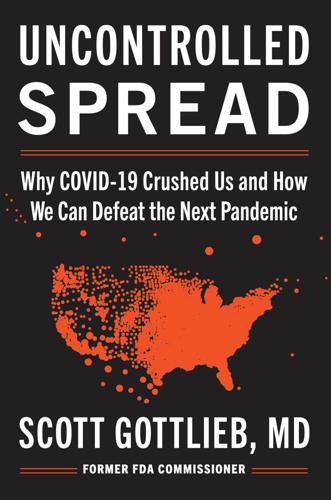
Uncontrolled Spread: Why COVID-19 Crushed Us and How We Can Defeat the Next Pandemic
by
Scott Gottlieb
Published 20 Sep 2021
He knew that speed to market would save lives. The mRNA vaccines marked a historical turning point. COVID straddled a line between two states of scientific fitness, a point when the wet approach—producing flu vaccine in large vats that relied on eggs and cell cultures and live viruses—gave way to the intelligent design of synthetic biology: digitizing snippets of mRNA that could commandeer our cells and turn our bodies into breweries for viral proteins. For the first time, we had the ability to develop fully synthetic vaccines based entirely on information about a pathogen’s genetic sequence. Under the new approach, maximizing potency turned on the ability to tweak these strands using computers in ways that would make the resulting proteins more immunogenic.
…
What’s more, there is still inadequate attention paid to the dangers created by the publication of the sequences of these enhanced pathogens, with which anyone around the world skilled in the art can synthesize these dangerous agents,” Relman wrote.80 We’ll also need target our surveillance to these potential hazards, not only labs that are engaging in unduly risky practices, but how synthetic biology could be used for rogue purposes. The mere possibility of a lab leak as a source of this pandemic could serve to reinforce for those with diabolical intent that an organism refined and released from a laboratory could be used as a trigger to a widespread contagion. Nobody believes COVID emanated from a deliberate act.
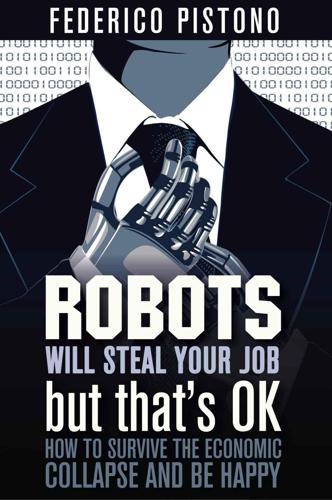
Robots Will Steal Your Job, But That's OK: How to Survive the Economic Collapse and Be Happy
by
Pistono, Federico
Published 14 Oct 2012
The more companies automate, because of the need to increase their productivity, the more jobs will be lost, forever. The future of work and innovation is not in the past that we know, but in unfamiliar territory of the future that is yet to come. New and exciting fields are emerging every day. Synthetic biology, neurocomputation, 3D printing, contour crafting, molecular engineering, bioinformatics, life extension, robotics, quantum computing, artificial intelligence, machine learning, these new frontiers that are rapidly evolving and are just the beginning of a new, amazing era of our species that will bring about the greatest transformation of all time.

Thank You for Being Late: An Optimist's Guide to Thriving in the Age of Accelerations
by
Thomas L. Friedman
Published 22 Nov 2016
It reminds me of a Joni Mitchell song: “I’ve looked at clouds from both sides now / from up and down, and still somehow / it’s cloud illusions I recall / I really don’t know clouds at all.” That imagery in no way captures the transformational nature of what has been created. When you combine robots, big data, sensors, synthetic biology, and nanotechnology and seamlessly integrate them into and power them off the cloud, it starts to feed on itself—pushing out boundaries in multiple fields at once. And when you combine the power of the cloud with the power of wireless or fixed-line broadband connectivity, the resulting mix of mobility, connectivity, and steadily increasing computational power is without precedent.
…
Three U.S. labs that handle mosquitoes, two in California and one in Virginia, say they are already working toward a gene drive for Aedes aegypti, the type of mosquito blamed for spreading Zika. If deployed, the technology could theoretically drive the species to extinction. The supernova facilitates the use of synthetic biology to create organisms that did not exist before, it’s imbuing existing ones with attributes they did not have before, and it’s eliminating organisms that were problematic or nonproductive that Mother Nature herself evolved. All of that used to be Mother’s Nature’s work through natural selection.

Valley of Genius: The Uncensored History of Silicon Valley (As Told by the Hackers, Founders, and Freaks Who Made It Boom)
by
Adam Fisher
Published 9 Jul 2018
If I was a young man just getting a PhD, I would definitely do biology, because I think that’s where it’s going. A biologist armed with all this knowledge of computer science and technology can make a huge impact on humanity. Adele Goldberg: If you were to predict the future based on seeing what is in the labs today and extrapolate, you would believe synthetic biology is the future, not electronics. Andy Hertzfeld: Because the idea of bio being the next frontier is based on the silicon, really. There’s about one hundred billion neurons estimated in most people’s heads, and the world knew that thirty years ago and I remember thinking, Boy, a hundred billion, that’s enormous!
…
Stewart Brand dreamed up, organized, and edited the Whole Earth Catalog, which became the bible of the hippie movement. A few years later he coined the phrase “personal computer” in his book Two Cybernetic Frontiers, which helped spark a revolution of a different kind. He’s still at it: leading crusades to use the tools of synthetic biology to resurrect extinct species, and the tools of engineering to erect a massive, subterranean monument to time that will ticktock for ten thousand years. Larry Brilliant is best known for his role in hunting the smallpox virus to extinction, but his true genius may be his gift for human connection.

12 Bytes: How We Got Here. Where We Might Go Next
by
Jeanette Winterson
Published 15 Mar 2021
It’s de Grey (quoted by Yuval Noah Harari in Homo Deus) who said that he believes the first person to live to 1,000 years old is already born. Craig Venter, the entrepreneur who raced to sequence the human genome, and co-founder of the company Human Longevity, is less interested in immortality than he is in health. He believes that synthetic biology, working alongside advances in medical knowledge, will help humans to stay healthy – and when we are healthy we live longer. Living for 1,000 years isn’t on his radar – would our mindset be ready for such a shift? * * * All our assumptions and plans about life, from a micro to a macro level, are predicated on dying.

Fully Automated Luxury Communism
by
Aaron Bastani
Published 10 Jun 2019
Their whiskey is a different story, however, with the Washington Post describing how it had touches of liquorice and apple and tasted better than Pappy Van Winkle’s Twenty-Year-Old Family Reserve, one of the world’s most-prized bourbons. Besides the huge savings in labour, time, energy, land and water, synthetic biology will underpin a historic relocation of food production. Synthetic meat, which needs no sunlight, would appear to be a perfect candidate for vertical, urban farming, while the obvious savings with land come to fundamentally alter our relationship with nature. This could have a number of benefits including the re-wilding of vast wildernesses lost to deforestation and the Industrial Revolution – certainly of major use as carbon sinks in trying to mitigate climate change.

The Great Wave: The Era of Radical Disruption and the Rise of the Outsider
by
Michiko Kakutani
Published 20 Feb 2024
In 2017, the MIT Press published a new edition of Mary Shelley’s Frankenstein, specially “annotated for scientists, engineers, and creators of all kinds.” The novel, the book’s editors wrote, “prompts serious reflection about our individual and collective responsibility for nurturing the products of our creativity and imposing constraints on our capacities to change the world around us”—a particularly important concept “in an era of synthetic biology, genome editing, robotics, machine learning, and regenerative medicine.” One endnote in this edition of the book compares the remorse that Victor Frankenstein feels after his creature begins killing people to “J. Robert Oppenheimer’s sentiments when he witnessed the unspeakable power of the atomic bomb” and lamented, “I am become death, the destroyer of worlds.”
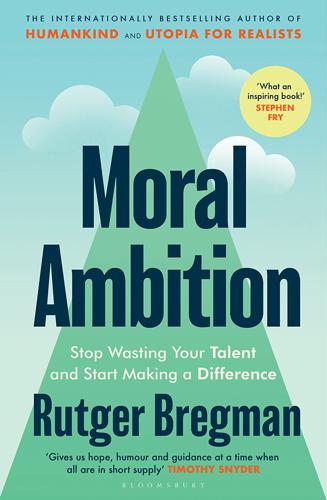
Moral Ambition: Stop Wasting Your Talent and Start Making a Difference
by
Bregman, Rutger
Published 9 Mar 2025
LIX, Issue 236 (October 1950), pp. 433–460. 20 Quoted in: Raffi Khatchadourian, ‘The Doomsday Invention’, New Yorker (23 November 2015). In May 2023, Hinton left Google and joined the ranks of ai critics. See: Cade Metz, ‘“The Godfather of A.I.” Leaves Google and Warns of Danger Ahead’, New York Times (1 May 2023). 21 Michael Specter, ‘In a World of Synthetic Biology, Publishing Virus dna Sequences May Mean Perishing’, Stat (6 April 2023). 22 Kai Kupferschmidt, ‘How Canadian Researchers Reconstituted an Extinct Poxvirus for $100,000 Using Mail-order dna’, ScienceInsider (6 July 2017). 23 Abraar Karan and Stephen Luby, ‘A Natural Pandemic Has Been Terrible: A Synthetic One Would Be Even Worse’, Stat (19 August 2021). 24 Advancing Collective Action and Accountability Amid Global Crisis, Global Health Security Index (December 2021), p. 57.
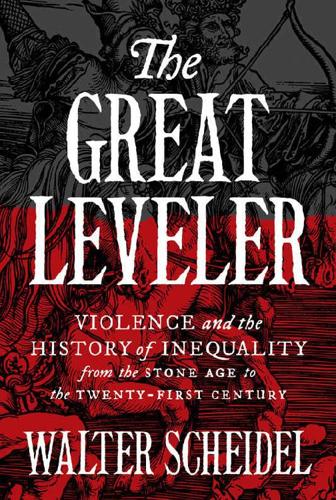
The Great Leveler: Violence and the History of Inequality From the Stone Age to the Twenty-First Century
by
Walter Scheidel
Published 17 Jan 2017
For AI, see most recently Bostrom 2014. 10 Center for Genetics and Society 2015 surveys recent advances in genetic techniques, most notably genomic editing by means of CRISPR/Cas9; see esp. 20–25 on germline modification, and 27–28 on ethics and inequality. Liang et al. 2015 report on human embryo gene editing at a Chinese university, which was largely unsuccessful. See also Church and Regis 2014 for the potential of synthetic biology. Harari 2015 makes valuable points about the limits of political constraints. Bostrom 2003 considers the equality outcomes of genetic modifications, while Harris 2010 is sanguine about their ethics and desirability. Speciation: Silver 1997. 11 This is a florilegium of the ideas put forward in OECD 2011: 40–41; Bowles 2012a: 72, 98–99, 157, 161; Noah 2012: 179–195; Bivens and Mishel 2013: 73–74; Corak 2013: 95–97; Stiglitz 2013: 336–363; Piketty 2014: 515–539, 542–544; Blume and Durlauf 2015: 766; Bourguignon 2015: 160–161, 167–175; Collins and Hoxie 2015: 9–15; Kanbur 2015: 1873–1876; Ales, Kurnaz, and Sleet 2015; Reich 2015: 183–217; Zucman 2015: 75–101. 12 Income tax: Bourguignon 2015: 163; Piketty 2014: 512–513 (quote: 513), drawing on Piketty, Saez, and Stantcheva 2013.
…
American Economic Review 104: 141–147. Christian, David. 2004. Maps of time: an introduction to Big History. Berkeley: University of California Press. Ch’ü, T’ung-tsu. 1972. Han social structure. Seattle: University of Washington Press. Church, George, and Regis, Ed. 2014. Regenesis: how synthetic biology will reinvent nature and ourselves. New York: Basic Books. Cingano, Federico. 2014. “Trends in income inequality and its impact on economic growth.” OECD Social, Employment and Migration Working Papers No. 163. Cioffi-Revilla, Claudio, Rogers, J. Daniel, Wilcox, Steven P., and Alterman, Jai. 2011.
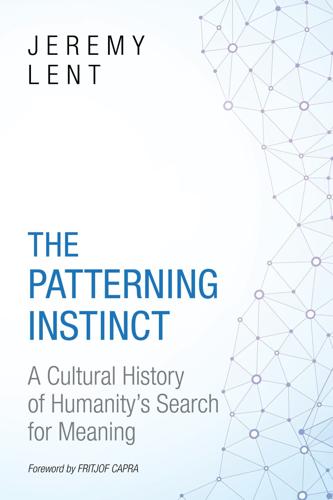
The Patterning Instinct: A Cultural History of Humanity's Search for Meaning
by
Jeremy Lent
Published 22 May 2017
New metaphors have the power to create a new reality.” When, for example, European thinkers began to conceive of the natural world as a complex machine, this inspired them to discover how the machine worked in order to manipulate it more effectively for their benefit, leading ultimately to our present era of genetic engineering and synthetic biology.17 Making Sense of Complexity These reciprocal feedback loops are not just complicated—they're also complex. In everyday language, we tend to use these two words interchangeably, but, in the world of systems theory, they're very different. A system can be complicated but not complex, no matter how large, if each of its components and the way they relate to each other can be completely analyzed and given an exact description.
…
The rise of the internet has caused the rapid flow of information around the world to be nearly seamless, while our civilization has developed global institutions such as the United Nations––limited as they sometimes appear––and has witnessed the rise of other nongovernmental organizations with worldwide reach.6 There's widespread agreement on another crucial driver of our future: the breathtaking rate of change in many powerful and converging technologies. Innovations in fields such as synthetic biology, artificial intelligence, genetic engineering, and nanotechnology catalyze each other to create ever more opportunities for further breakthroughs, offering potential for dramatic transformation in virtually every aspect of human experience.7 All this leads to a general consensus that, no matter what shape the future takes, it will be fundamentally different from anything we've known in the past.

The Autonomous Revolution: Reclaiming the Future We’ve Sold to Machines
by
William Davidow
and
Michael Malone
Published 18 Feb 2020
But suppose we chose instead to measure middle-class incomes in terms of the quantity and quality of services we could purchase. From that perspective, we would be celebrating the effects of non-monetizable productivity. Suppose that the cost of education, health care, entertainment, transportation (because of autonomous vehicles), and food (produced by synthetic biology) all declined dramatically by a factor of 2. In that scenario, how much would we notice if our incomes decreased by 25 percent? One deeply concerning issue with phase change is that people will evaluate the future using the perceptions and values of the past. In that case, their intuition will fail them.

Blitzscaling: The Lightning-Fast Path to Building Massively Valuable Companies
by
Reid Hoffman
and
Chris Yeh
Published 14 Apr 2018
Social media should be more transparent about who is paying for advertisements, and should require the same standards for truth in advertising as any other medium. On the other hand, there are technologies emerging from blitzscaling companies that could pose real, systemic problems (yet get far less media attention). Synthetic biology, driven by CRISPR-Cas9 targeted genome editing, has the potential to produce huge benefits in medicine and agribusiness, but brings with it the systemic risk of bad actors engineering a deadly global pandemic. Changes and developments in this field have occurred so quickly that it is difficult for governments to create intelligent regulatory regimes to manage these risks.

Supertall: How the World's Tallest Buildings Are Reshaping Our Cities and Our Lives
by
Stefan Al
Published 11 Apr 2022
These thin polystyrene particles bridge micro cracks into the concrete, allowing the material to absorb energy and increase its tolerance to damage, which is useful in high seismic areas. Unfortunately, it has an initial cost up to four times higher than traditional concrete. These technological frontiers, ranging from nanotechnology to synthetic biology, could suggest exciting new ways to avoid the problems with modern concrete. But it’s still hard to top Portland cement, which has been in use for two centuries, despite its high environmental costs. The construction industry tends to lag behind other industries in terms of innovation. Restrictive building codes, conventional building practices, and general risk aversion lead to slow adoption of new technology.
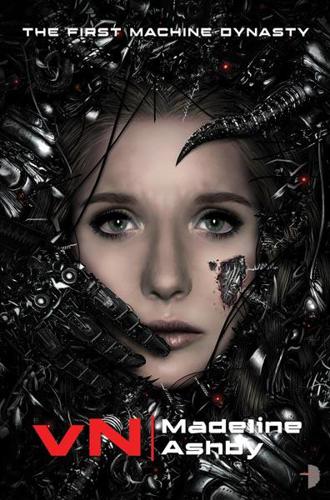
vN: The First Machine Dynasty (The Machine Dynasty Book 1)
by
Madeline Ashby
Published 28 Jul 2012
She had explained to Mrs Pratt about parthenogenesis, and Mrs Pratt had thanked her for that, and then at the end of the day she'd asked Amy not to do that any more, because it was confusing the human kids. "Do what?" Amy had asked. "Know things?" Ironically, she found herself listening to a very similar explanation from Dr Singh, one of several humans on the DARPA task force assigned to her and the other vN with her face. His PhD was in synthetic biology. He had obtained it from the University of Washington, and his dissertation was on replicating the parthenogenetic traits of queen bees. He had interned here at Redmond during that time, and had completed major research in the Redmond labs. He had strong ties to this place and its ethics. He had even met LeMarque, once.
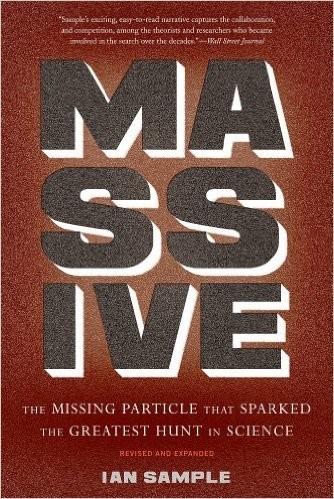
Massive: The Missing Particle That Sparked the Greatest Hunt in Science
by
Ian Sample
Published 1 Jan 2010
Comparisons between such basic polls and more scientific ones show that the results they produce can differ by tens of percentage points.14 Peter Higgs, for one, thought the whole idea of colliders destroying the world was nonsense. One problem that continues to plague discussions over the safety of particle colliders—though the issue is relevant to other areas of cutting-edge science as well, such as synthetic biology and genetics—is that it is nearly impossible to have an objective and informed public debate on the issue. The people who understand the concerns best are those who work in the field under debate—particle physics—so the accusation of vested interests cannot be avoided. Ironically, the most high-profile opponents to a new technology are often so badly informed that they are quickly dismissed as crackpots, and rightly so.

No Ordinary Disruption: The Four Global Forces Breaking All the Trends
by
Richard Dobbs
and
James Manyika
Published 12 May 2015
More than 90 percent of eBay commercial sellers export to other countries, compared with an average of less than 25 percent of traditional small businesses.28 12 The Disruptive Dozen Twelve technologies have massive potential for disruption in the coming decade CHANGING THE BUILDING BLOCKS OF EVERYTHING 1.Next-generation genomics Fast, low-cost gene sequencing, advanced big data analytics, and synthetic biology (“writing” DNA) 2.Advanced materials Materials designed to have superior characteristics (e.g., strength, weight, conductivity) or functionality RETHINKING ENERGY COMES OF AGE 3.Energy storage Devices or systems that store energy for later use, including batteries 4.Advanced oil and gas exploration and recovery Exploration and recovery techniques that make extraction of unconventional oil and gas economical 5.Renewable energy Generation of electricity from renewable sources with reduced harmful climate impact MACHINES WORKING FOR US 6.Advanced robotics Increasingly capable robots with enhanced senses, dexterity, and intelligence used to automate tasks or augment humans 7.Autonomous and near-autonomous vehicles Vehicles that can navigate and operate with reduced or no human intervention 8.3-D printing Additive manufacturing techniques to create objects by printing layers of material based on digital models IT AND HOW WE USE IT 9.Mobile Internet Increasingly inexpensive and capable mobile computing devices and Internet connectivity 10.Internet of things Networks of low-cost sensors and actuators for data collection, monitoring, decision making, and process optimization 11.Cloud technology Use of computer hardware and software resources delivered over a network or the Internet, often as a service 12.Automation of knowledge work Intelligent software systems that can perform knowledge work tasks involving unstructured commands and subtle judgments The data avalanche is set to become more powerful only because of a movement toward “open data,” in which data are freely shared beyond their originating organizations—including governments and businesses—in a machine-readable format at low cost.
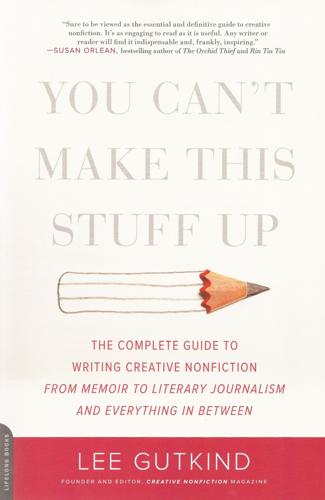
You Can't Make This Stuff Up: The Complete Guide to Writing Creative Nonfiction--From Memoir to Literary Journalism and Everything in Between
by
Lee Gutkind
Published 13 Aug 2012
Behind them, and out of Rejeski’s sight, about a half dozen rows of chairs were slowly filling up with members of the public. He didn’t need a good view to know that these probably weren’t teachers or electricians or firemen who just happened to have a personal fascination with genetics; instead, the audience was made up of a small and very specific set of people with a vested interest (money, mostly) in synthetic biology . . . . . . He was the first speaker of the day, and he began simply enough. “Let me start,” he opened, “by saying that we have devoted about six years of our time . . . trying to bring the voice, or voices, of the public into the conversation about science policy on emerging technologies.” If you weren’t paying attention, you might have missed his next sentence, delivered almost as a throwaway as he searched on the table for the clicker he would need to control the rest of his presentation.

Possible Minds: Twenty-Five Ways of Looking at AI
by
John Brockman
Published 19 Feb 2019
They are lessons to bear in mind, even if algorists dream of objectivity. Chapter 23 THE RIGHTS OF MACHINES GEORGE M. CHURCH George M. Church is Robert Winthrop Professor of Genetics at Harvard Medical School, Professor of Health Sciences and Technology at Harvard-MIT, and co-author (with Ed Regis) of Regenesis: How Synthetic Biology Will Reinvent Nature and Ourselves. In the past decade, genetic engineering has caught up with computer science with regard to how new scientific initiatives are shaping our lives. Genetic engineer George Church, a pioneer of the revolution in reading and writing biology, is central to this new landscape of ideas.

Free culture: how big media uses technology and the law to lock down culture and control creativity
by
Lawrence Lessig
Published 15 Nov 2004
The public domain is as vital to innovation and culture as the realm of material protected by intellectual property rights, he asserts, and he calls for a movement akin to the environmental movement to preserve it. With a clear analysis of issues ranging from Jefferson’s philosophy of innovation to musical sampling, synthetic biology and Internet file sharing, this timely book brings a positive new perspective to important cultural and legal debates. If we continue to enclose the “commons of the mind,” Boyle argues, we will all be the poorer. Publius The Federalist Papers The Federalist Papers are a series of 85 articles advocating the ratification of the United States Constitution.
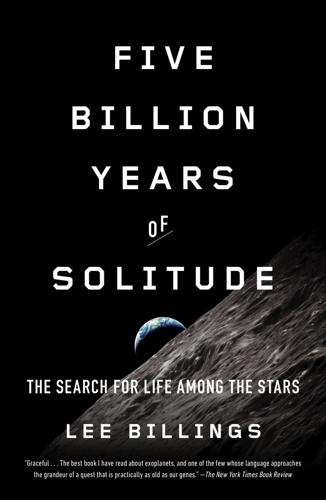
Five Billion Years of Solitude: The Search for Life Among the Stars
by
Lee Billings
Published 2 Oct 2013
On Earth, the high technology developed during the first half of the twentieth century had in the second half spread from developed countries to colonize the entire globe. After harnessing the power of the atomic nucleus, science had turned to the machinery within the nuclei of living cells, bringing forth what promised to be a transformative era of synthetic biology. The world’s human population had more than doubled, driven by bioengineered boosts in agricultural productivity, breakthroughs in medicine, and a host of other science-fueled increases in living standards. Simultaneously, extinction rates of natural species had soared due to environmental disruption and habitat destruction.
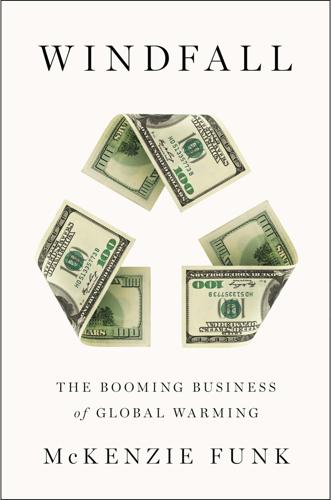
Windfall: The Booming Business of Global Warming
by
Mckenzie Funk
Published 22 Jan 2014
It is Oxitec, not Monsanto, that may be the true harbinger: Scientists are warming up to the idea of modifying bacteria and wild animals—not just crops—to adapt to the new climatic reality. In 2012, a study by NYU professor S. Matthew Liao proposed reengineering humans themselves to produce smaller, less resource-hungry, less emissions-intensive offspring. Months later, the first conferences on using “de-extinction” and “synthetic biology” to preserve the natural world were convened by the National Geographic Society and Wildlife Conservation Society. The Sahel need not become the Sahara if we can create a GM bacteria that induces plants’ roots to grow. The polar bear need not ever go extinct. We can already manipulate stem cells.
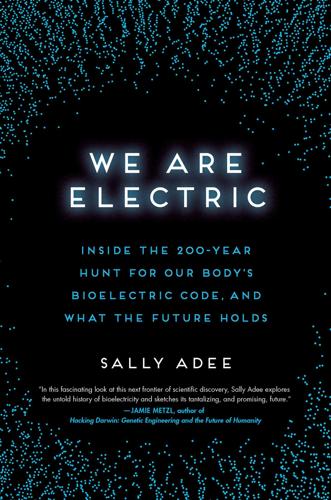
We Are Electric: Inside the 200-Year Hunt for Our Body's Bioelectric Code, and What the Future Holds
by
Sally Adee
Published 27 Feb 2023
It seemed like a fairly straightforward, linear progression: the more neurons you could manipulate, the more precisely you could write the neural code; the more precisely you could write the neural code, the more powerful the brain interface. Therefore, if you want to read and write more neurons, just add electrodes. However, one does not simply “add” more electrodes (see Chapter 9 for more on this). Not long after Kernel snapped up Berger, Johnson convinced Adam Marblestone to leave his post at MIT’s Synthetic Biology lab to become the company’s chief strategy officer. But when he began to review Berger’s work and Kernel’s goals, Marblestone and his colleagues saw a potential problem. First, Berger was working with a device that had a total of sixteen electrodes, far less than even a Utah array. Second, saying the algorithm had restored memory might have been an overly generous interpretation of the experiment, as the tasks were both narrow and basic.
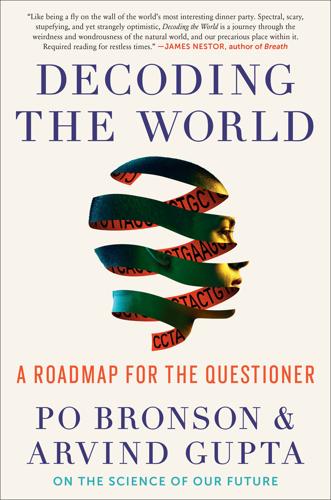
Decoding the World: A Roadmap for the Questioner
by
Po Bronson
Published 14 Jul 2020
Alex and Nick did their PhDs at Princeton, with Alex earning an MD at the same time. They were studying E. coli reproduction when they realized they could arrest cell division at a critical point and convert the cell’s energy to make a protein. This would dramatically improve the productivity of synthetic biology. The only question was what protein to make. I was seduced by the potential of these zombified prokaryotes and thought about how many cow noses it takes to make eye cream and other products. I thought about all the cow noses and hooves that could be spared by making collagen in the lab. The power of biology as a technology began to dawn on me like the sunrise on a planet new to sunlight.

A New History of the Future in 100 Objects: A Fiction
by
Adrian Hon
Published 5 Oct 2020
The majority, however, were kept in thousands of square kilometers of ponds situated close to carbon dioxide sources like coal plants. Ponds full of increasingly expensive and scarce water. At the same time, algal oil struggled to compete with more reliable sources of energy, such as natural gas. What ultimately saved it from obscurity was not a single person or company or government; it was a community. The cost of synthetic biology and biofabricators (biofabs) was plummeting, putting the ability to genetically engineer organisms into the hands of thousands of curious experimenters. Algal oil production held a strong appeal due to its real-world applications and the challenge of tailoring strains specific to particular environments around the globe.

Supremacy: AI, ChatGPT, and the Race That Will Change the World
by
Parmy Olson
For start-up founders, “YC” was now seen as a gateway to success in the Valley. Thousands of tech founders applied and only about one hundred got through each year. For the rest of Altman’s self-imposed gap year, he dabbled in his wide array of interests, reading dozens of books about everything from nuclear engineering to synthetic biology and from investing to artificial intelligence. He traveled to other countries and stayed in hostels, flew to conferences and invested in several start-ups with some of the roughly $5 million he’d made from selling Loopt. He would admit publicly that nearly all the companies he backed failed, but he figured he was training a muscle for identifying the projects that were most likely to succeed.

The Stack: On Software and Sovereignty
by
Benjamin H. Bratton
Published 19 Feb 2016
This hyperilluminated medicine would surely show that causality and pathology zigzag from microbe to bioregions and back again in utterly surprising ways, and that today's folk conceptions of organ, body, group, and toxin demand more rational recategorizations (and Addresses), likely ones that will appear as self-evident when revealed but that today we can scarcely anticipate.28 In parallel, the various technologies and concepts gathered under the rubric of synthetic biology can engage this absolutized commons as an open-ended toolkit for biological refashioning (if it is actually held in common) and in doing so bring its own controversies and contradictions. Further, in the institutional transference of tracking, diagnosis, and treatment expertise toward the tracing of super- and subindividual forces by computational infrastructures, and away from the one-on-one observation and interviewing of individual persons, the necessary role and proficiencies of “doctors” would evolve as well.
…
This also relates to what Heidegger once called our “confrontation with planetary technology” (an encounter that he never managed to actually make and which most Heideggerians manage to endlessly defer, or “differ”).15 That encounter should be motivated by an invested interest in several “planetary technologies” working at various scales of matter, and based on, in many respects, what cheap supercomputing, broadband networking, and isomorphic data management methodologies make possible to research and application. These include—but are no means limited to—geology (e.g., geochemistry, geophysics, oceanography, glaciology), earth sciences (e.g., focusing on the atmosphere, lithospere, biosphere, hydrosphere), as well as the various programs of biotechnology (e.g., bioinformatics, synthetic biology, cell therapy), of nanotechnology (e.g., materials, machines, medicines), of economics (e.g., modeling price, output cycles, disincentivized externalities), of neuroscience (e.g., behavioral, cognitive, clinical), and of astronomy (e.g., astrobiology, extragalactic imaging, cosmology). In that all of these are methodologically and even epistemologically informed by computer science (e.g., algorithmic modeling, macrosensors and microsensors, data structure optimization, information theory, data visualization, cryptography, networked collaboration), then all of these planetary technologies are also planetary computational technologies.

Enlightenment Now: The Case for Reason, Science, Humanism, and Progress
by
Steven Pinker
Published 13 Feb 2018
It may be more than just luck that the world so far has seen just one successful bioterror attack (the 1984 tainting of salad with salmonella in an Oregon town by the Rajneeshee religious cult, which killed no one) and one spree killing (the 2001 anthrax mailings, which killed five).60 To be sure, advances in synthetic biology, such as the gene-editing technique CRISPR-Cas9, make it easier to tinker with organisms, including pathogens. But it’s difficult to re-engineer a complex evolved trait by inserting a gene or two, since the effects of any gene are intertwined with the rest of the organism’s genome. Ewald notes, “I don’t think that we are close to understanding how to insert combinations of genetic variants in any given pathogen that act in concert to generate high transmissibility and stably high virulence for humans.”61 The biotech expert Robert Carlson adds that “one of the problems with building any flu virus is that you need to keep your production system (cells or eggs) alive long enough to make a useful quantity of something that is trying to kill that production system. . . .
…
A better-educated and connected world cares more about the environment, indulges fewer autocrats, and starts fewer wars. The technological advances that have propelled this progress should only gather speed. Stein’s Law continues to obey Davies’s Corollary (Things that can’t go on forever can go on much longer than you think), and genomics, synthetic biology, neuroscience, artificial intelligence, materials science, data science, and evidence-based policy analysis are flourishing. We know that infectious diseases can be extinguished, and many are slated for the past tense. Chronic and degenerative diseases are more recalcitrant, but incremental progress in many (such as cancer) has been accelerating, and breakthroughs in others (such as Alzheimer’s) are likely.

Growth: From Microorganisms to Megacities
by
Vaclav Smil
Published 23 Sep 2019
This is, of course, in contradistinction to many recent ahistoric forecasts and claims that ignore long-term trajectories of growth (that is, the requisite energetic and material needs of unprecedented scaling processes) and invoke the fashionable mantra of disruptive innovation that will change the world at accelerating speed. Such examples abound, ranging from all of the world’s entire car fleet (of more than 1 billion vehicles) becoming electric by 2025 to terraforming Mars starting in the year 2022, from designer plants and animals (synthetic biology rules) making the strictures of organismic evolution irrelevant to anticipations of artificial intelligence’s imminent takeover of our civilization. This book makes no radical claims of that kind; in fact it avoids making any but strongly justified generalizations. This is a deliberate decision resting on my respect for complex and unruly realities (and irregularities) and on the well-attested fact that grand predictions turn out to be, repeatedly, wrong.
…
Alternatively, Taagepera (2014) proposed a model of the Earth’s carrying capacity and technological-organizational skills in order to project the millennial trend toward a stable population of 10 billion people by 2100. And looking further ahead, some of the constraining factors can become significantly more relaxed. Genetic modification of crops and animals, and eventually their de novo design (synthetic biology), could result in substantial productivity increases per unit of land. Fishing is being already replaced by aquaculture. Future advances in large-scale electricity storage might allow us to rely on intermittent energy flows (wind, solar) even for high base-load demand. Obviously, any calculation of the maximum global population—be it delimited in terms of carrying or regenerative capacity—depends on serial assumptions concerning the level of prevailing comfort and typical consumption and on a civilization’s longevity: even modest demands might turn out to be excessive over the very long term, but rational adjustments and new scientific breakthroughs might relax the constraint boundaries.

Augmented: Life in the Smart Lane
by
Brett King
Published 5 May 2016
In the Mars trilogy by Kim Stanley Robinson, the author proposed splicing animal genes into the DNA of the Mars colonists as part of a regular process of getting longevity treatments (which in themselves were corrective gene therapy editing out replication errors in genetic code and restoring telomeres). One of the characters added a cat-derived “purr” to her biology. Another trend theorised was the addition of crocodile haemoglobin to grant CO2 tolerance for a partially terraformed red planet that was still poor in oxygen. Advances in synthetic biology will likely result in production facilities making novel treatments and diagnostics agents. Advances in regenerative medicine almost certainly will parallel these developments in diagnostic and treatment protocols. For example, replacement organs, such as kidneys and livers, could be developed by 2030. 3D Bioprinting As discussed in chapter 2, 3D printers have the potential for some incredible applications in the way we manufacture products, even at home, in the future.

Is the Internet Changing the Way You Think?: The Net's Impact on Our Minds and Future
by
John Brockman
Published 18 Jan 2011
The Internet has vastly increased the size of the problem set about humanity’s future. Some problems now look really puny. They probably always were. Who does the thinking has changed, too. When knowledge is everywhere, so are the thinkers. A Miracle and a Curse Ed Regis Science writer; author, What Is Life?: Investigating the Nature of Life in the Age of Synthetic Biology The Internet is not changing the way I think (nor, as far as I know, the way anyone else thinks). To state the matter somewhat naïvely, I continue to think the same way I always thought: by using my brain and my five (or six) senses and considering the relevant available information. I mean, how else can you think?
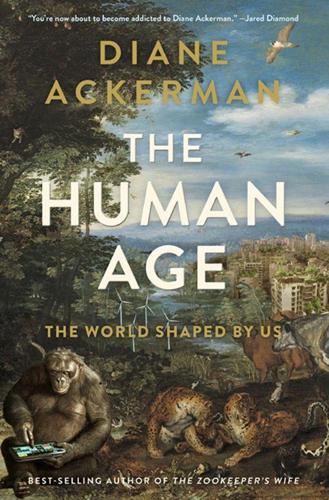
The Human Age: The World Shaped by Us
by
Diane Ackerman
Published 9 Sep 2014
The Shallows: What the Internet is Doing to Our Brains. New York: W. W. Norton, 2011. Chaline, Eric. Fifty Machines That Changed the Course of History. Buffalo, NY: Firefly, 2012. Chamovitz, Daniel. What a Plant Knows: A Field Guide to the Senses. New York: Farrar, Straus and Giroux, 2012. Church, George, and Ed Regis. Regenesis: How Synthetic Biology Will Reinvent Nature and Ourselves. New York: Basic Books, 2012. Cipolla, Carlo M. Before the Industrial Revolution: European Society and Economy, 1000–1700. 3rd ed. New York: W. W. Norton, 1994. Clark, Andy. Natural-Born Cyborgs: Minds, Technologies, and the Future of Human Intelligence. New York: Oxford University Press, 2003.

This Will Make You Smarter: 150 New Scientific Concepts to Improve Your Thinking
by
John Brockman
Published 14 Feb 2012
Such routinely transgenic microbes show that there’s nothing new, special, or dangerous about engineered GM crops. Field biologists are realizing that the biosphere is looking like what some are calling a pangenome, an interconnected network of continuously circulated genes that is a superset of all the genes in all the strains of a species that form. Bioengineers in the new field of synthetic biology are working directly with the conveniently fungible genes of microbes. This biotech century will be microbe-enhanced and maybe microbe-inspired. Social Darwinism turned out to be a bankrupt idea. The term “cultural evolution” never meant much, because the fluidity of memes and influences in society bears no relation to the turgid conservatism of standard Darwinian evolution.
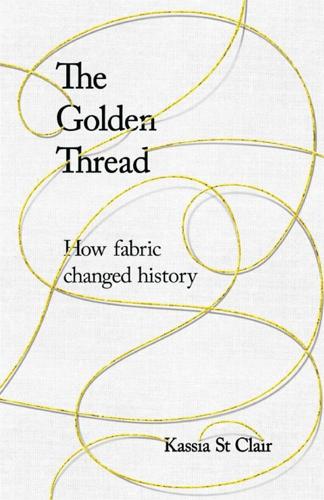
The Golden Thread: How Fabric Changed History
by
Kassia St Clair
Published 3 Oct 2018
Wins Final with Penalty Kicks’, New York Times, 11 July 1999, section Sport, pp. 1, 6 Vedeler, Marianne, Silk for the Vikings, Ancient Textiles Series, 15 (Oxford: Oxbow Books, 2014) Venable, Shannon L., Gold: A Cultural Encyclopedia (Santa Barbara: ABC-Clio, 2011) Vickery, Amanda, Behind Closed Doors: At Home in Georgian England (Yale: Yale University Press, 2009) ———, ‘His and Hers: Gender Consumption and Household Accounting in Eighteenth-Century England’, Past & Present, 1 (2006), 12–38 Vigliani, Enrico C., ‘Carbon Disulphide Poisoning in Viscose Rayon Factories’, British Journal of Industrial Medicine, 11 (1954), 235–44 ‘Viking Ship Is Here, The’, New York Times (New York, 14 June 1893), p. 1 ‘Viking Ship Sails, The’, New York Times, (New York, 2 May 1893), p. 11 Vogt, Yngve, ‘Norwegian Vikings Purchased Silk from Persia’, Apollon, 2013 <https://www.apollon.uio.no/english/vikings.html> [accessed 31 July 2017] Vollrath, Fritz, ‘Follow-up Queries’, 14 February 2017 ———, ‘The Complexity of Silk under the Spotlight of Synthetic Biology’, Biochemical Society Transactions, 44 (2016), 1151–7 <https://doi.org/10.1042/BST20160058> Vollrath, Fritz, and Selden, Paul, ‘The Role of Behavior in the Evolution of Spiders, Silks, and Webs’, Annual Review of Ecology, Evolution, and Systematics, 38 (2007), 819–46 Vollrath, Fritz, Zoology Professor, University of Oxford, Skype interview with author, February 2017 W Wade, Nicholas, ‘Why Humans and Their Fur Parted Ways’, New York Times, 19 August 2003, section News, p.

The AI Economy: Work, Wealth and Welfare in the Robot Age
by
Roger Bootle
Published 4 Sep 2019
Already many humans have some sort of “artificial” (i.e., nonbiological) part inserted into their bodies – from artificial hips to pacemakers. As I mentioned in the Prologue, some visionaries see humans and AI ultimately fusing together. And the traffic won’t be all one way, that is, artificial into human. According to John Brockman, what he calls designed intelligence “will increasingly rely on synthetic biology and organic fabrication.” 8 Might we also be able to extend our own life spans by overcoming the limitations that our fleshly bodies place upon ourselves? That is to say, might technology provide the way to eternal life? Some IT enthusiasts think so.9 Ray Kurzweil believes that humans will inevitably merge with machines.

Stakeholder Capitalism: A Global Economy That Works for Progress, People and Planet
by
Klaus Schwab
Published 7 Jan 2021
Impressive progress has been made in AI in recent years, driven by exponential increases in computing power and by the availability of vast amounts of data, from software used to discover new drugs to algorithms used to predict our cultural interests. Digital fabrication technologies, meanwhile, are interacting with the biological world on a daily basis. Engineers, designers, and architects are combining computational design, additive manufacturing, materials engineering, and synthetic biology to pioneer a symbiosis between microorganisms, our bodies, the products we consume, and even the buildings we inhabit.58 The technologies of the Fourth Industrial Revolution once again have the possibility to greatly enhance global wealth. That is because they are likely to turn into general-purpose technologies (GPTs) such as electricity and the internal combustion engine before them.

Stakeholder Capitalism: A Global Economy That Works for Progress, People and Planet
by
Klaus Schwab
and
Peter Vanham
Published 27 Jan 2021
Impressive progress has been made in AI in recent years, driven by exponential increases in computing power and by the availability of vast amounts of data, from software used to discover new drugs to algorithms used to predict our cultural interests. Digital fabrication technologies, meanwhile, are interacting with the biological world on a daily basis. Engineers, designers, and architects are combining computational design, additive manufacturing, materials engineering, and synthetic biology to pioneer a symbiosis between microorganisms, our bodies, the products we consume, and even the buildings we inhabit.58 The technologies of the Fourth Industrial Revolution once again have the possibility to greatly enhance global wealth. That is because they are likely to turn into general-purpose technologies (GPTs) such as electricity and the internal combustion engine before them.
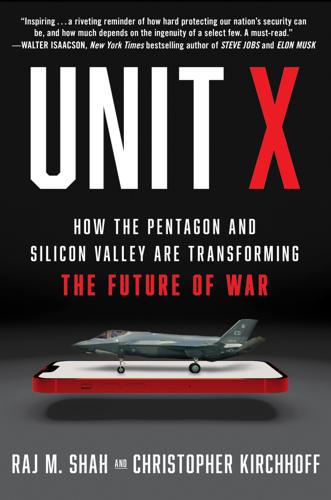
Unit X: How the Pentagon and Silicon Valley Are Transforming the Future of War
by
Raj M. Shah
and
Christopher Kirchhoff
Published 8 Jul 2024
For years Xi had published plans outlining exactly how China would win the technology race with the United States. China hands across D.C. could reel them off from memory: the “Made in China 2025” plan, the “AI Global Leader by 2030” plan, the plan to dominate global standard-setting bodies by 2035. AI, next-generation networks, semiconductors, advanced manufacturing, synthetic biology, biopharmaceuticals, quantum computing, fusion energy—China had a plan for each. The U.S. had no plan at all. China was putting serious money behind their strategy—increasing R&D spending thirtyfold between 1991 and 2015. While the dollar amounts were still modest by global standards, when adjusted for purchasing power—investments in China go twice as far—China was in fact spending 88 percent of what the U.S. was on R&D.
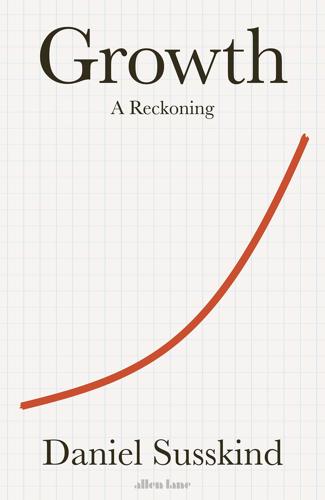
Growth: A Reckoning
by
Daniel Susskind
Published 16 Apr 2024
There are clashes about where to spend it: in the UK, for example, some want more R&D funding to go to the innovation establishment in Oxford and Cambridge, while others dismiss that as elitist and hope to nurture new clusters outside the southeast of England. There are arguments about what to spend it on: should we use this money to further our understanding of the technologies of the moment, like AI and semi-conductors, or explore something more adventurous and unproven, like synthetic biology, deep-sea mining or hydrogen fuel?42 And then there are tensions over who should provide the money in the first place: the state, private companies or a blend that falls in between. In the world of R&D, there are many other more granular disagreements like this. But it is important to remember that while these debates about the best ways to conduct R&D are valuable, the priority is the general rule of thumb from before: more R&D.

In Our Own Image: Savior or Destroyer? The History and Future of Artificial Intelligence
by
George Zarkadakis
Published 7 Mar 2016
By reshuffling the pieces of base pairs and putting them in different sequences biologists ‘recombine’ DNA molecules. This means that, given the basic parts (the A-T and G-C pairs), one can synthesise the DNA of any organism, if one knows the genome of that organism. Indeed, one can put together completely new organisms, in what is called ‘synthetic biology’. DNA printing makes synthesising DNA easy and cheap to do by having a laser work on the bases and quickly arrive at the desired sequence.15 What is particularly interesting about techniques such as DNA printing is that the correct sequence is a piece of information that can be transmitted and processed just like any digital piece of information.
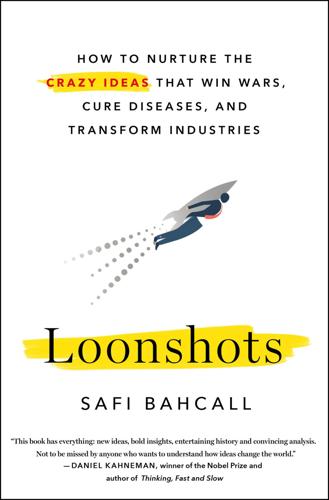
Loonshots: How to Nurture the Crazy Ideas That Win Wars, Cure Diseases, and Transform Industries
by
Safi Bahcall
Published 19 Mar 2019
Let’s see how a two-million-person organization created a loonshot group whose record of radical innovation may be unmatched by any other organization of the past half century. 8 The Fourth Rule Raise the magic number Since 1958, one two-hundred-person research group, deep inside a massive organization, has spun out the internet, GPS, carbon nanotubes, synthetic biology, pilotless aircraft (drones), mechanical elephants, the Siri assistant in iPhones, and more. Its alumni have led, or its management principles have inspired, many of the most legendary research organizations across the United States, including nearly every example mentioned in this book. Those management principles are examples—some are extreme examples—of adjusting the parameters described in the previous chapter to raise the magic number.
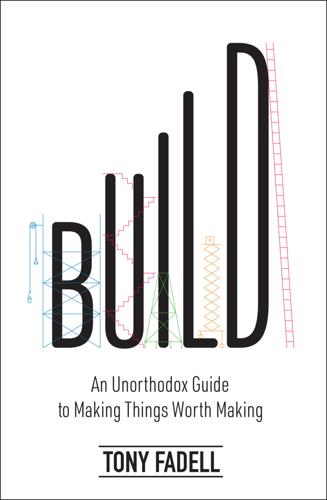
Build: An Unorthodox Guide to Making Things Worth Making
by
Tony Fadell
Published 2 May 2022
You have to love the job. But what happens if you fall in love with the wrong thing? If you find a product or company that’s too early—the supporting infrastructure isn’t there, the customers don’t exist, the leadership has a crazy vision and won’t budge. What if you’re deeply passionate about quantum computing or synthetic biology or fusion energy or space exploration even though there’s no sign that any of those industries will bear fruit anytime soon? Then screw it. Go for it. If you love it, don’t worry about all my advice, don’t worry about the timing. I spent the dot-com bubble building handheld devices. After General Magic started floundering, the obvious solution was to jump ship to Yahoo or eBay and join the internet gold rush.

Destined for War: America, China, and Thucydides's Trap
by
Graham Allison
Published 29 May 2017
The driving technological development of the second half of the twentieth century was the integration of engineering and physics that produced everything from the computer chip and the Internet to the nuclear bomb. Its analogue in the twenty-first century is the integration of engineering with genomics and synthetic biology, which has given us not only miracle drugs that target specific cancers, but also biological weapons that could be used by a single rogue scientist to kill hundreds of thousands of people.23 Nature itself offered a preview of this danger in the SARS epidemic of 2003 and the Ebola plague in Africa in 2014.

The Patient Will See You Now: The Future of Medicine Is in Your Hands
by
Eric Topol
Published 6 Jan 2015
Venter and colleagues have already demonstrated the capability to rapidly create synthetic influenza vaccine matched for the causative strain (Figure 14.10), the code that can, at least theoretically, be electronically dispersed in real time anywhere on the planet for a primary pandemic response system.44 Of course, influenza is just representative of a large number of microorganisms that could be similarly approached with this strategy. This certainly represents one of the most exciting near-term opportunities of synthetic biology, and exemplifies the fusion of the digital and biological information domains to improve medicine. FIGURE 14.9: Antibiotic randomized trial in severe, acute malnutrition management. Source: I. Trehan, “Antibiotics as Part of the Management of Severe Acute Malnutrition,” New England Journal of Medicine 368 (2013): 425–435.

Physics of the Future: How Science Will Shape Human Destiny and Our Daily Lives by the Year 2100
by
Michio Kaku
Published 15 Mar 2011
Craig Venter, quoted in Oil and the Future of Energy: Climate Repair, Hydrogen, Nuclear Fuel, Renewable and Green Sources, Energy Efficiency, editors of Scientific American (Guilford, Conn.: Lyons Press, 2007), pp. 220–21. From Venter’s presentation “Synthetic Genomics” at the Conference on Synthetic Biology (SB2.0), Berkeley, California, May 20, 2006. Audio available at http://webcast.berkeley.edu/event_details.php?webcastid=15766. 16 “carbon bank”: Freeman J. Dyson, “Can We Control the Carbon Dioxide in the Atmosphere?” Energy 2 (1977): pp. 287–91. 17 An 8-ounce glass of water is equal to: Sheffield, p. 158. 18 “I know what the other material is”: Ralph Lapp, quoted in “Perón’s Atom,” Time, April 2, 1951, www.time.com/time/magazine/article/0,9171,814503,00.html. 19 “Less than that”: Seife, p. 76. 20 “Even if the plant were flattened”: W.
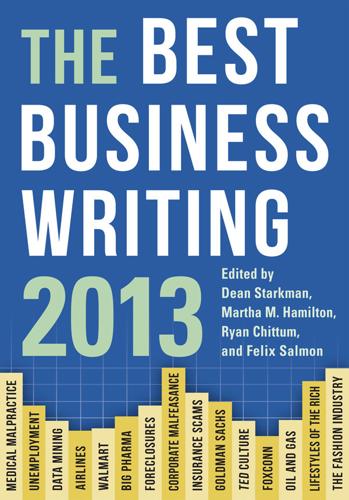
The Best Business Writing 2013
by
Dean Starkman
Published 1 Jan 2013
Parag Khanna’s writings on geopolitics never amounted to much of anything even before his turn to technology, but it is instructive to see how his presentation has changed now that he has embedded himself in the TED firmament. Save for a hackneyed nod to the “world’s chessboard,” he now makes only cursory references to power structures and strategic alliances. Instead he strikes all the right chords to elicit approval from the TED crowd—musing on genetics, neuroscience, synthetic biology—all in order to inform us that “our ability to augment ourselves” is growing by the minute. As is customary in such discourse, no mention is made of the fact that the Human Genome Project, for all the hype it generated a decade ago, has not accomplished much. Likewise, MRI scans are celebrated as if they offered direct and immediate access to truth.
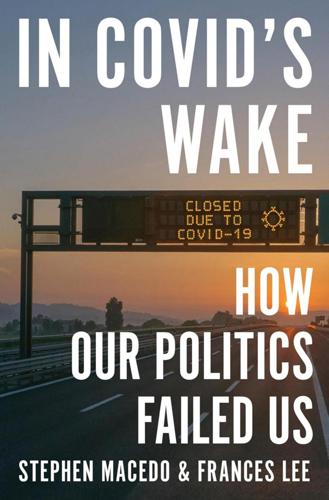
In Covid's Wake: How Our Politics Failed Us
by
Stephen Macedo
and
Frances Lee
Published 10 Mar 2025
Ebright, “Written Testimony,” US Senate Committee on Homeland Security, Subcommittee on Emerging Threats and Spending Oversight, Hearing on “Origins of COVID19: An Examination of Available Evidence,” June 18, 2024, https://www.hsgac.senate.gov/w p -content/uploads/Testimony-Ebright-2024-0 6-18.pdf, 5, citing Sackler Forum 2015: Trends in Synthetic Biology and Gain of Function and Regulatory Implications, September 2016, https://www .nasonline.org/programs/scientific-forum/sackler-forum-2015-report.pdf. 14. Tabak’s reiteration of the NIH’s (and usual) meaning of gain-of-function research can be found in footnote 18, on page 11, of Democratic Staff Report, “Republicans’ Fauci Flop,” H ouse Select Subcommittee on the Coronavirus Pandemic, June 2024, https://oversightdemocrats .house.gov/sites/evo-subsites/democrats-oversight.house.gov/files/evo-media-document /SSCP%20Dr.%20Fauci%20Democratic%20Staff%20Report_FINAL.pdf.

WTF?: What's the Future and Why It's Up to Us
by
Tim O'Reilly
Published 9 Oct 2017
Might we one day be able to fill the blood with nanobots—tiny machines—that repair our cells, relegating the organ and hip replacements of today, marvelous as they are, to a museum of antiquated technology? Or will we achieve that not through a perfection of the machinist’s art but through the next steps in the path trod by Luther Burbank? Amazing work is happening today in synthetic biology and gene engineering. George Church and his colleagues at Harvard are beginning a controversial ten-year project to create from scratch a complete human genome. Ryan Phelan and Stewart Brand’s Revive and Restore project is working to use gene engineering to restore genetic diversity to endangered species, and perhaps one day to bring extinct species back to life.

2312
by
Kim Stanley Robinson
Published 22 May 2012
In these years all the bad trends converged in “perfect storm” fashion, leading to a rise in average global temperature of five K, and sea level rise of five meters—and as a result, in the 2120s, food shortages, mass riots, catastrophic death on all continents, and an immense spike in the extinction rate of other species. Early lunar bases, scientific stations on Mars. The Turnaround: 2130 to 2160. Verteswandel (Shortback’s famous “mutation of values”), followed by revolutions; strong AI; self-replicating factories; terraforming of Mars begun; fusion power; strong synthetic biology; climate modification efforts, including the disastrous Little Ice Age of 2142–54; space elevators on Earth and Mars; fast space propulsion; the space diaspora begun; the Mondragon Accord signed. And thus: The Accelerando: 2160 to 2220. Full application of all the new technological powers, including human longevity increases; terraforming of Mars and subsequent Martian revolution; full diaspora into solar system; hollowing of the terraria; start of the terraforming of Venus; the construction of Terminator; and Mars joining the Mondragon Accord.
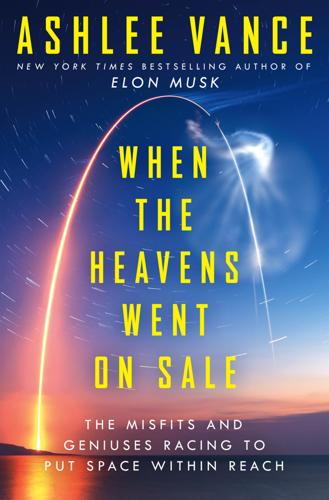
When the Heavens Went on Sale: The Misfits and Geniuses Racing to Put Space Within Reach
by
Ashlee Vance
Published 8 May 2023
The center obviously focused on its near-term space missions and its tradition of helping with the design and testing of aircraft. It also, however, began to align more futuristic work with Worden’s long-held fascination with the human exploration of deep space. Worden set up a series of new research labs at Ames. He created a synthetic biology center that allowed NASA scientists to toy with DNA and see what it might take to send custom microbes and bacteria into space. In conjunction with Google, Ames also built a quantum computing center, hoping to foster breakthroughs in fields such as artificial intelligence. Ames, Worden thought, might one day be able to send smart, self-replicating biological machines to other worlds and have the organisms form their own settlements.

The Singularity Is Nearer: When We Merge with AI
by
Ray Kurzweil
Published 25 Jun 2024
Pirsig, Zen and the Art of Motorcycle Maintenance Promise and Peril So far this book has explored the many ways that the final years until the Singularity will bring rapidly increasing human prosperity. But just as this progress will improve billions of lives, it will also heighten peril for our species. New, destabilizing nuclear weapons, breakthroughs in synthetic biology, and emerging nanotechnologies will all introduce threats we must deal with. And as AI itself reaches and surpasses human capabilities, it will need to be carefully aligned with beneficial purposes and specifically designed to avert accidents and thwart misuse. There is good reason to believe that our civilization will overcome these perils—not because the threats aren’t real, but precisely because the stakes are so high.
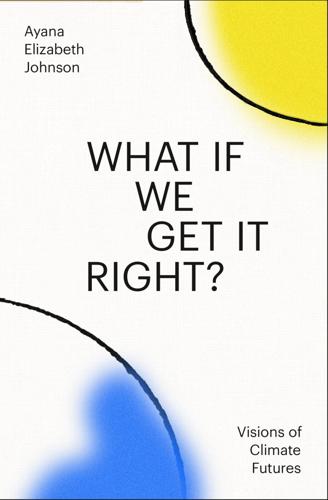
What If We Get It Right?: Visions of Climate Futures
by
Ayana Elizabeth Johnson
Published 17 Sep 2024
Ninety-nine percent of people, whether you disagree with them or not, genuinely think they are on the side of doing good in the world according to their definition of good. People are highly motivated to persuade other people that they are doing good. That’s going to cause a lot of instability because it will mean our ideas and our interests will clash even more than they have done in the past. Likewise with the spread of synthetic biology, it will be possible for smaller and less-well-resourced and less-well-trained groups of individuals to engineer pandemic pathogens, which are way more transmissible and way more lethal than we’ve seen before with COVID or anything else. And so because these tools proliferate, they lower the barrier to entry, which is great because— Ayana: Which is great?!

From eternity to here: the quest for the ultimate theory of time
by
Sean M. Carroll
Published 15 Jan 2010
Journal of Philosophy 59, no. 22 (1962): 658-71. Pynchon, T. Slow Learner. Boston: Back Bay Books, 1984. Randall, L. Warped Passages: Unraveling the Mysteries of the Universe’s Hidden Dimensions. New York: HarperCollins, 2005. Regis, E. What Is Life?: Investigating the Nature of Life in the Age of Synthetic Biology. Oxford: Oxford University Press, 2009. Reichenbach, H. The Direction of Time. Mineola: Dover, 1956. Reichenbach, H. The Philosophy of Space and Time. Mineola: Dover, 1958. Reid, M. J. “Is There a Supermassive Black Hole at the Center of the Milky Way?” (2008). http://arxiv.org/abs/0808.2624.
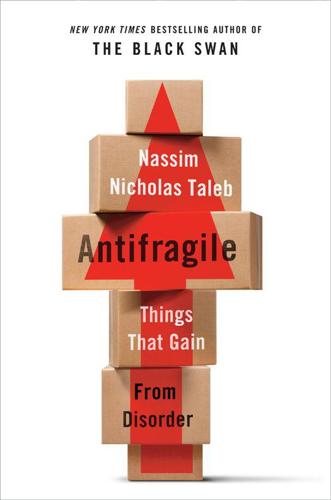
Antifragile: Things That Gain From Disorder
by
Nassim Nicholas Taleb
Published 27 Nov 2012
Reidel Publ. Co. Bechtel, Guy, 1970, Paracelse et la naissance de la médecine alchimique. Culture, Art, Loisirs. Bell, David A., 2001, The Cult of the Nation in France: Inventing Nationalism 1680–1800. Cambridge, Mass.: Harvard University Press. Bennett, G., N. Gilman, et al., 2009, “From Synthetic Biology to Biohacking: Are We Prepared?” Nature Biotechnology 27(12): 1109–1111. Berkun, Scott, 2007, The Myths of Innovation. Sebastol, Calif.: O’Reilly. Berlin, Isaiah, 1990, The Crooked Timber of Humanity. Princeton, N.J.: Princeton University Press. Berns, Thomas, Laurence Blésin, and Gaelle Jeanmart, 2010, Du courage: une histoire philosophique.

Termites of the State: Why Complexity Leads to Inequality
by
Vito Tanzi
Published 28 Dec 2017
These rules are created to deal with current actions and current perceptions of what is proper, legitimate, and necessary. The problem is that it is difficult for specific rules to anticipate future needs and to stipulate specific future actions that may be guided by new and unanticipated circumstances, for example, developments in synthetic biology, in the editing of the human genome, in driverless vehicles, in the use of drones and robots, and in several other areas. Global and technological developments are creating situations that had not been foreseen when the relevant official norms, which may still guide current behavior, were created.

Architects of Intelligence
by
Martin Ford
Published 16 Nov 2018
Kernel is on a mission to dramatically increase our quality of life as healthy lifespans extend. He believes that the future of humanity will be defined by the combination of human and artificial intelligence (HI+AI). In 2014, Bryan invested $100M to start OS Fund, which invests in entrepreneurs commercializing breakthrough discoveries in genomics, synthetic biology, artificial intelligence, precision automation, and the development of new materials. In 2007, Bryan founded Braintree (and acquired Venmo), which he sold to PayPal in 2013 for $800M. Bryan is an outdoor-adventure enthusiast, pilot, and the author of a children’s book, Code 7. Chapter 25.
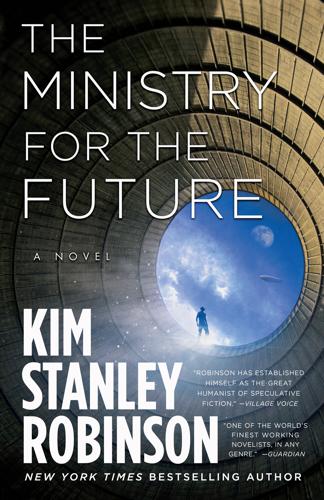
The Ministry for the Future: A Novel
by
Kim Stanley Robinson
Published 5 Oct 2020
Whether that kind of aggressive stance would be revealed as a true national position or the posturing of a radical faction remained to be seen. It depended, some thought, on how far India’s new national government was willing to go to back up this Kali group’s threats— to in effect unleash them. War in the age of the internet, the age of the global village, the age of drones, the age of synthetic biology and artificial pandemics— this was not the same as war in the past. If they were serious, it could get ugly. In fact, if even just the Kali faction of the Indian polity was serious, it could get very ugly. But two could play at those games, indeed everyone could play those games— not just the 195 nations that had signed the Paris Agreement, but all the various kinds of non-state actors, right down to individuals.